Forums
- Forums
- Axis And Allies Forum
- General Discussion
- Aviation News
Aviation News
Post a reply
- Go to Next topic
- Go to Welcome
- Go to Introduce Yourself
- Go to General Discussion
- Go to Screenshots, Images and Videos
- Go to Off topic
- Go to Works in Progress
- Go to Skinning Tips / Tutorials
- Go to Skin Requests
- Go to IJAAF Library
- Go to Luftwaffe Library
- Go to RAF Library
- Go to USAAF / USN Library
- Go to Misc Library
- Go to The Ops Room
- Go to Made in Germany
- Go to Campaigns and Missions
- Go to Works in Progress
- Go to Juri's Air-Raid Shelter
- Go to Campaigns and Missions
- Go to Works in Progress
- Go to Skinpacks
- Go to External Projects Discussion
- Go to Books & Resources
-
 Main AdminMARINE CORPS BASE CAMP PENDLETON, Calif. (July 9, 2018) ? A U.S. Marine Corps CH-53E Super Stallion helicopter passes by during helocast training with Marines from 1st Reconnaissance Battalion and Canadian soldiers with the Royal 22e R?giment as part of Rim of the Pacific (RIMPAC) exercise off the coast of Marine Corps Base Camp Pendleton, California, July 9, 2018. Helocasting is an airborne technique used by small unit, reconnaissance forces to insert into a military area of operations or maritime insertion point. RIMPAC demonstrates the value of amphibious forces and provides high-value training for task-organized, highly capable Marine Air-Ground Task Forces enhancing the critical crisis response capability of U.S. forces and partners globally. Twenty-five nations, 46 ships, five submarines, about 200 aircraft and 25,000 personnel are participating in RIMPAC from June 27 to Aug. 2 in and around the Hawaiian Islands and Southern California. (U.S. Marine Corps photo by Cpl. Robert G. Gavaldon)
Main AdminMARINE CORPS BASE CAMP PENDLETON, Calif. (July 9, 2018) ? A U.S. Marine Corps CH-53E Super Stallion helicopter passes by during helocast training with Marines from 1st Reconnaissance Battalion and Canadian soldiers with the Royal 22e R?giment as part of Rim of the Pacific (RIMPAC) exercise off the coast of Marine Corps Base Camp Pendleton, California, July 9, 2018. Helocasting is an airborne technique used by small unit, reconnaissance forces to insert into a military area of operations or maritime insertion point. RIMPAC demonstrates the value of amphibious forces and provides high-value training for task-organized, highly capable Marine Air-Ground Task Forces enhancing the critical crisis response capability of U.S. forces and partners globally. Twenty-five nations, 46 ships, five submarines, about 200 aircraft and 25,000 personnel are participating in RIMPAC from June 27 to Aug. 2 in and around the Hawaiian Islands and Southern California. (U.S. Marine Corps photo by Cpl. Robert G. Gavaldon)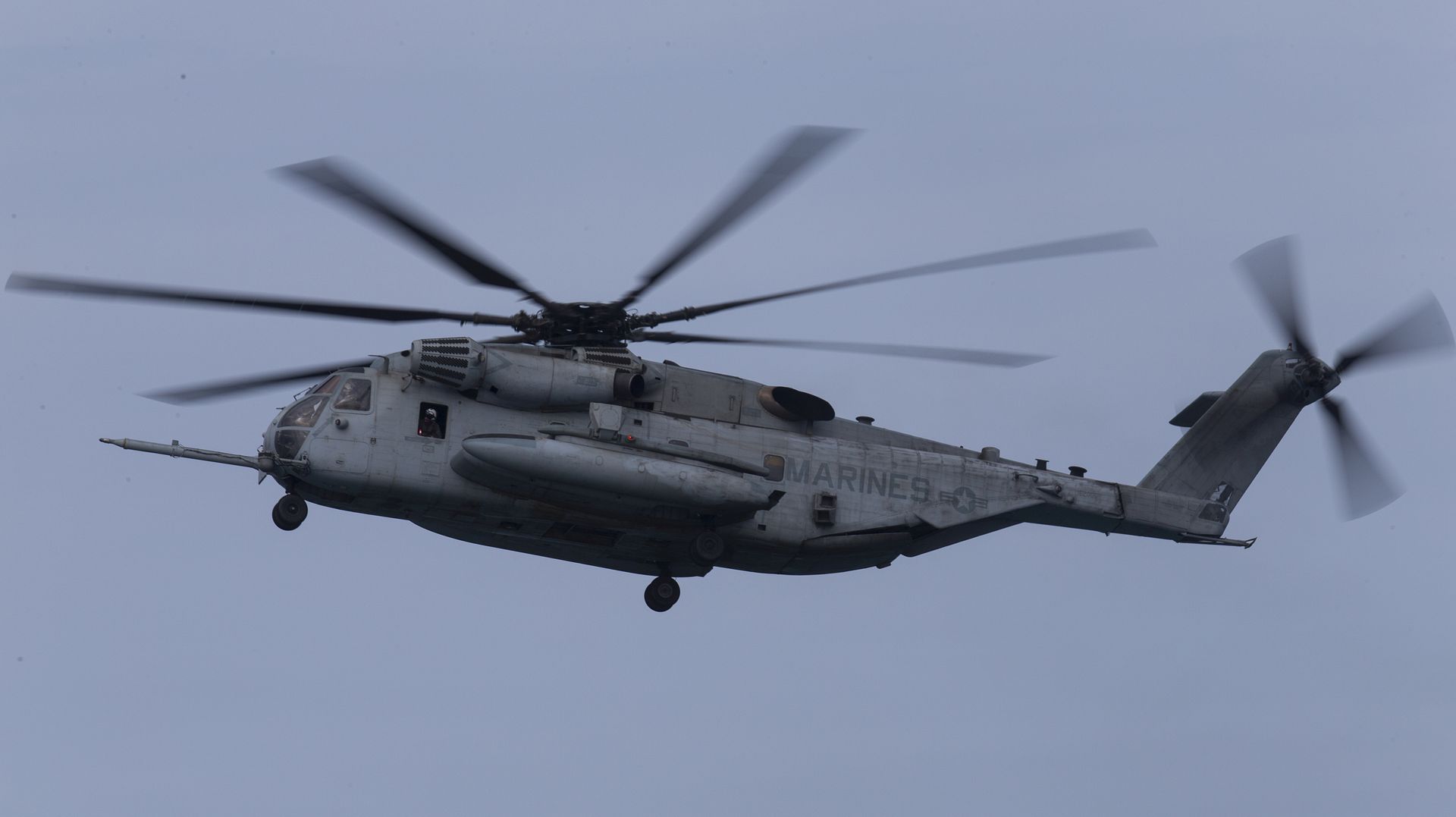
ATLANTIC OCEAN (July 10, 2018) An F/A-18E Super Hornet, assigned to the ?Knighthawks? of Strike Fighter Squadron (VFA) 136, performs a fly by of the Nimitz-class aircraft carrier USS Harry S. Truman (CVN 75). Harry S. Truman is currently deployed as part of an ongoing rotation of U.S. forces supporting maritime security operations in international waters around the globe. (U.S. Navy photo by Mass Communication Specialist 3rd Class Rebekah A. Watkins/Released)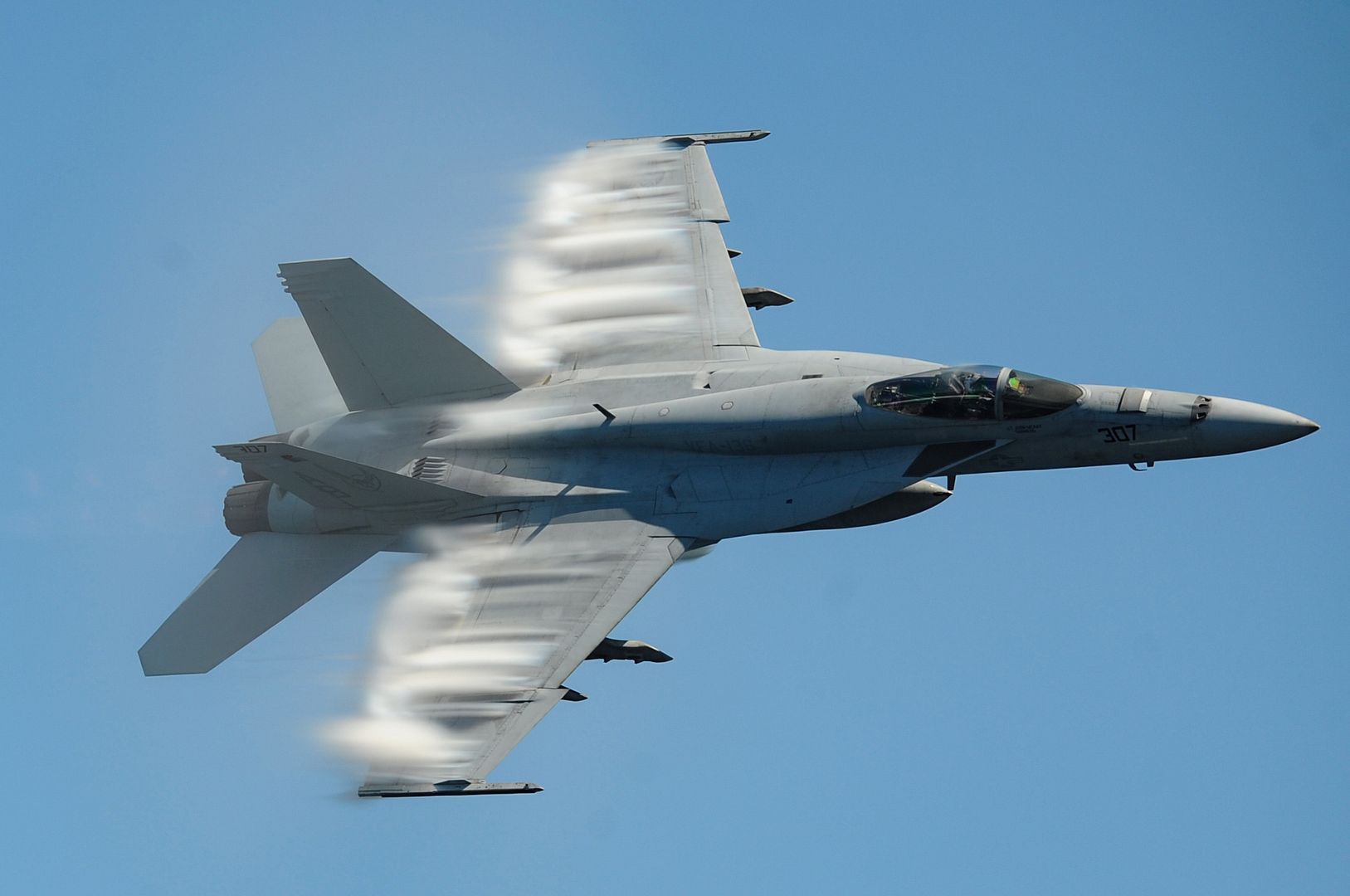
U.S. Air Force aircraft maintenance personnel and fighter pilots from the South Carolina Air National Guard's 169th Fighter Wing at McEntire Joint National Guard Base, South Carolina, perform preflight and launch operations to deploy F-16 Block 52 Fighting Falcon fighter jets for an AEF rotation to Southwest Asia, July 11, 2018. The South Carolina Air National Guard?s 169th Fighter Wing is deploying nearly 300 Airmen and approximately a dozen F-16 Block 52 Fighting Falcon fighter jets to the 407th Air Expeditionary Group in Southwest Asia in support of an Air Expeditionary Force rotation. (U.S. Air National Guard photo's by Senior Master Sgt. Edward Snyder)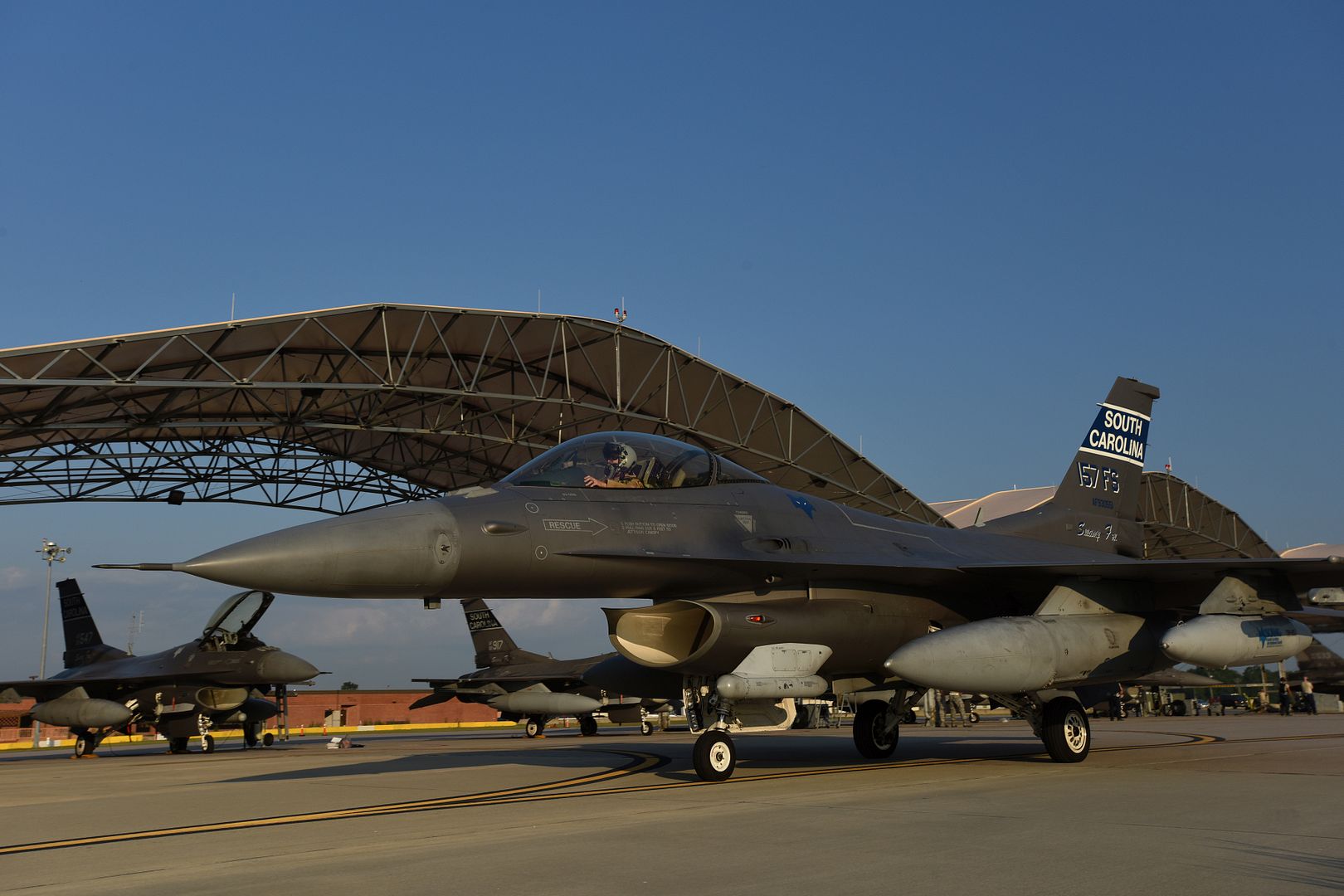


An mQ-9B SkyGuardian prepares to taxi before a historic trans-Atlantic flight July 10, 2018, from Grand Forks Air Force Base, North Dakota, to Gloucestershire, England. The high-altitude, long-endurance unmanned-aircraft made the estimated 20-hour, three-thousand-mile flight to support the Royal Air Force?s centennial celebration. (U.S. Air Force photo's by Airman 1st Class Elora J. Martinez)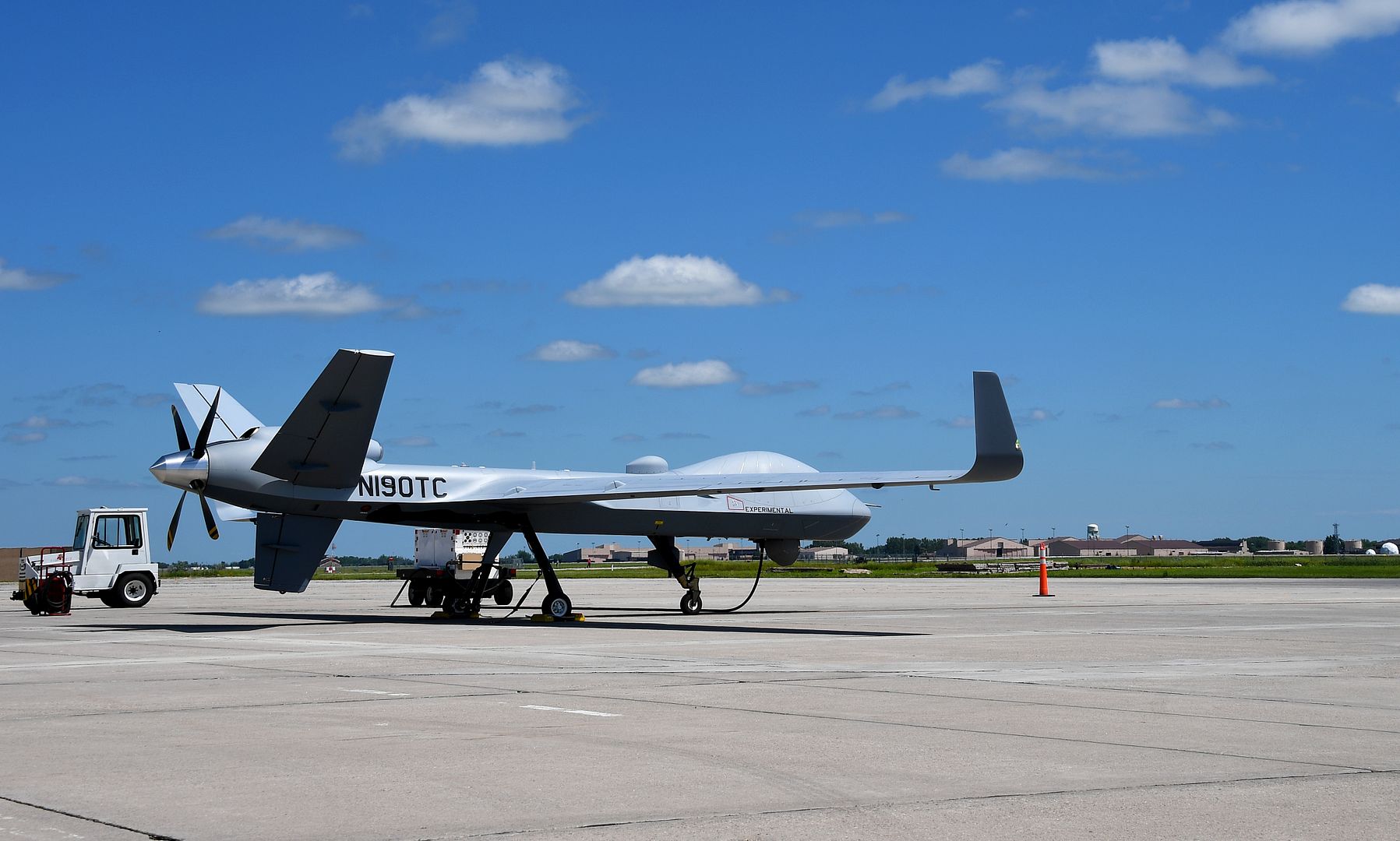
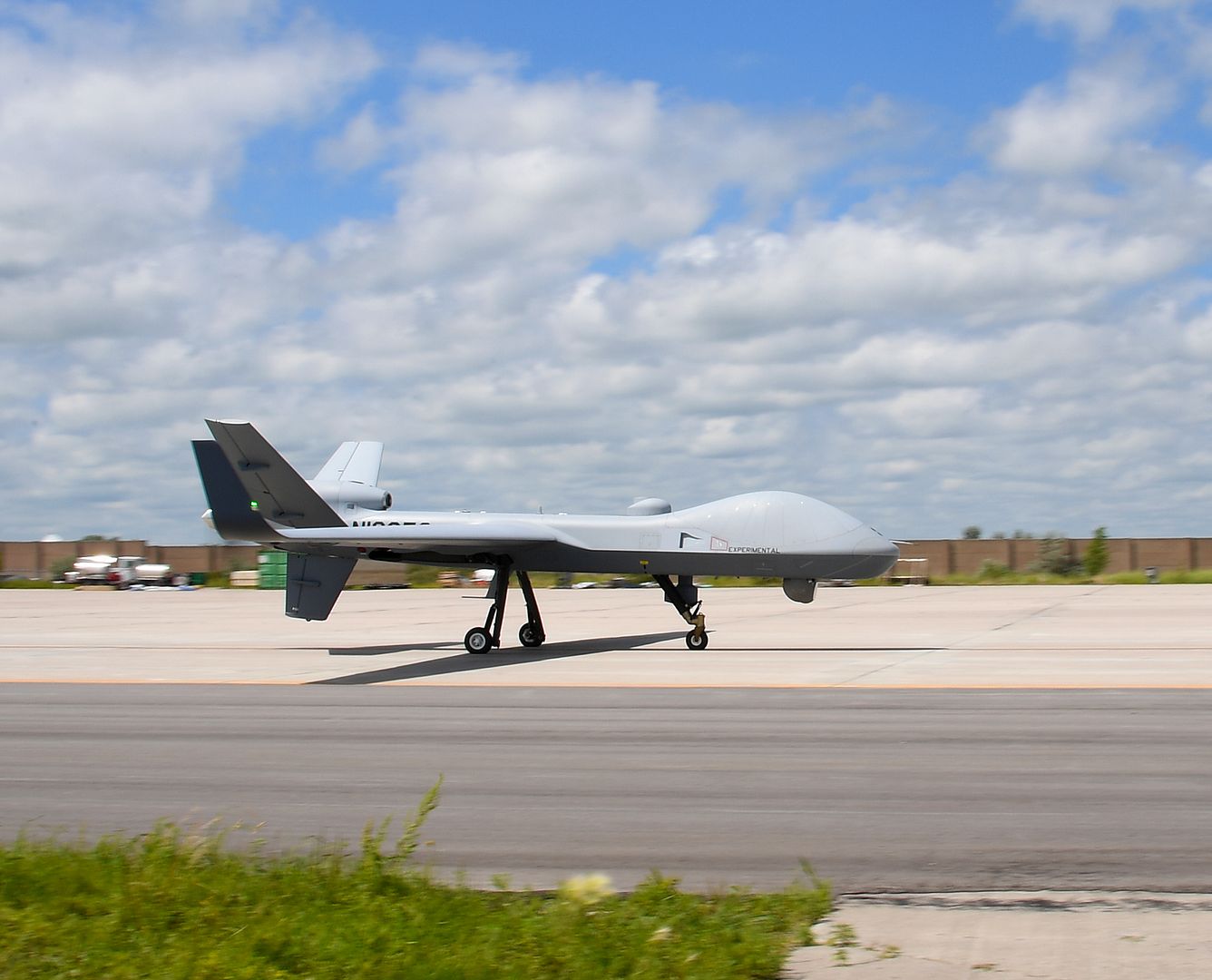
-
 Main AdminU.S. Air Force F-15 Eagle's assigned to the 67th Fighter Squadron, Kadena Air Base, Japan, take off at Yokota Air Base, Japan, July 11, 2018, after Tropical Cyclone Conditions of Readiness (TCCOR) is declared All Clear at Kadena. Eighteen F-15 Eagle fighters evacuated to Yokota due to Typhoon Maria. The F-15 Eagle is a purpose-built air superiority fighter capable of detecting, acquiring and tracking enemy aircraft.(U.S. Air Force photo's by Yasuo Osakabe)
Main AdminU.S. Air Force F-15 Eagle's assigned to the 67th Fighter Squadron, Kadena Air Base, Japan, take off at Yokota Air Base, Japan, July 11, 2018, after Tropical Cyclone Conditions of Readiness (TCCOR) is declared All Clear at Kadena. Eighteen F-15 Eagle fighters evacuated to Yokota due to Typhoon Maria. The F-15 Eagle is a purpose-built air superiority fighter capable of detecting, acquiring and tracking enemy aircraft.(U.S. Air Force photo's by Yasuo Osakabe)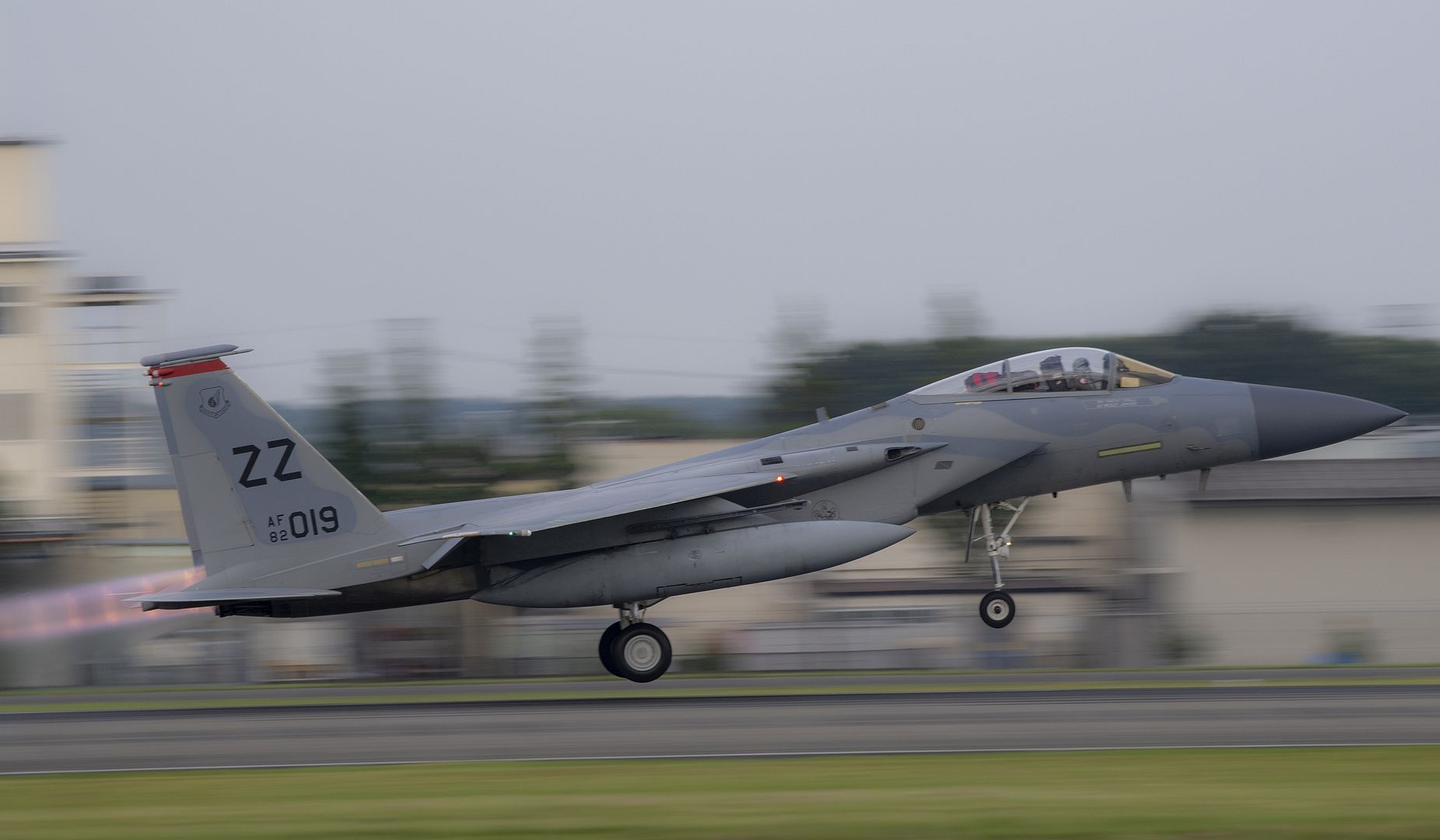
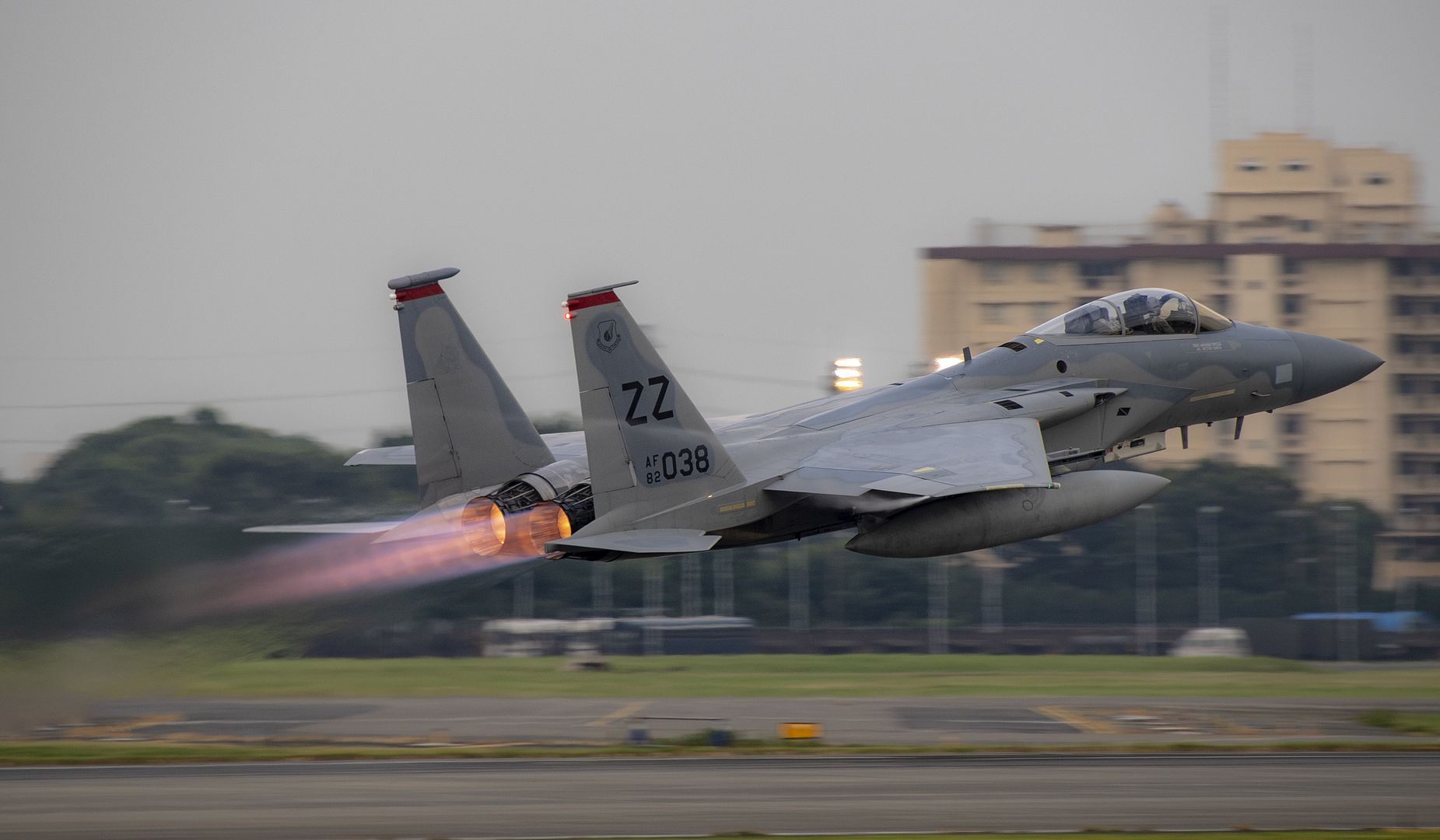
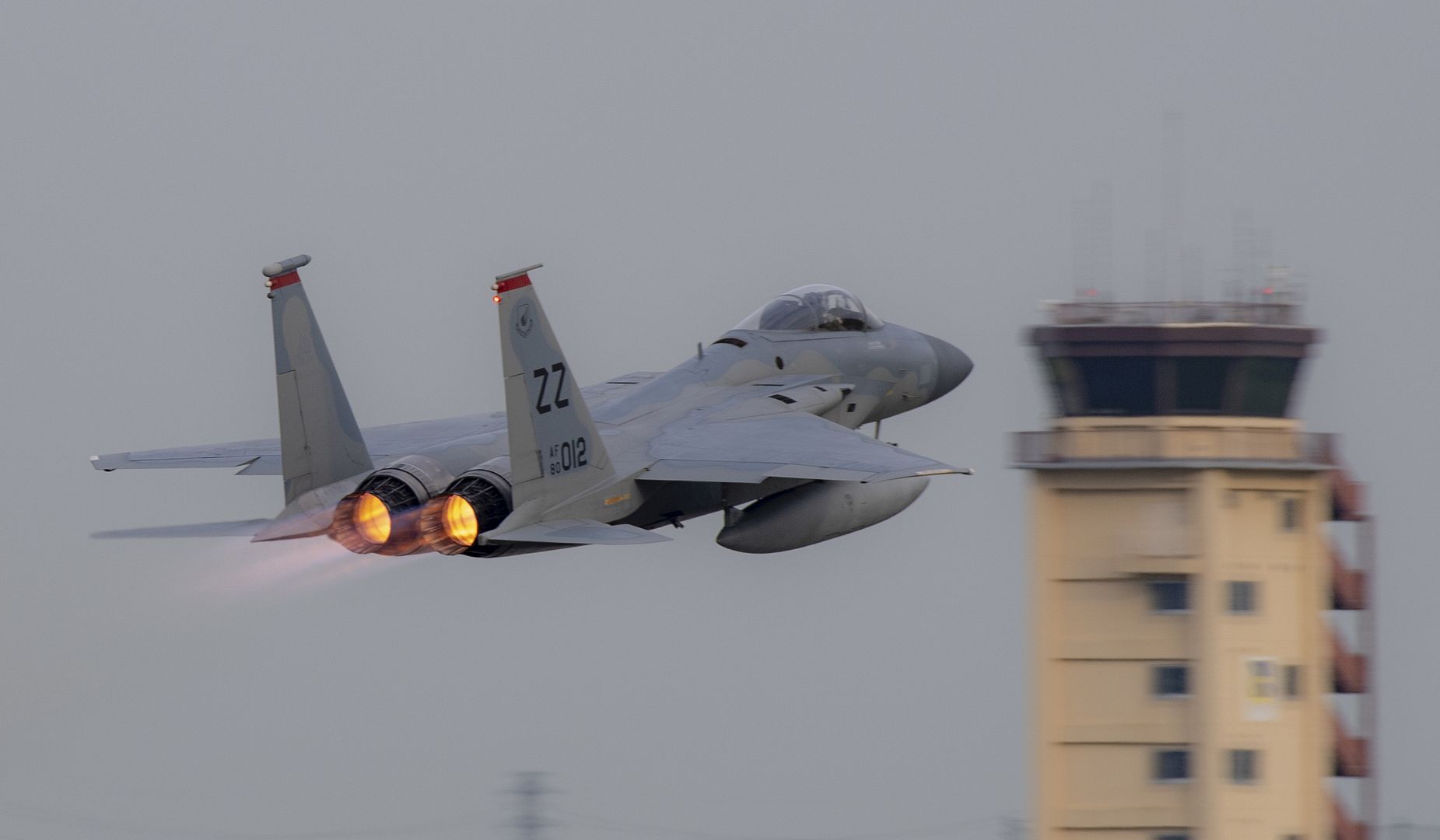
U.S. Airmen of the 169th Fighter Wing of the South Carolina Air National Guard at McEntire Joint National Guard Base, South Carolina, board a civilian-contracted large transport aircraft, July 11, 2018. The South Carolina Air National Guard?s 169th Fighter Wing is deploying nearly 300 Airmen and approximately a dozen F-16 Block 52 Fighting Falcon fighter jets to the 407th Air Expeditionary Group in Southwest Asia in support of an Air Expeditionary Force rotation. (U.S. Air National Guard photo by Senior Airman Ashleigh S. Pavelek)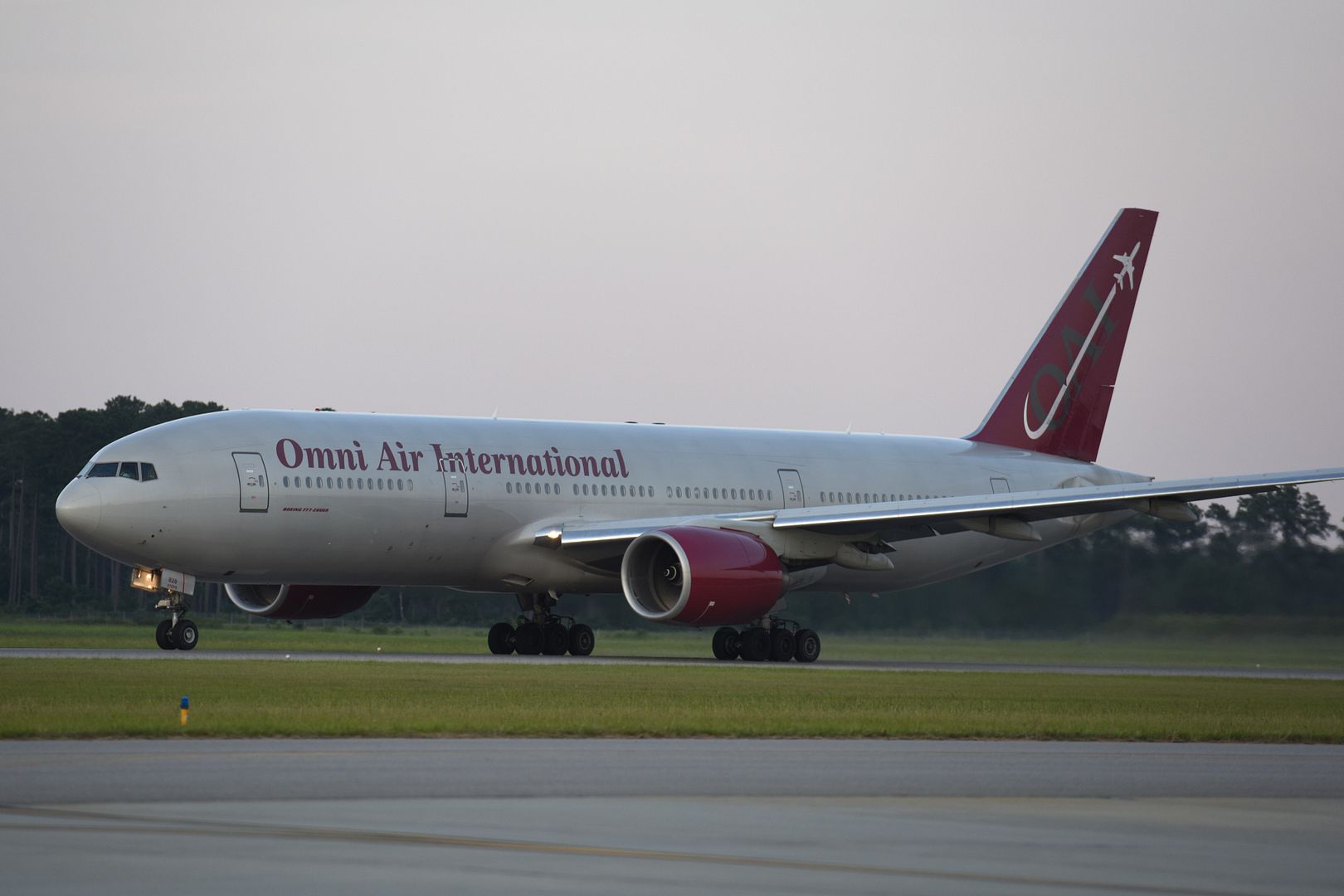
An F-16 Fighting Falcon taxis to the runway in preparation for takeoff July 11, 2018, on Truax Field, Wisconsin. The F-16 is a highly maneuverable and compact multi-role fighter aircraft. (U.S. Air National Guard photo by Airman Cameron Lewis)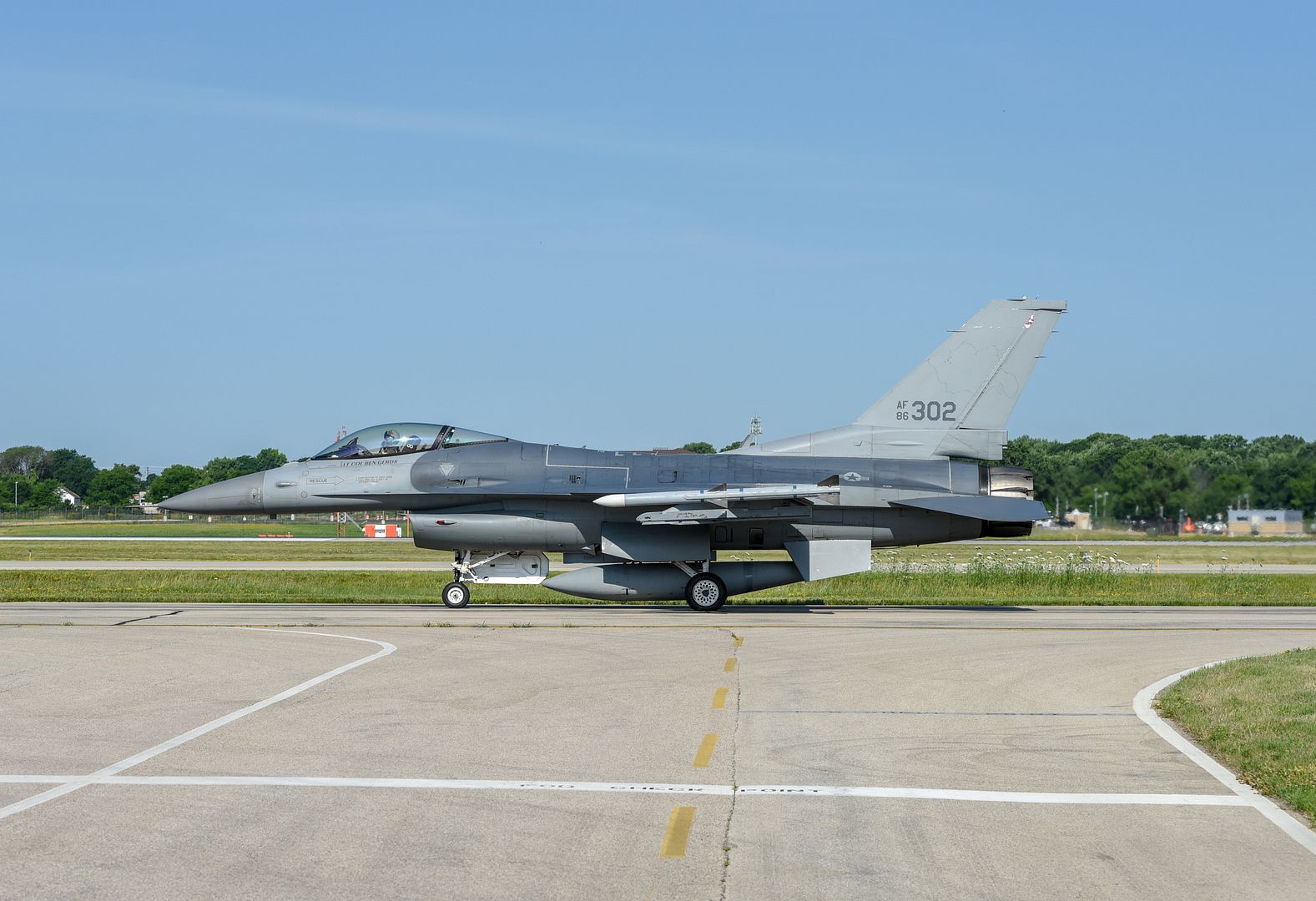
07.11.18.
Good morning, Jacksonville. It was a beautiful sunrise this morning on the Fleet Readiness Center Southeast flight line. Aircraft systems inspectors Eric White and Deandre Johnson were preparing a newly maintained T-6 Texan II for an engine turn-up this morning, (U.S. Navy photo by Clifford Davis/Released)
PACIFIC OCEAN (July 10, 2018) An MH-65 Dolphin helicopter from Coast Guard Air Station Barbers Point, Hawaii, prepares for takeoff July 10, 2018, on the flight deck of the USCGC Bertholf (WMSL 750), 15 miles south of Oahu in support of RIMPAC 2018. Twenty-five nations, more than 46 ships and 5 submarines, about 200 aircraft and 25,000 personnel are participating in RIMPAC from June 27 to Aug. 2 in and around the Hawaiian Island and Southern California. The world?s largest international maritime exercise, RIMPAC provides a unique training opportunity while fostering and sustaining cooperative relationships among participants critical to ensuring the safety of sea lanes and security on the world?s oceans. RIMPAC 2018 is the 26th exercise in the series that began in 1971. (U.S. Coast Guard photo by Petty Officer 2nd Class David Weydert/Released)
PHILADELPHIA, Pa., July 11, 2018 ? Boeing [NYSE: BA] has received a $139.8 million contract to provide four MH-47G Block II Chinook helicopters to the U.S. Army Special Operations Aviation Command.
?The Army uses the MH-47G for some of its most difficult and challenging missions,? said Pat Donnelly, director, H-47 Domestic and Foreign Military Sale Programs. ?By incorporating key Block II features we significantly extend the service life, enhance performance, and maintain Chinook?s position as the world?s preeminent special operations helicopter.?
These helicopters mark the start of a Block II production run expected to extend into the late 2020s.
The Army has 69 MH-47G Chinook helicopters. Concurrent with the MH-47G enhancements, Boeing is developing a Block II configuration for the U.S. Army CH-47F Chinook.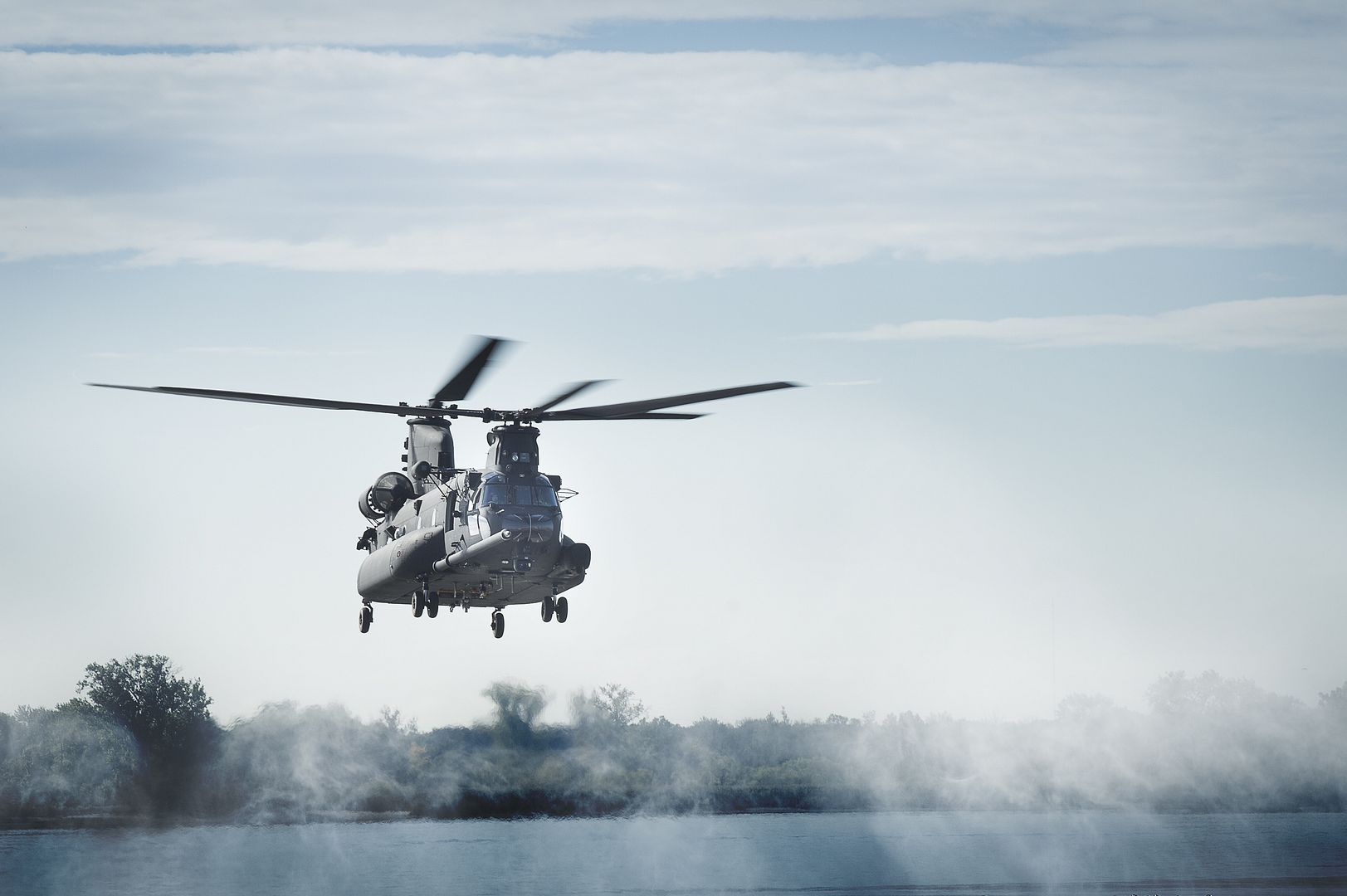
Airbus has just delivered another A400M to the Turkish Air Force. It becomes the 8th A400M delivered in 2018 as of June 19th 2018.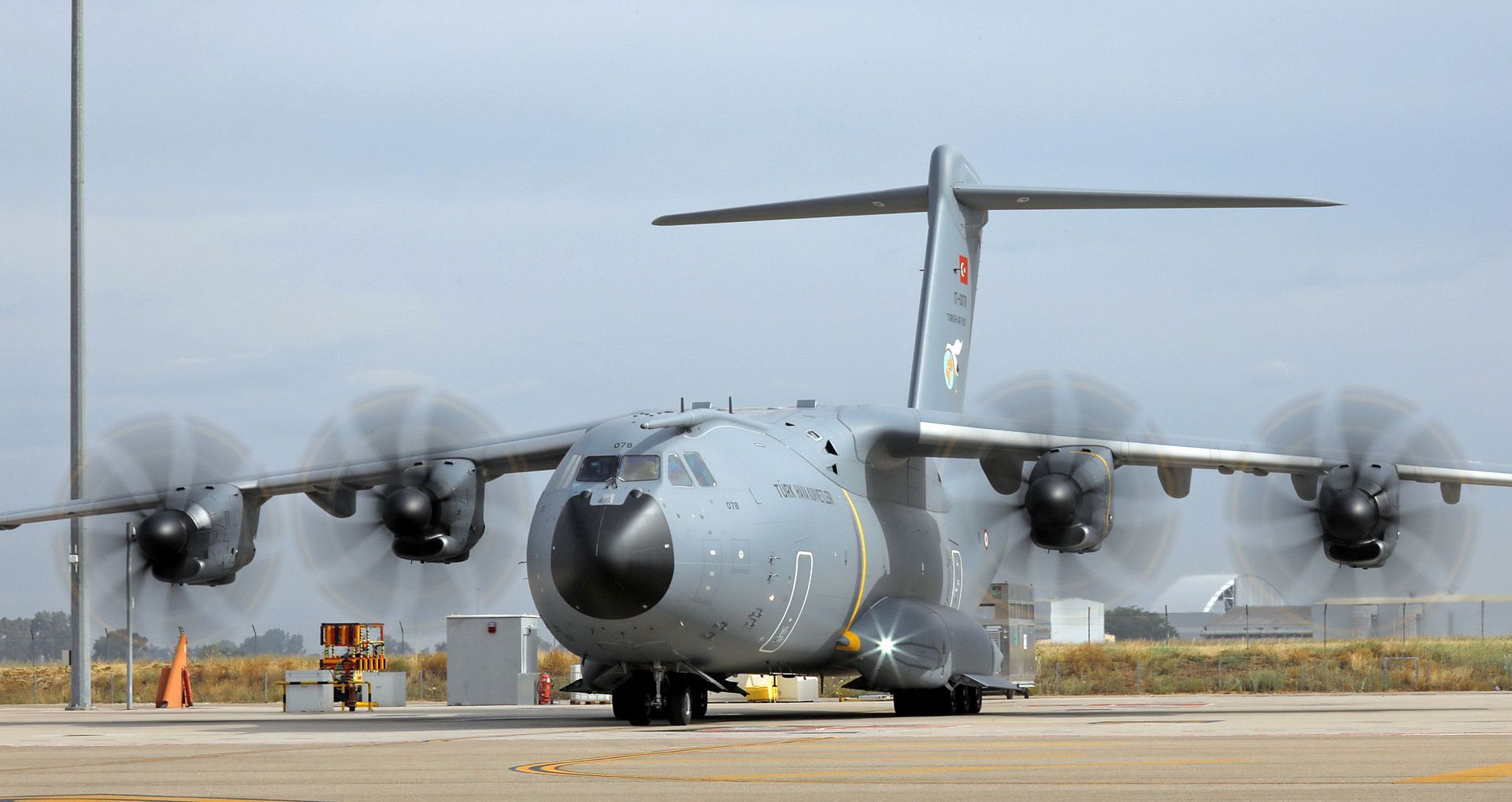
Madrid, 12 July 2018 ? Airbus Defence and Space has followed its earlier achievement in demonstrating Automatic Air-to-Air (A3R) refuelling of a fighter with another world-first ? the same operation performed with a large receiver aircraft.
In a joint operation with the Royal Australian Air Force (RAAF), which is collaborating with Airbus in development of this pioneering technology, Airbus? A310 company development tanker performed seven automatic contacts with a RAAF KC-30A Multi Role Tanker Transport, also made by Airbus.
The system requires no additional equipment on the receiver and is intended to reduce refuelling boom operator workload, improve safety, and optimise the rate of air-to-air refuelling (AAR) in operational conditions to maximise aerial superiority. Airbus has begun work towards introducing the system on the current production A330 Multi Role Tanker Transport (A330 MRTT).
During initial approach of the receiver, boom control is performed by the tanker?s Air Refuelling Operator (ARO) as usual. Innovative passive techniques such as image processing are then used to determine the receiver?s refuelling receptacle position and when the automated system is activated, a fully automated flight control system flies and maintains the boom aligned with the receiver?s receptacle. The telescopic beam inside the boom can be controlled in a range of ways including: manually by the ARO; a relative distance-keeping mode; or full auto-mode to perform the contact.
In the 20 June flight off the southern Spanish coast, the A310 tanker performed the scheduled seven contacts over a two-hour test period.
David Piatti, who again acted as Airbus Test ARO, or ?boomer?, on the A310, said: ?It was extremely impressive to see how accurately the A3R system tracks the receiver. It can be very useful to be able to refuel another tanker or transport, for example to extend its deployment range or to avoid taking fuel back to base, but it is also a challenging operation and this system has the potential to reduce workload and the risk involved.?
The trial was conducted in conjunction with Test Pilots and Flight Test Engineers from the RAAF?s Aircraft Research and Development Unit (ARDU).
Squadron Leader Lawry Benier, Executive Officer for ARDU, said the RAAF were assisting Airbus Defence & Space on the development of A3R and other technologies to increase the utility of the KC-30A within a battlespace.
?It?s very encouraging to come to Spain and see the progress that?s been made with A3R, and be able to witness it firsthand refuelling our KC-30A,? Squadron Leader Benier said.
?Refuelling large receivers is a role RAAF has conducted extensively on operations and exercises, allowing us to extend the reach and responsiveness of our air mobility fleet, as well as keep surveillance aircraft in the air for longer.?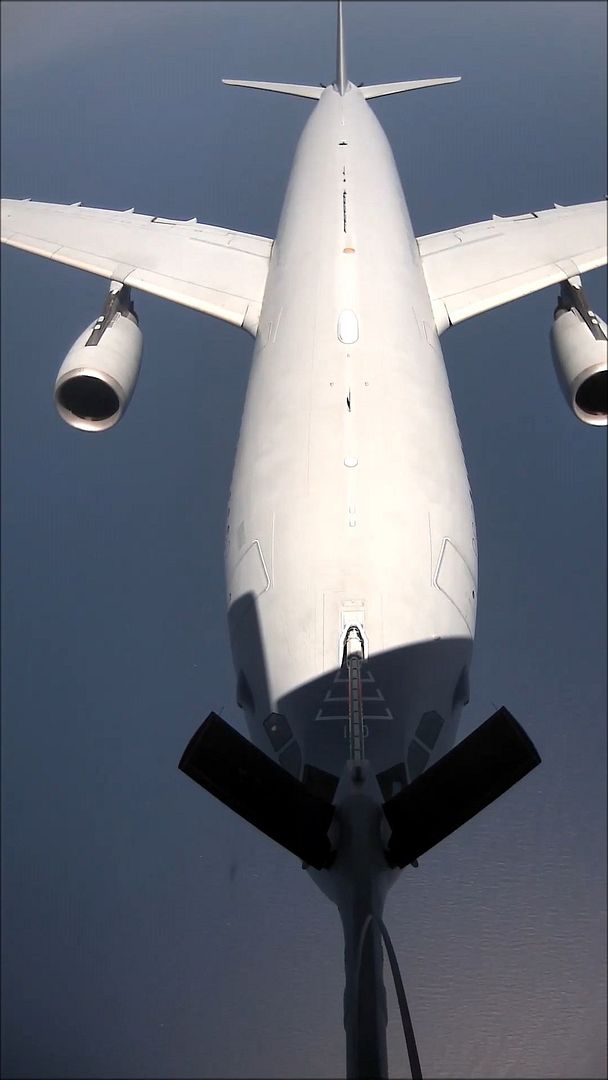
-
 Main AdminMarines with Marine Light Attack Helicopter Training Squadron 303, Marine Aircraft Group 39, 3rd Marine Aircraft Wing, hover over the flight line in an AH-1Z Viper during a pre-flight inspection at Marine Corps Air Station Camp Pendleton, California, July 12, 2018. Marines tested the power of the engine to ensure that the aircraft was capable of taking off and conducting flight operations. (U.S. Marine Corps photo by Cpl. Dylan Chagnon)
Main AdminMarines with Marine Light Attack Helicopter Training Squadron 303, Marine Aircraft Group 39, 3rd Marine Aircraft Wing, hover over the flight line in an AH-1Z Viper during a pre-flight inspection at Marine Corps Air Station Camp Pendleton, California, July 12, 2018. Marines tested the power of the engine to ensure that the aircraft was capable of taking off and conducting flight operations. (U.S. Marine Corps photo by Cpl. Dylan Chagnon)
F-15Es from the 366th Fighter Wing, Mountain Home Air Force Base, Idaho are supported by a C -17 assigned to the 60th/349th Air Mobility Wing, Travis Air Force Base, California as part of an adaptive basing concept at Gowen Field, Boise, Idaho July 12, 2018. The exercise was part of Gunfighter Flag, a multi-service exercise designed to integrate multiple agencies and units. (U.S. Air National Guard photo's by TSgt. John Winn)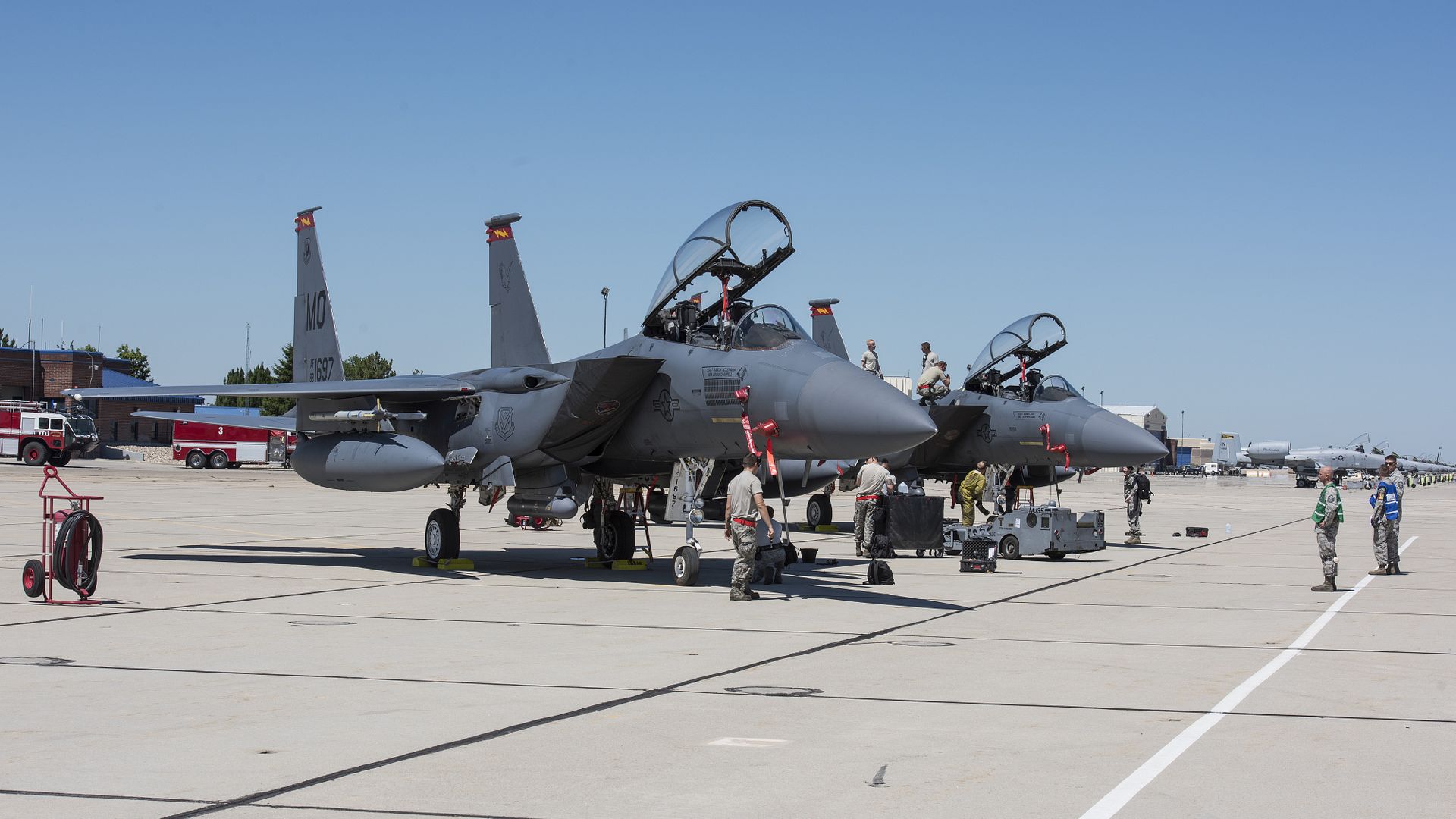
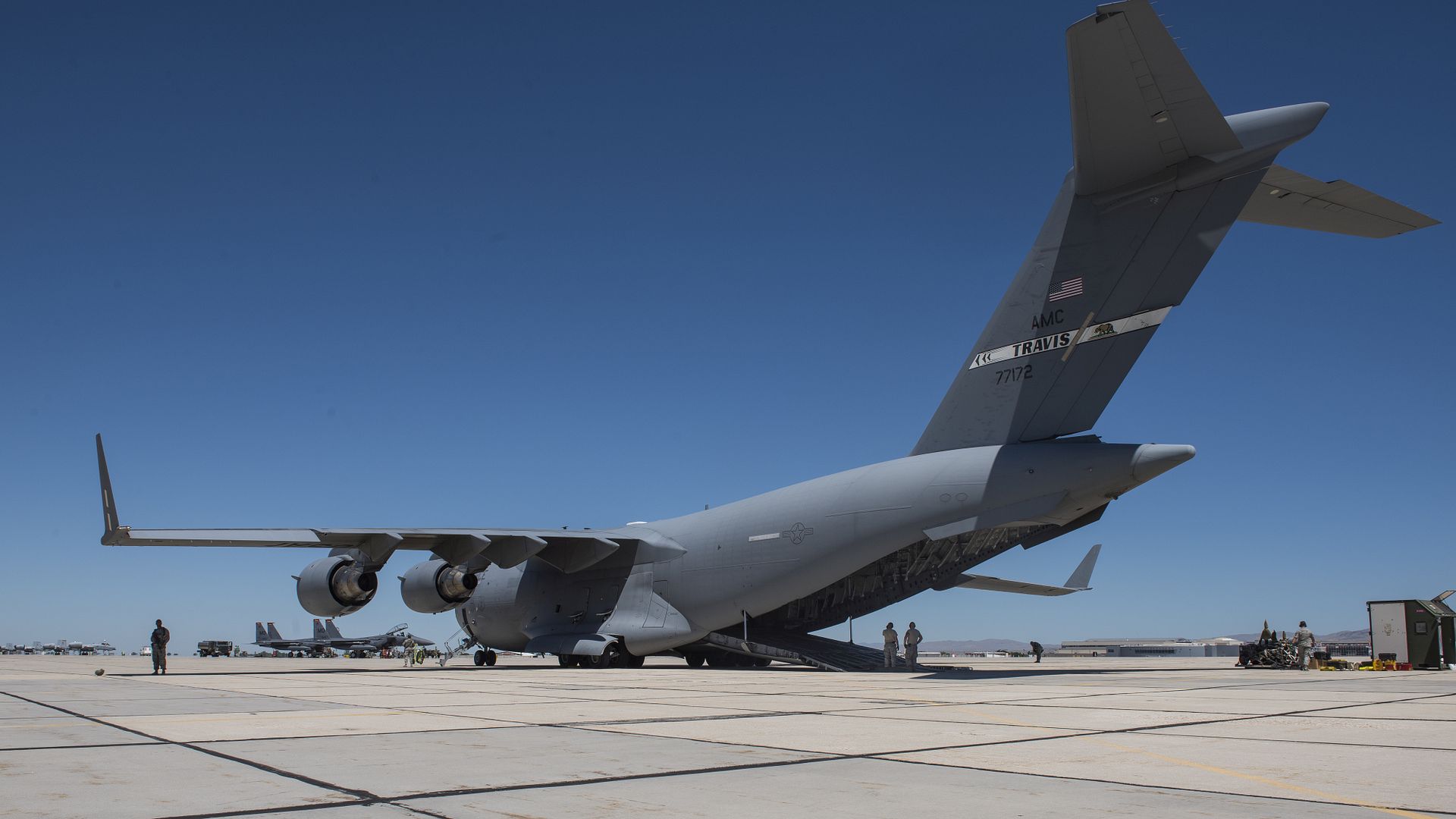
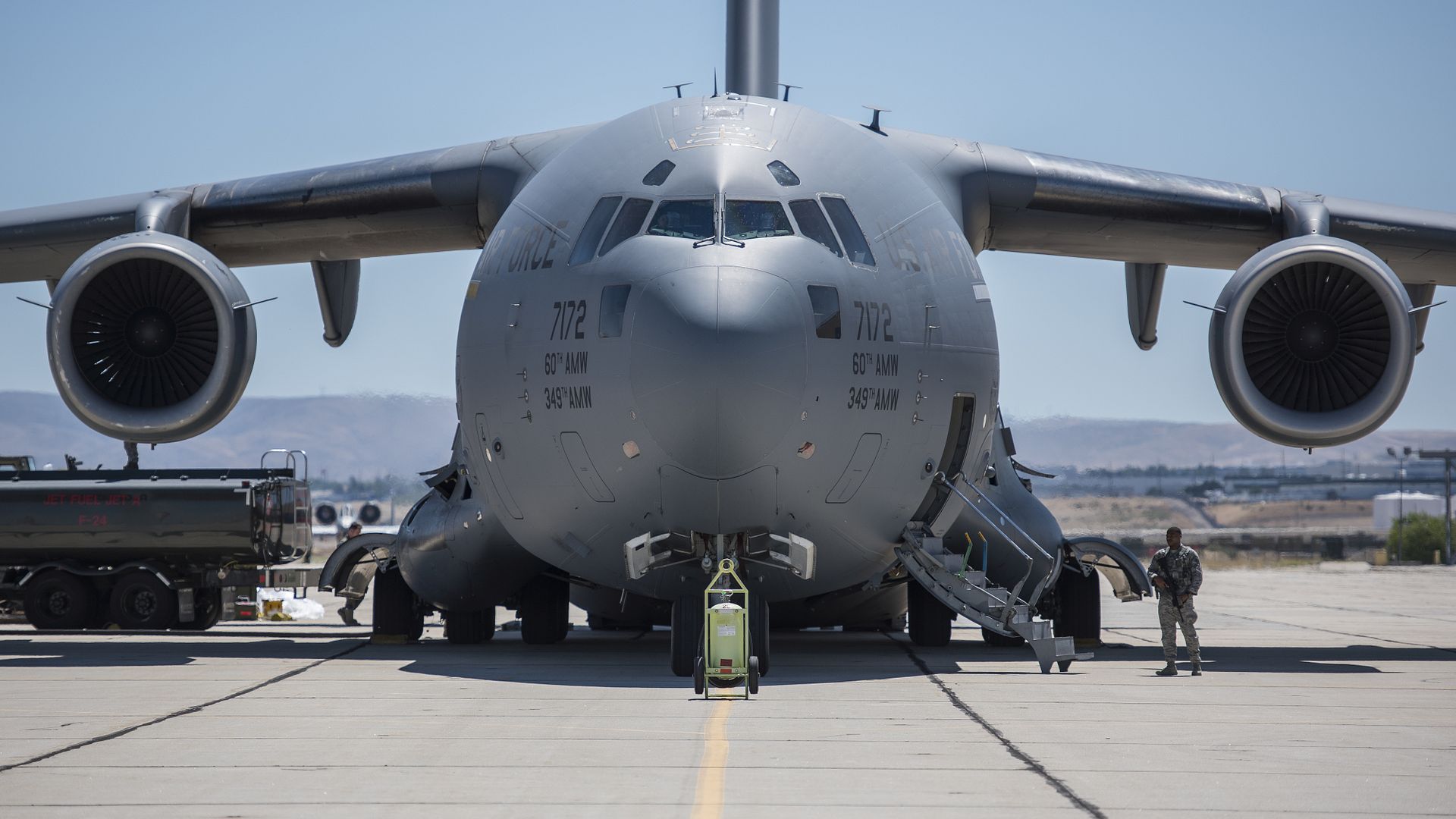
A U.S. Air Force KC-135 assigned to the 185th Air Refueling Wing is parked on the ramp as a thunderstorm approaches in Sioux City, Iowa July 13, 2018. U.S. Air National Guard photo by Tech. Sgt. Daniel Ter Haar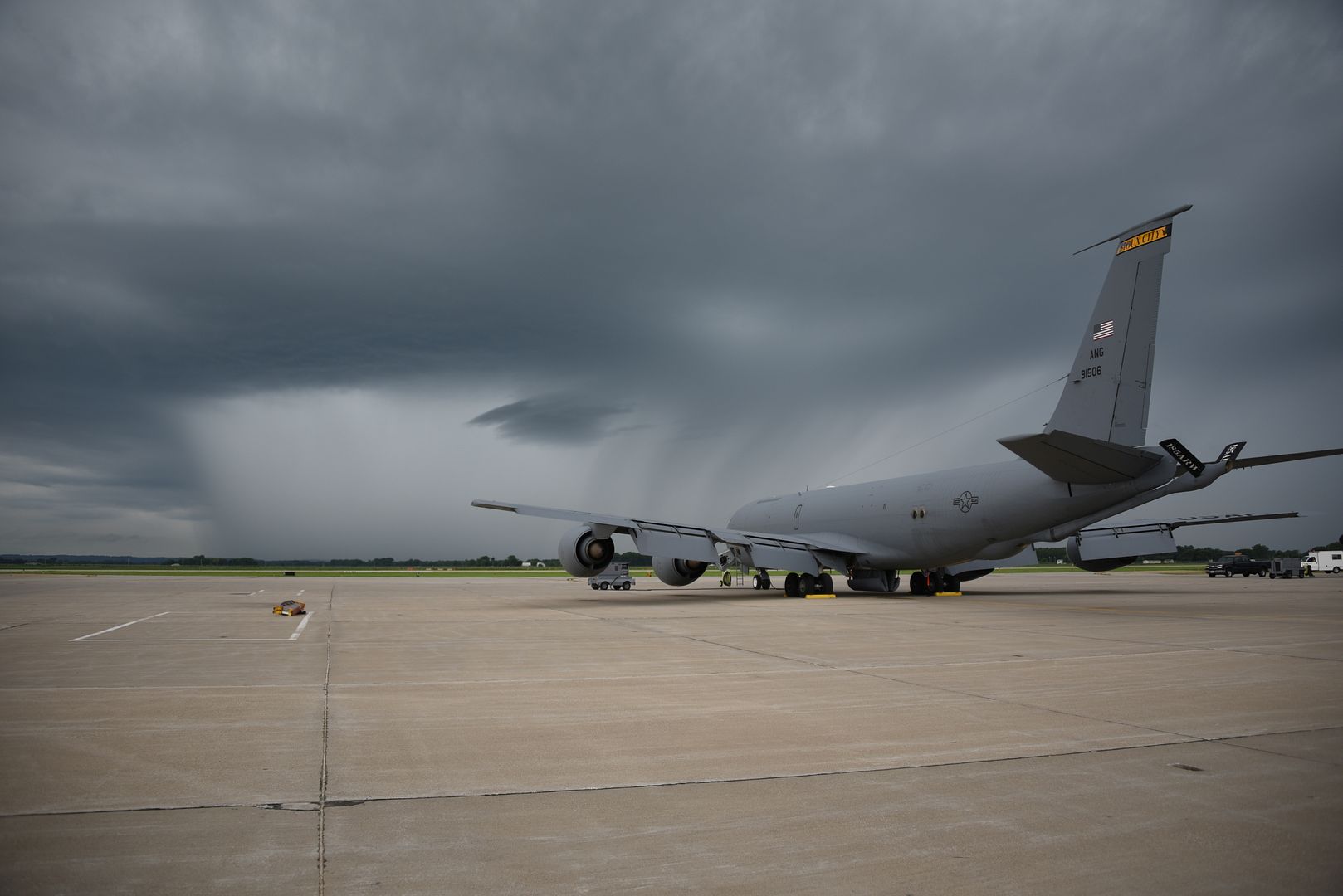
A U.S. Marine Corps EA-6B Prowler, assigned to Marine Tactical Electronic Warfare Squadron 2, expends flares while flying alongside a KC-135 Stratotanker assigned to the 28th Expeditionary Air Refueling Squadron during an aerial refueling mission in support of Operation Inherent Resolve over Iraq, June 28, 2018. The Prowler provides an umbrella of protection to Coalition aircraft and ground troops in the fight against ISIS by intercepting communications and denying the enemy?s ability to communicate. The aircraft has been involved in every American conflict since the Vietnam War. (U.S. Air Force photo by Staff Sgt. Keith James)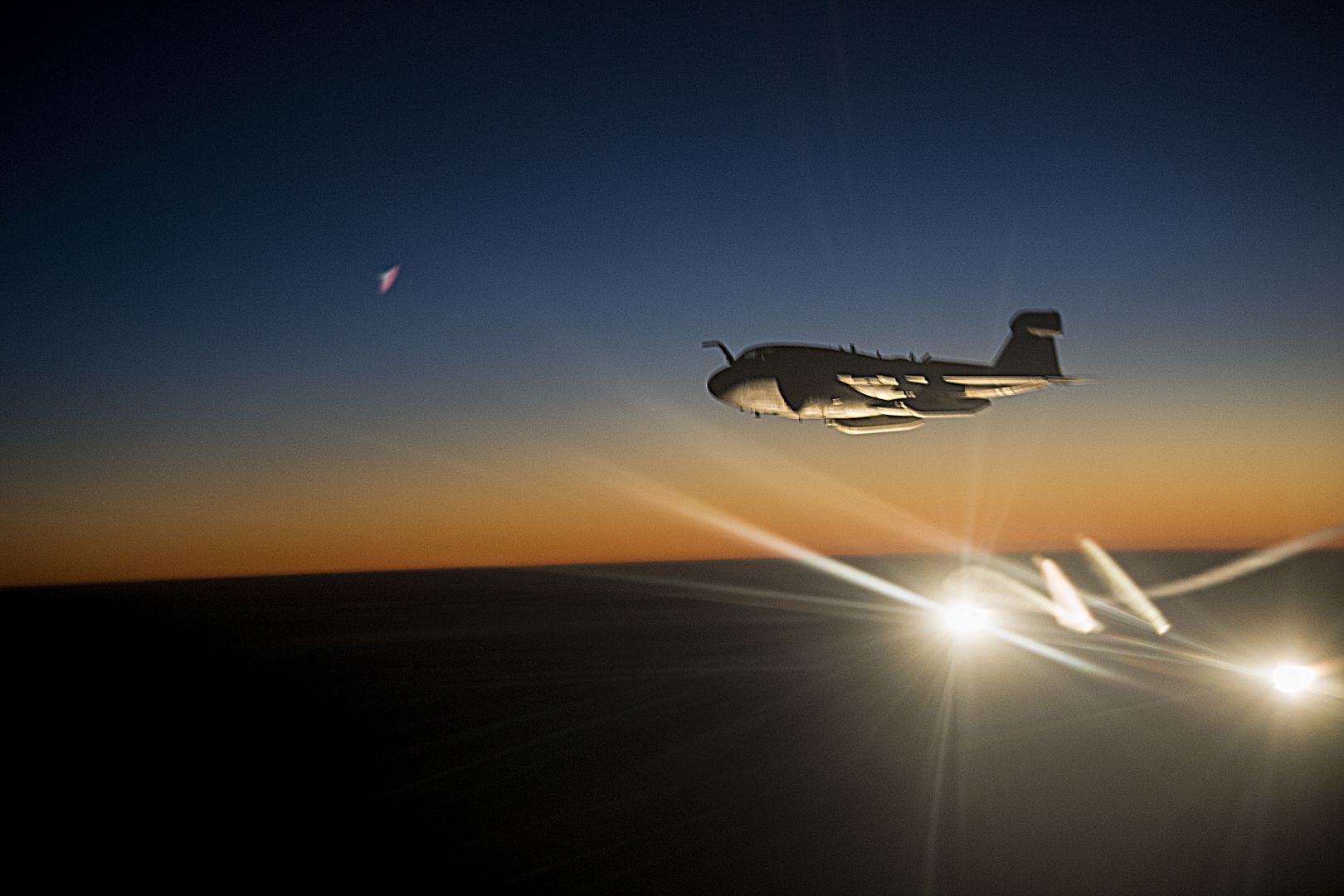
U.S. Air Force pilots assigned to the 28th Expeditionary Air Refueling Squadron taxi and prepare to park a KC-135 Stratotanker following an aerial refueling mission over Iraq, June 28, 2018. The KC-135 provides aerial refueling capabilities to the U.S. and Coalition forces working to defeat ISIS. (U.S. Air Force photo by Staff Sgt. Keith James)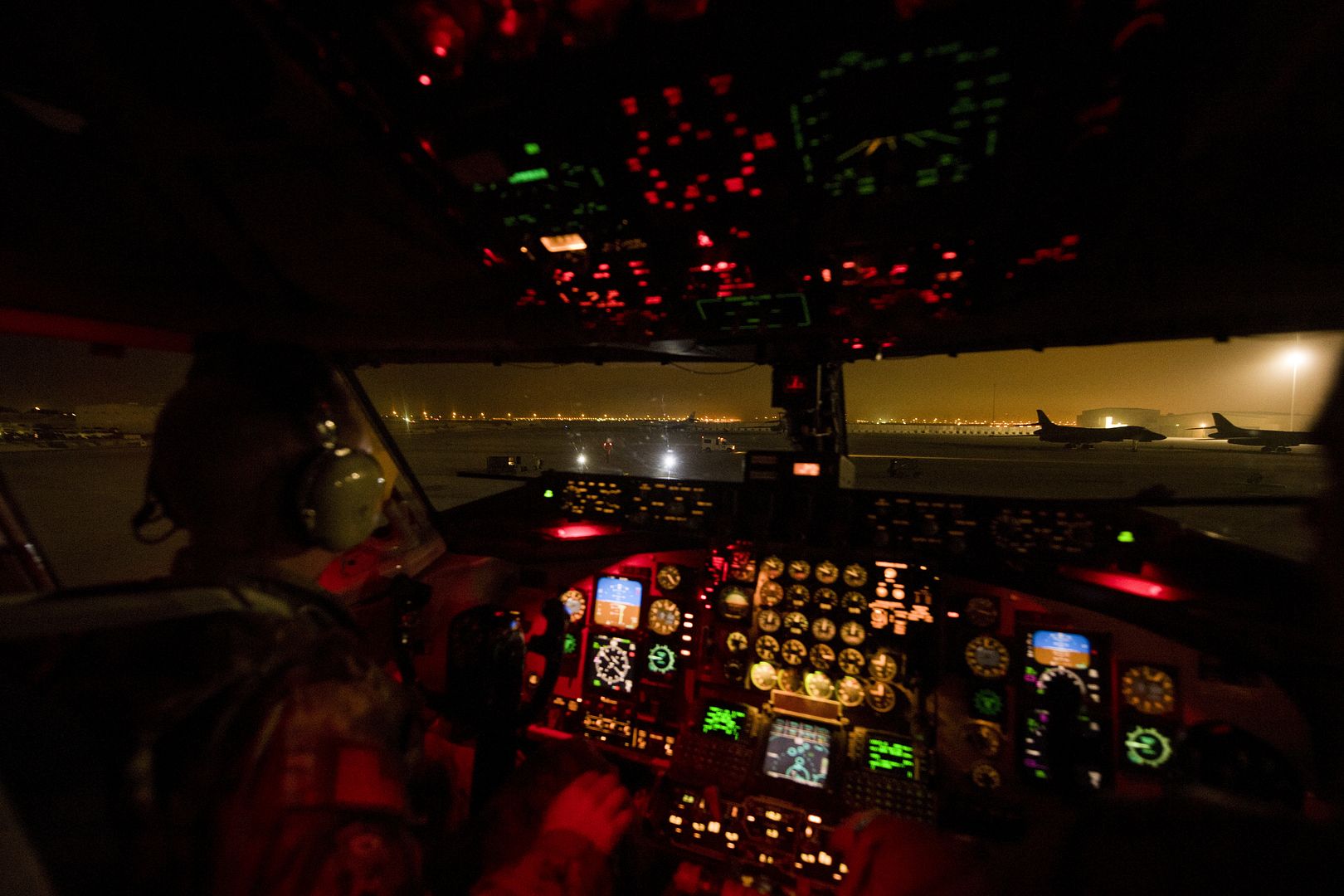
A U.S. Air Force F-16 Fighting Falcon banks away after receiving in-flight fuel from a KC-135 Stratotanker assigned to the 28th Expeditionary Air Refueling Squadron during an aerial refueling mission in support of Operation Inherent Resolve over Iraq, June 26, 2018. The 28th EARS is assigned to the 379th Expeditionary Operations Group and supports various operations in countries such as Iraq, Syria and Afghanistan. In conjunction with partner forces, Combined Joint Task Force - Operation Inherent Resolve (CJTF-OIR) defeats ISIS in designated areas of Iraq and Syria and sets conditions for follow-on operations to increase regional stability. (U.S. Air Force photo by Staff Sgt. Keith James)
WOODLAND HILLS, Calif. ? July 12, 2018 ? Northrop Grumman Corporation (NYSE: NOC) has delivered software to the U.S. Army for the UH-60V Black Hawk helicopter to enter Limited User Testing (LUT) ? a critical milestone leading into production.
Under a contract awarded in 2014, Northrop Grumman is partnering with the U.S. Army Prototype Integration Facility and prime contractor Redstone Defense Systems to modernize the Army?s fleet of UH?60L helicopters through cost-effective cockpit upgrades, replacing older analog gauges with digital electronic instrument displays.
Northrop Grumman is supplying the Integrated Avionics Suite for the upgraded aircraft, designated the UH-60V, which features one of the Army?s most advanced avionics solutions to enable the complex missions of the army aviation warfighter.
Through this latest milestone, Northrop Grumman has provided a digital cockpit software build that includes all the functionality required for LUT, which will evaluate the system?s operational readiness, capabilities and compatibility with the UH-60M Pilot-Vehicle Interface. This important test informs the Milestone C Low Rate Initial Production (LRIP) decision. The UH-60V is scheduled to enter LRIP in 2019.
?This software delivery milestone is an important step forward in our journey to provide cutting-edge capabilities and mission-enabling solutions to warfighters through an affordable, low-risk digital cockpit upgrade,? said Ed Griebel, director, land & avionics C4ISR division, Northrop Grumman. ?Our mission solution preserves investment in the Black Hawk fleet while modernizing the aircraft to provide warfighters with a decisive advantage.?
Northrop Grumman?s scalable, fully integrated mission equipment package enables enhanced pilot situational awareness and mission safety, as well as decreased pilot workload and life cycle cost. The UH-60V?s pilot-vehicle interface (PVI) is nearly identical to the UH?60M PVI, providing common training and operational employment.
Northrop Grumman?s open architecture approach provides greater flexibility and enables upgrades to be done with or without the original equipment manufacturer?s involvement. In addition to the UH-60V, Northrop Grumman?s scalable and fully integrated architecture is and can be applied to numerous platforms such as the E?2D, AH-1F/S and other aircraft worldwide. The operators of these aircraft can reduce their logistics footprint by having common avionics in multiple platforms and avoid sustaining large component inventories.
The UH-60V meets the standards for safety-critical software development and is designed to comply with the Federal Aviation Administration and European Aviation Safety Agency?s Global Air Traffic Management requirements, enabling the system to traverse military and civilian airspace worldwide. It is also certifiable and compliant with safety-critical avionics standards such as DO-178C.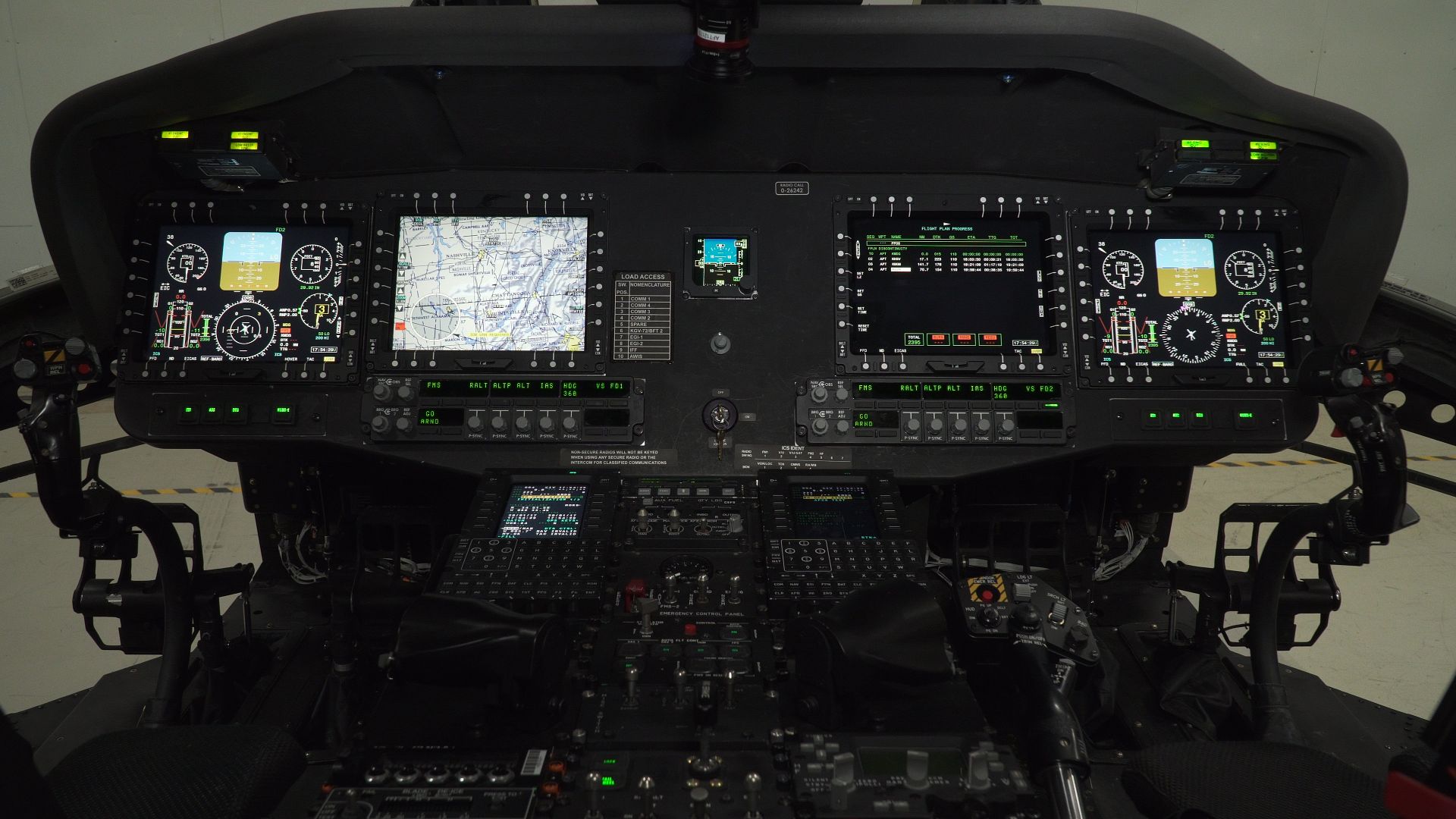
Donauw?rth ? The second prototype of the NH90 Sea Lion has performed its first flight in serial configuration on July 10. This event marks the beginning of the helicopter?s qualification phase together with the customer?s official authorities. When the qualification phase is finished, the German customer will release the military type certificate to allow the first serial delivery, which is scheduled for end of 2019. Altogether 18 helicopters are on order.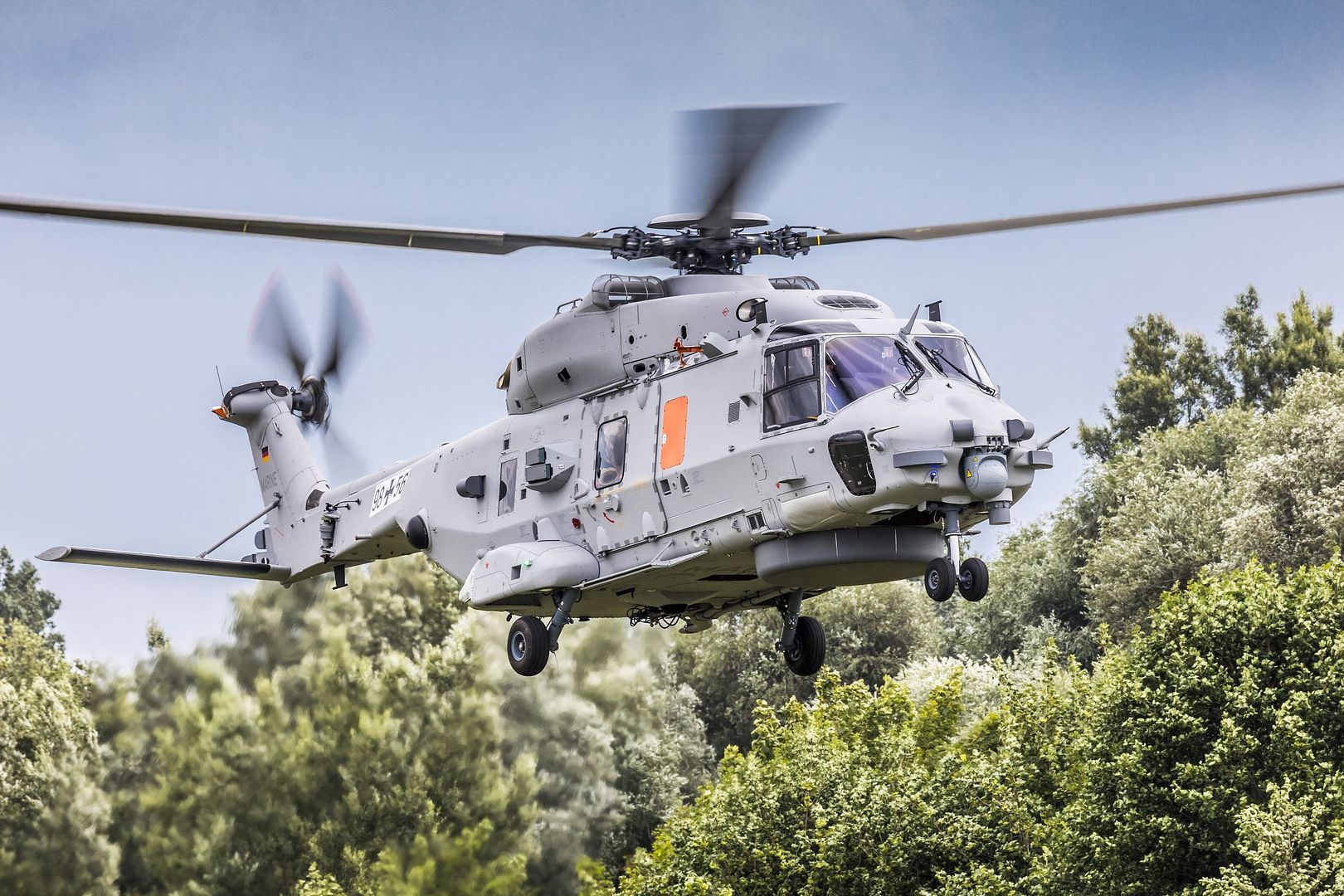
Turkish Airlines (THY) took delivery of the first A321neo in Cabin Flex configuration at the Airbus facilities in Hamburg, Germany. This version is the latest addition to the successful A320 Family. By applying modifications to the fuselage, it enables flexible cabin configurations for up to 240 passengers. Turkish Airlines will operate the aircraft in a configuration with 20 seats in Business Class and 162 in Economy Class.
Compared to the previous A321 variant, the most visible modifications are a new rear section and a modified passenger door configuration, where the door located forward of the wing is removed and new overwing emergency exits in the centre section are introduced. The A321neo in Cabin Flex configuration is an option today and will become standard for all A321neos around 2020.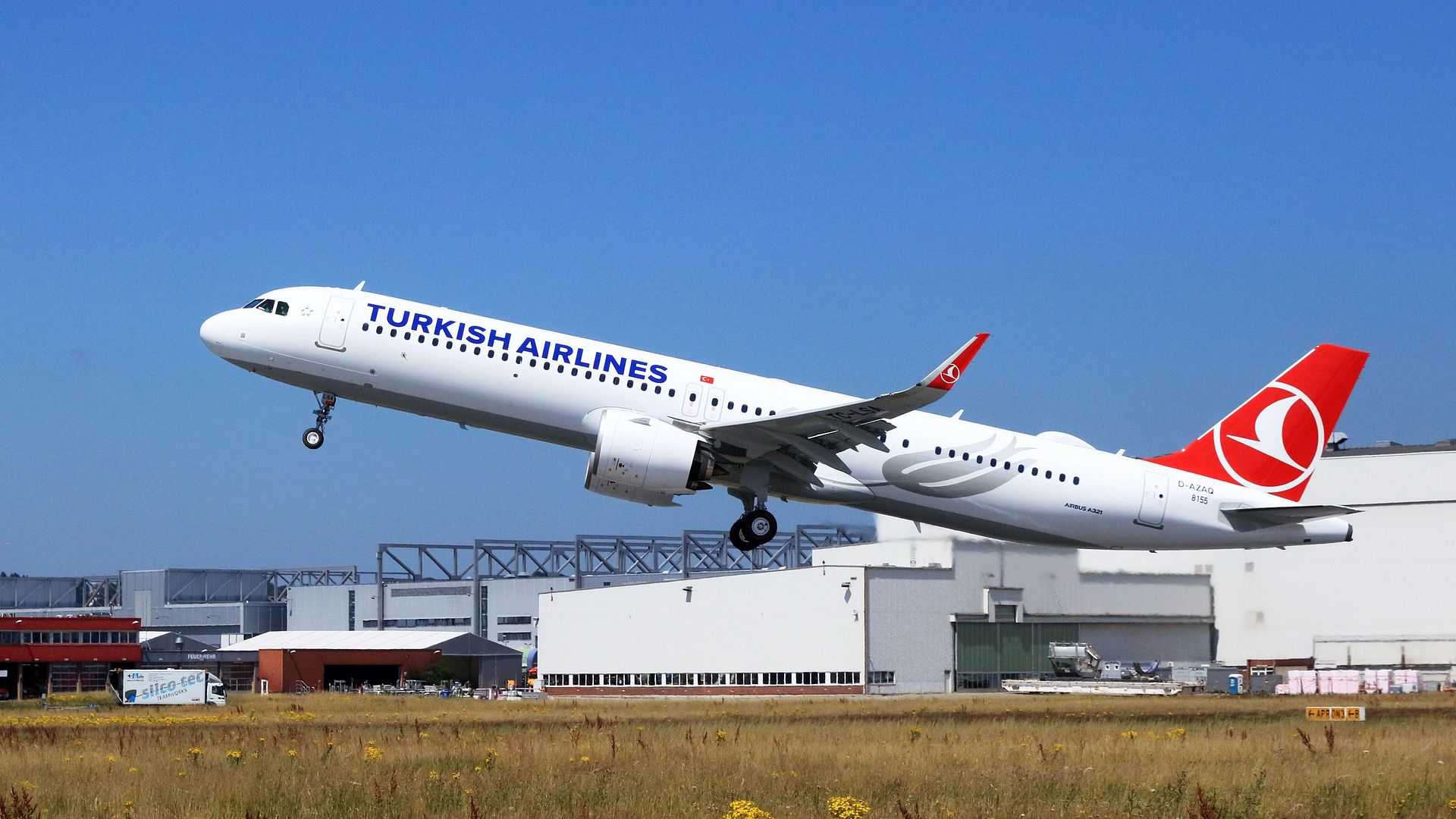
The A321neo in Cabin Flex configuration is also the base for a longer range variant known as the A321LR. The A321LR has an increased MTOW (Maximum Take-Off Weight) of 97 tonnes and a third underfloor fuel tank allowing airlines to increase its range to 4,000 nautical miles for intercontinental flights.
With over 1,900 orders to date, the Airbus A321neo offers a reduction in fuel consumption of at least 15 percent per seat from day one and 20 percent by 2020.
London, UK, July 13, 2018 ? This morning an Embraer E190-E2 aircraft landed for the first time at London City Airport (LCY). The newest aircraft from Embraer, the world?s quietest and most efficient in its class, entered into service in April this year. An aircraft from Embraer?s test fleet stopped off at LCY on its way to appear at next week?s Farnborough Air Show. The visit demonstrates the importance Embraer places on being able to offer LCY capability to airlines and its intention to work with London City Airport to certify the E2 to meet customer demand, which is likely to rise as LCY increases connectivity.
Arjan Meijer, Chief Commercial Officer, Embraer Commercial Aviation, said, ?For Embraer, London City feels like home, wherever you look, our aircraft are there. So it?s a big moment for us to bring the newest generation Embraer jet to this important European hub. We know that passengers will love the new aircraft, still with no middle seats and featuring larger overhead bins, and Londoners will also appreciate the quietness of the aircraft and its low emissions.? London City Airport is London?s most central airport, known for its convenience and speedy passenger experience. Its location means operating aircraft have to be compatible with the airport?s steep approach and short runway. Embraer aircraft are well suited to this and have operated from LCY since 2009, when BA Cityflyer started operations with the E170. Embraer aircraft accounted for nearly 60% of departures from LCY in 2017. Richard Hill, Chief Commercial Officer at London City Airport, said: ?to welcome the Embraer E2 to London City Airport for the first time is a crucial milestone towards certification and subsequent commercial operation at London?s most central airport.
The first generation of E-Jets have been intrinsic to London City?s growth, so much so that up to three quarters of all passengers now land or depart on the aircraft. As we continue a ?480m transformation, due for completion in 2022, the E2 has enormous potential for London City, with proven ability to operate with less noise, fewer emissions, and better fuel efficiency to open up new destinations, delivering significant benefits for our airline customers, passengers and local neighbours.? In certification testing EASA figures confirmed the E190-E2 has the lowest noise levels among all new generation single aisle aircraft. If this performance can be replicated in the operational environment of London City Airport, the E190-E2 would meet the minimum noise restrictions of the airport?s new Aircraft Noise Categorisation Scheme (ANCS), which will be fully introduced next year. The E190-E2 is the first of a new generation of crossover narrowbody jets from Embraer.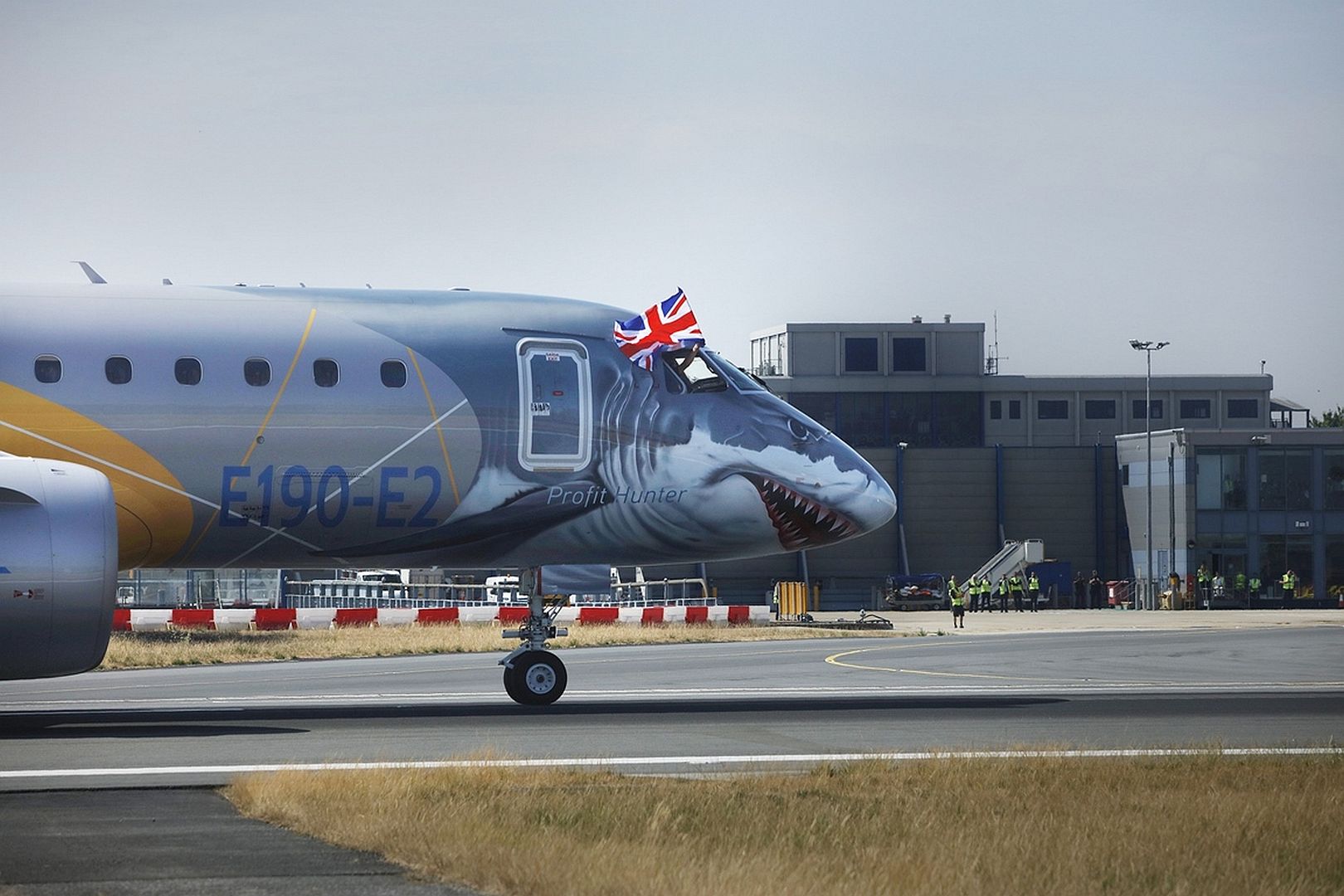
The aircraft entered into service with Norwegian carrier Wider?e in April. The E195-E2 goes into service next year with Azul in Brazil. The E190-E2 cuts fuel burn by more than 17%, and is the quietest passenger jet in the world today both in the cabin and outside. Since entering revenue service, the E-Jets family has received more than 1,800 orders and over 1,400 aircraft have been delivered. Today, E-Jets are flying in the fleet of 70 customers in 50 countries. The versatile 70 to 150-seat family is flying with low-cost airlines as well as with regional and mainline carriers.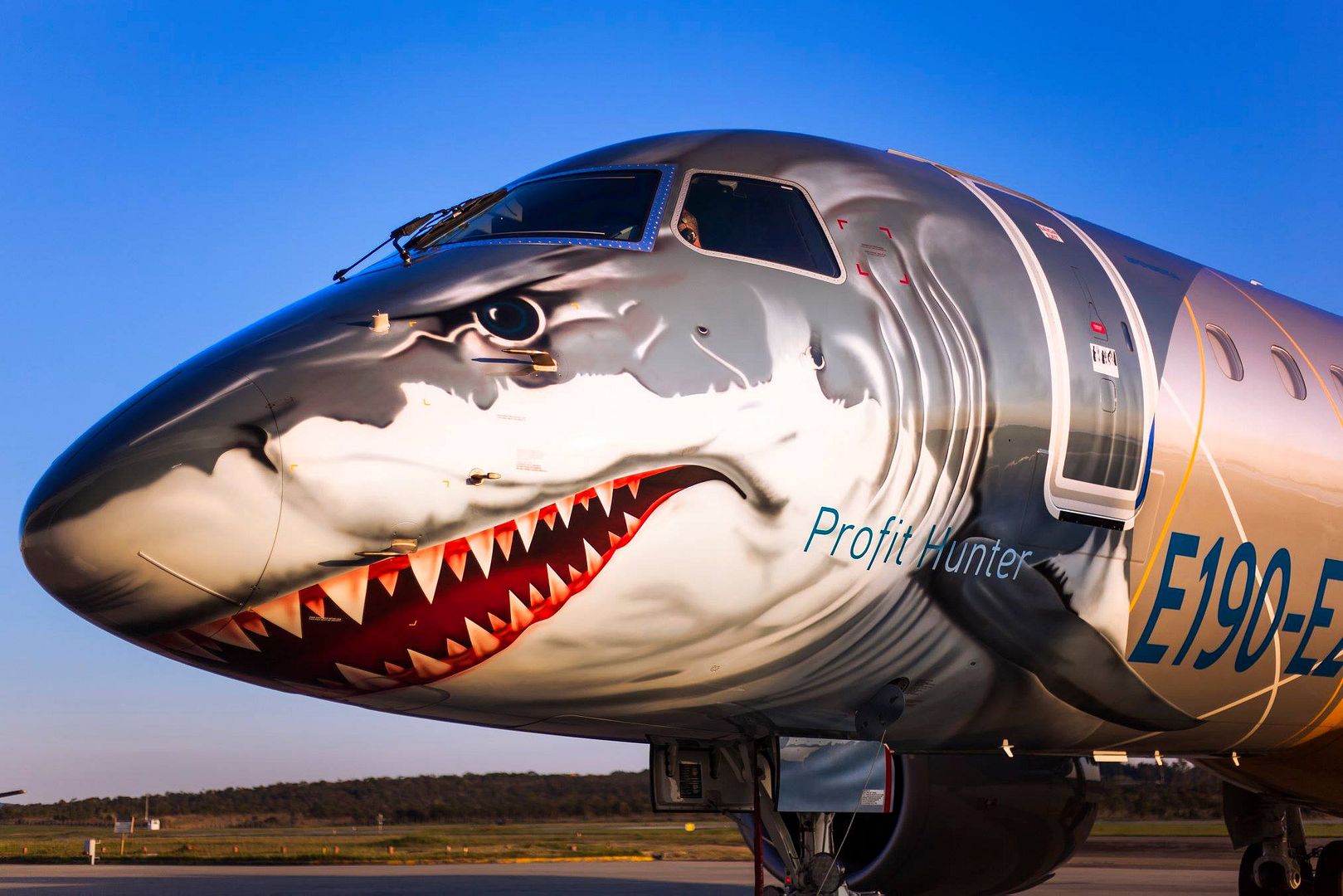

-
 Main AdminF-15Cs from the 122nd Fighter Squadron of the 159th Fighter Wing, Naval Air Station Joint Reserve Base New Orleans, Louisiana, land at Gowen Field, Boise, Idaho on July 13, 2018. The 122FS is in Boise to perform dissimilar air combat training with the 190th Fighter Squadron's A-10 Thunderbolt IIs. (U.S. Air National Guard photo's by Master Sgt. Joshua C. Allmaras)
Main AdminF-15Cs from the 122nd Fighter Squadron of the 159th Fighter Wing, Naval Air Station Joint Reserve Base New Orleans, Louisiana, land at Gowen Field, Boise, Idaho on July 13, 2018. The 122FS is in Boise to perform dissimilar air combat training with the 190th Fighter Squadron's A-10 Thunderbolt IIs. (U.S. Air National Guard photo's by Master Sgt. Joshua C. Allmaras)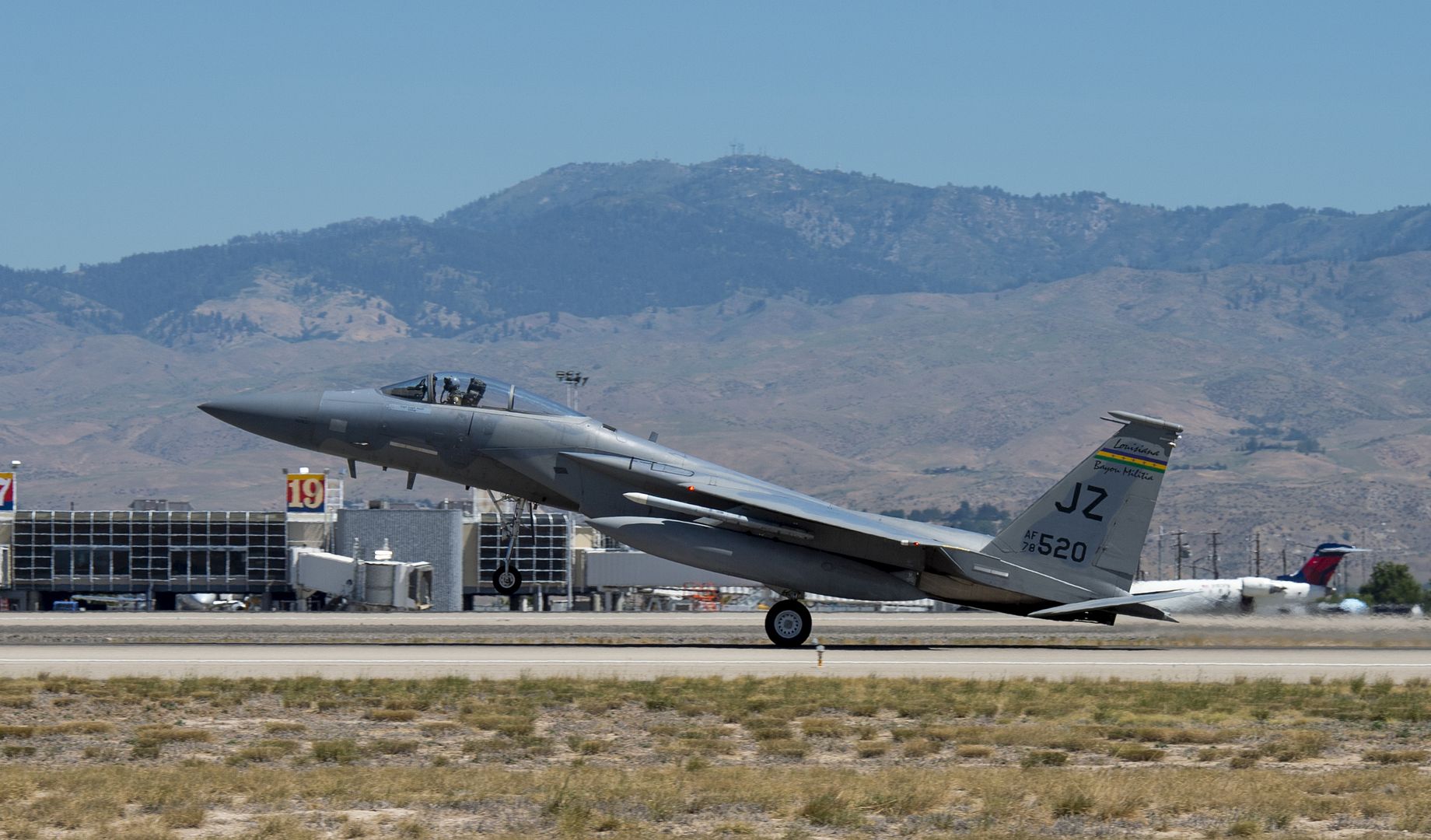
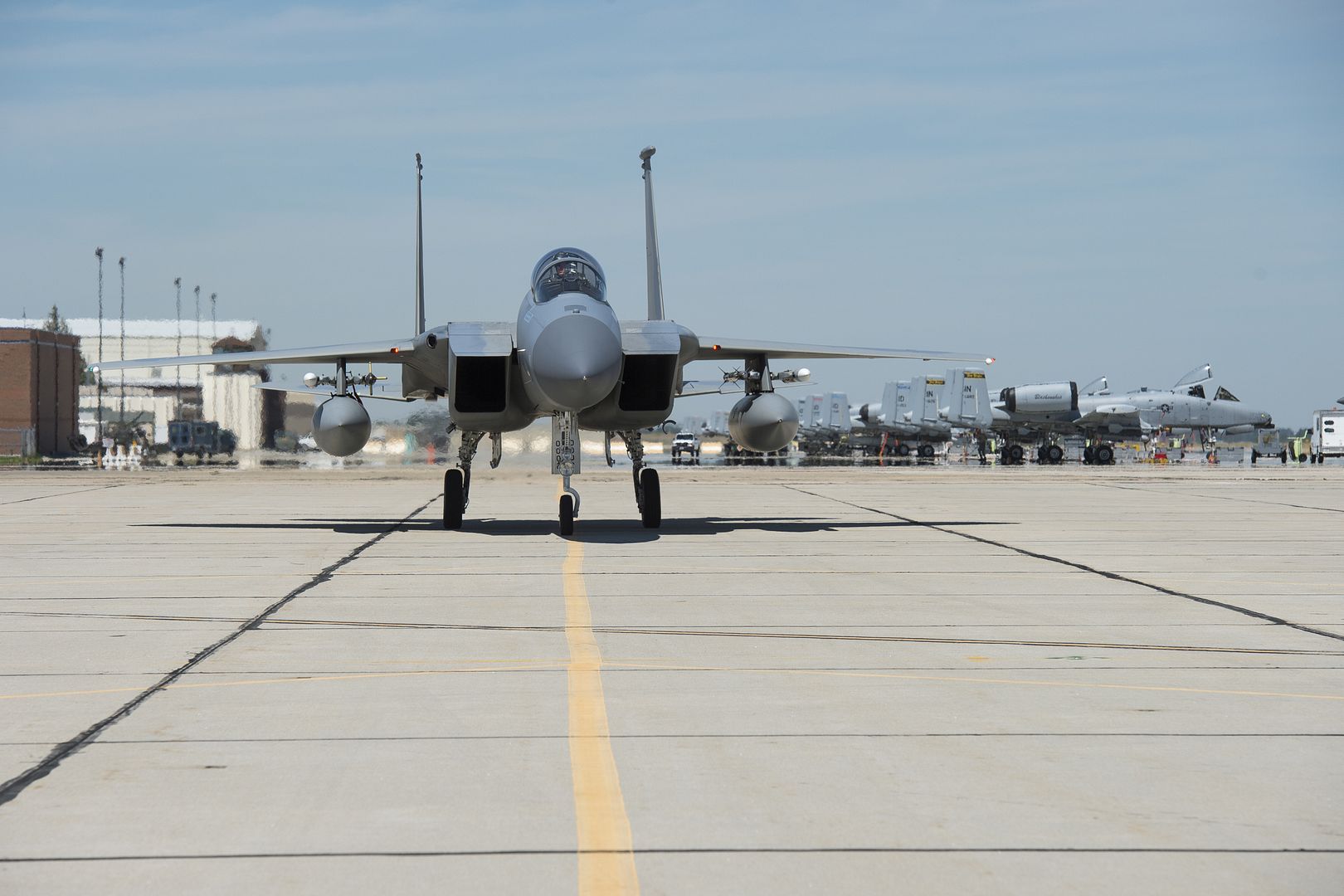
Two French Air Force pilots demonstrate the capabilities of the Couteau Delta 2 Dassault Mirage 2000Ds aircraft during 2018 Royal International Air Tattoo at RAF Fairford, United Kingdom on July 13, 2018.This year?s RIAT celebrated the 100th anniversary of the RAF and highlighted the United States? ever-strong alliance with the UK. (U.S. Air Force photo by TSgt Brian Kimball)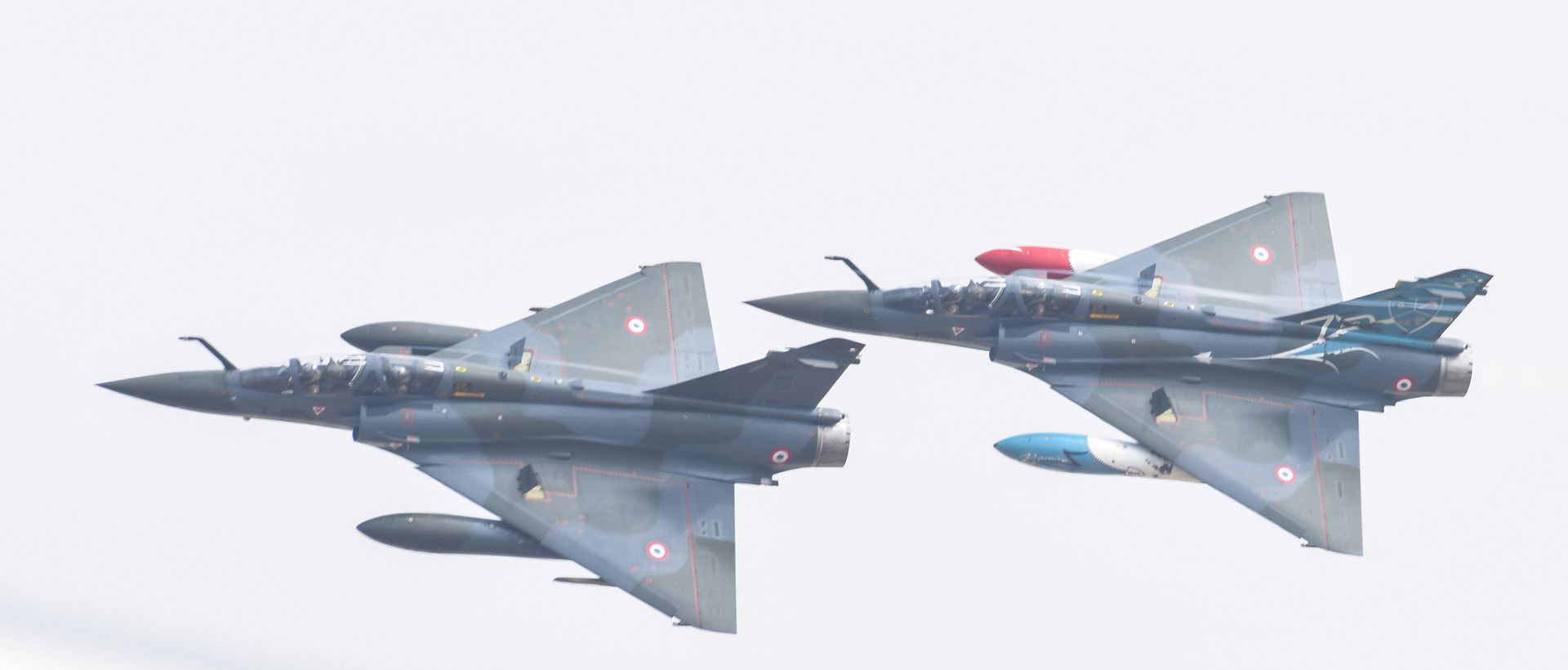
A pilot from the Swiss Air Force demonstrates the flight capabilities of a F/A-18C Hornet during the 2018 Royal International Air Tattoo at RAF Fairford, United Kingdom on July 13, 2018. This year?s RIAT celebrated the 100th anniversary of the RAF and highlighted the United States? ever-strong alliance with the UK. (U.S. Air Force photo's by TSgt Brian Kimball)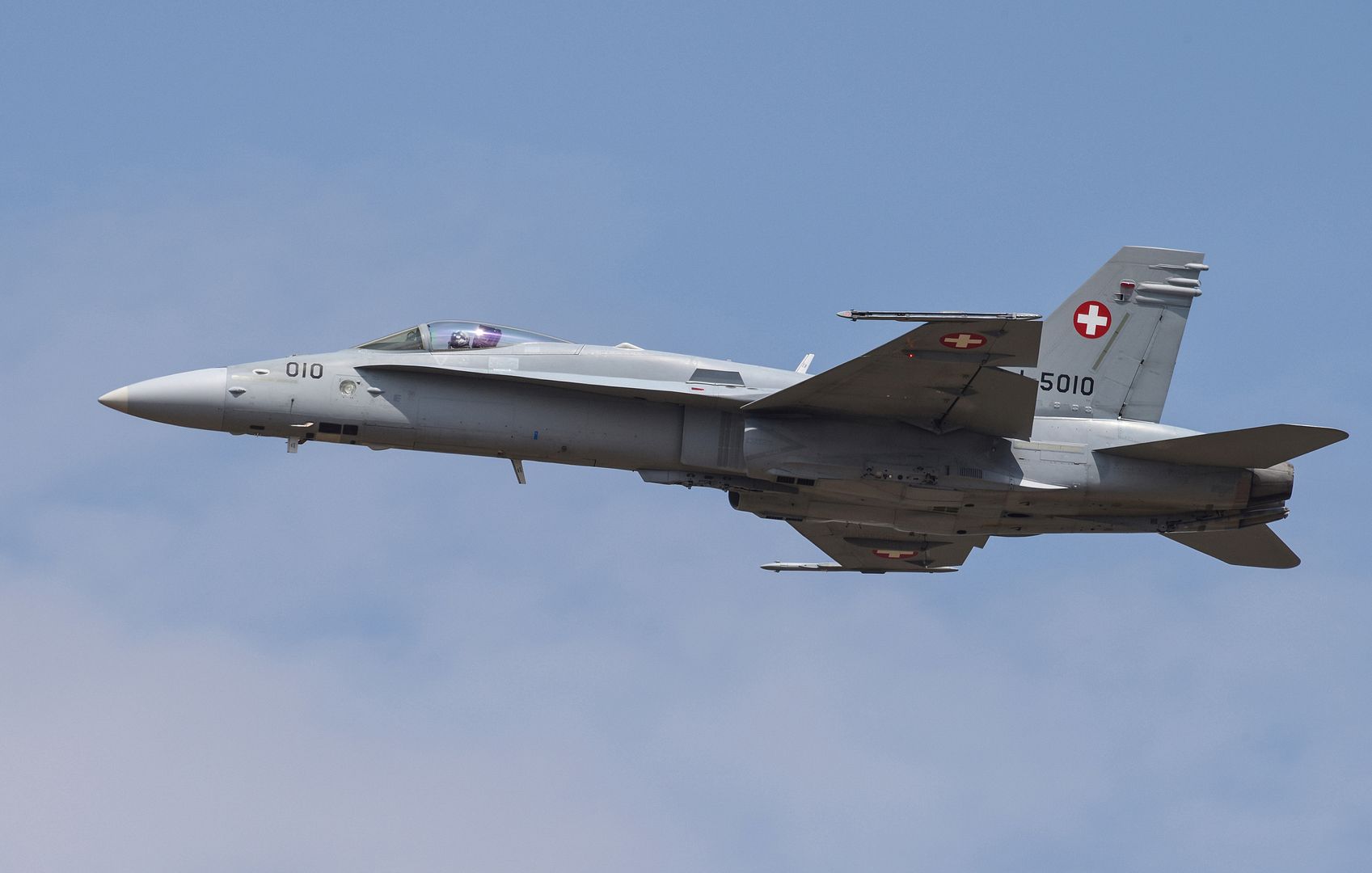
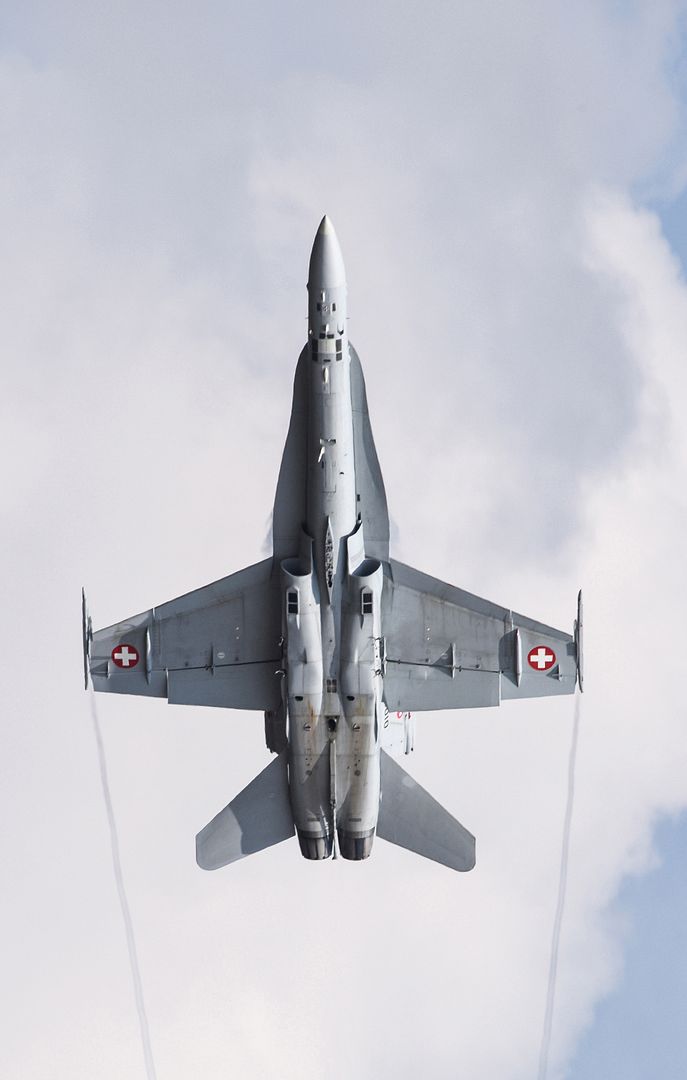

A U.S. Air Force pilot demonstrates the flight capabilities of a F-35A Lightning II during the 2018 Royal International Air Tattoo at RAF Fairford, United Kingdom on July 13, 2018. This year?s RIAT celebrated the 100th anniversary of the RAF and highlighted the United States? ever-strong alliance with the UK. (U.S. Air Force photo by TSgt Brian Kimball)
-
 Main AdminRAF Fairford, United Kingdom (July 14, 2018)A U.S. Air Force F-35A Lightning II performs a heritage flight alongside a P-51D Mustang and a Spitfire at the 2018 Royal International Air Tattoo, RAF Fairford, United Kingdom, July 14, 2018.This year's RIAT celebrated the 100th Anniversary of the Royal Air Force and highlighted the United States' ever-strong alliance with the U.K. (DoD photo by Mass Communication Specialist 2nd Class Cody Hendrix)
Main AdminRAF Fairford, United Kingdom (July 14, 2018)A U.S. Air Force F-35A Lightning II performs a heritage flight alongside a P-51D Mustang and a Spitfire at the 2018 Royal International Air Tattoo, RAF Fairford, United Kingdom, July 14, 2018.This year's RIAT celebrated the 100th Anniversary of the Royal Air Force and highlighted the United States' ever-strong alliance with the U.K. (DoD photo by Mass Communication Specialist 2nd Class Cody Hendrix)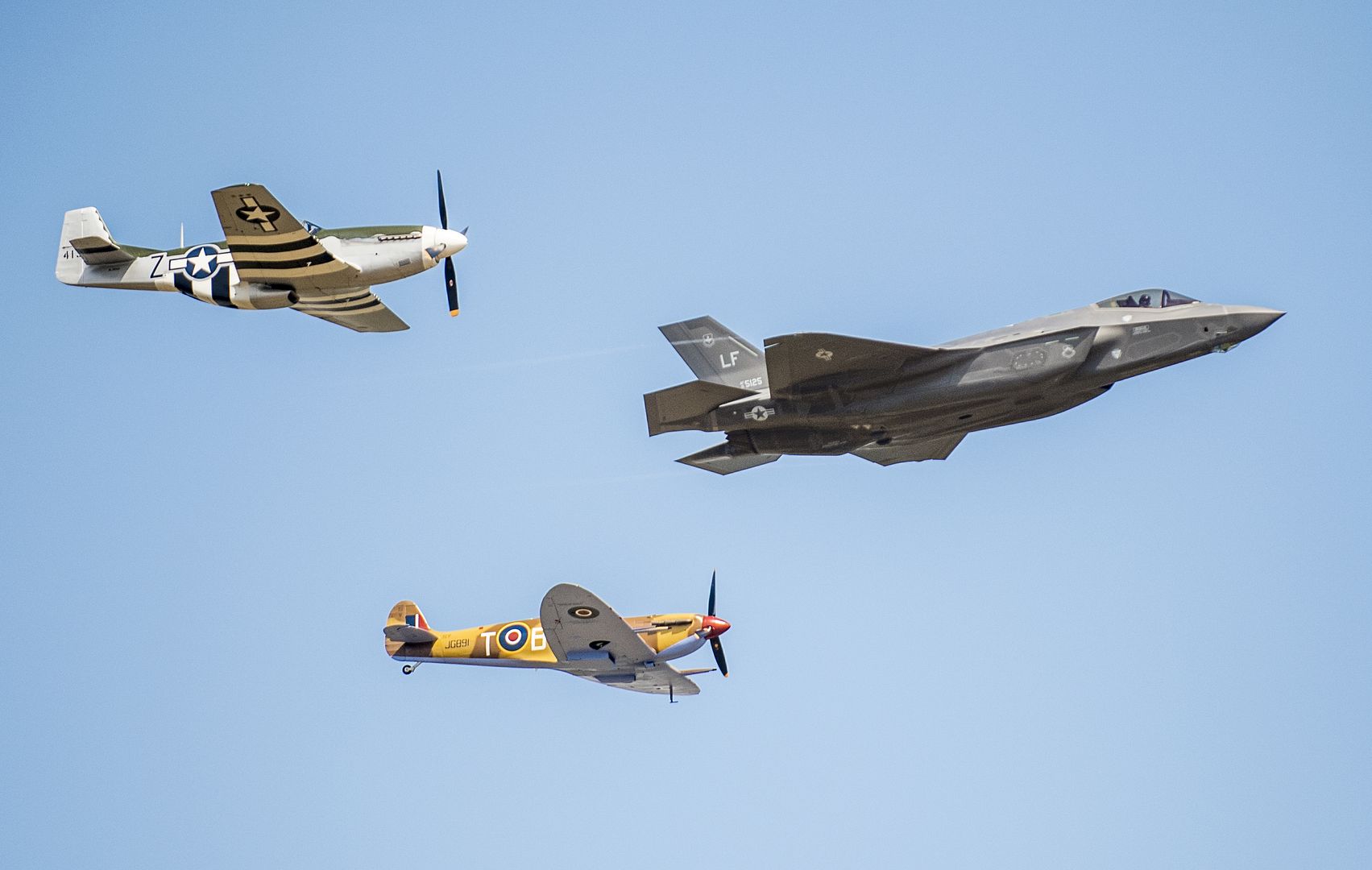
A pilot demonstrates the capabilities of the Spitfire during the 2018 Royal International Air Tattoo (RIAT) at RAF Fairford, United Kingdom (UK) on July 14, 2018. This year?s RIAT celebrated the 100th anniversary of the RAF and highlighted the United States? ever-strong alliance with the UK. (U.S. Air Force photo by TSgt Brian Kimball)
A pilot demonstrates the capabilities of the P-51D Mustang during the 2018 Royal International Air Tattoo (RIAT) at RAF Fairford, United Kingdom (UK) on July 14, 2018. This year?s RIAT celebrated the 100th anniversary of the RAF and highlighted the United States? ever-strong alliance with the UK. (U.S. Air Force photo by TSgt Brian Kimball)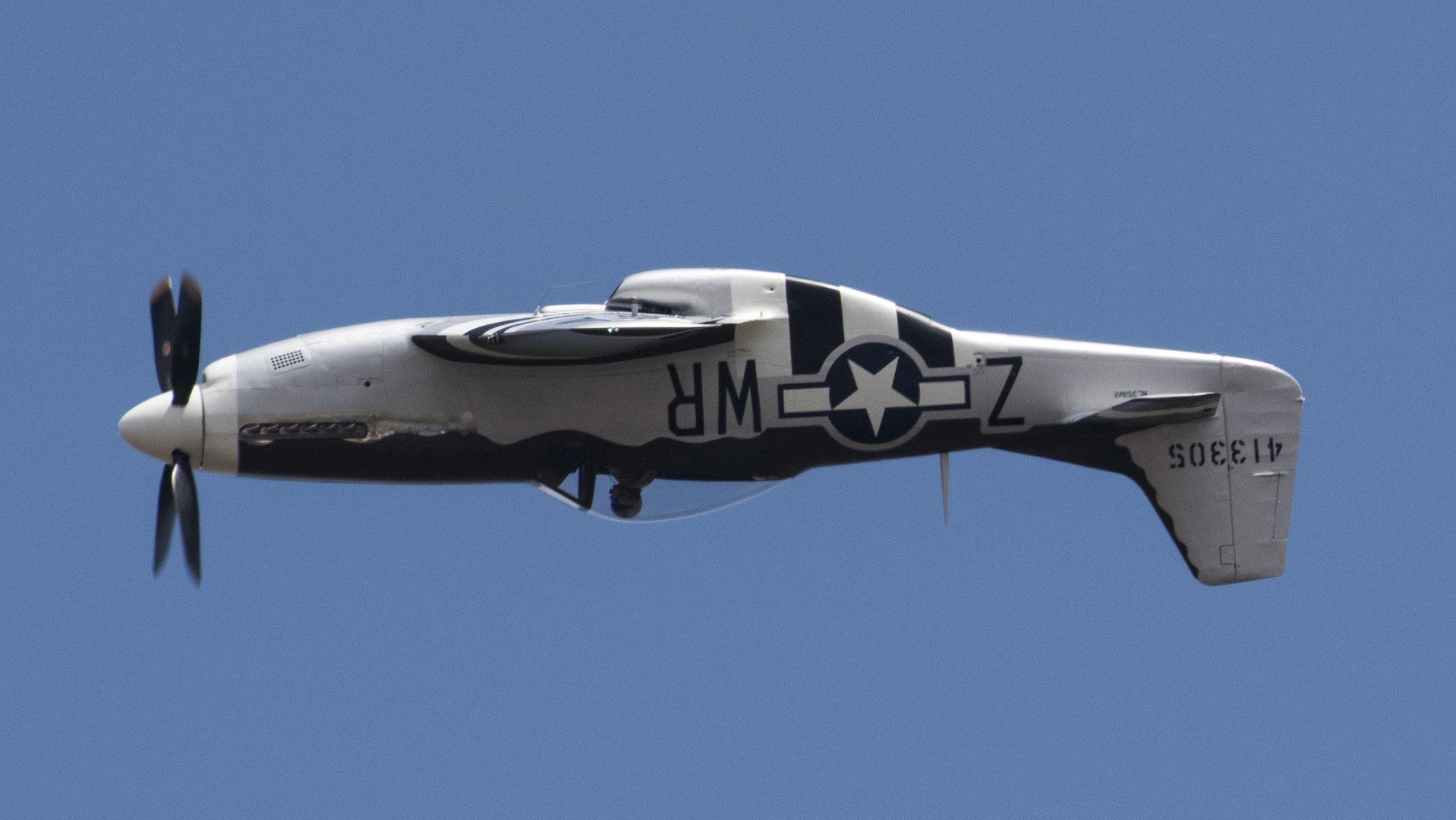
A Royal Air Force pilot demonstrates the flying capabilities of a Eurofighter Typhoon FGR4 during the 2018 Royal International Air Tattoo at RAF Fairford, United Kingdom on July 14, 2018. This year?s RIAT celebrated the 100th anniversary of the RAF and highlighted the United States? ever-strong alliance with the UK. (U.S. Air Force photo by TSgt Brian Kimball).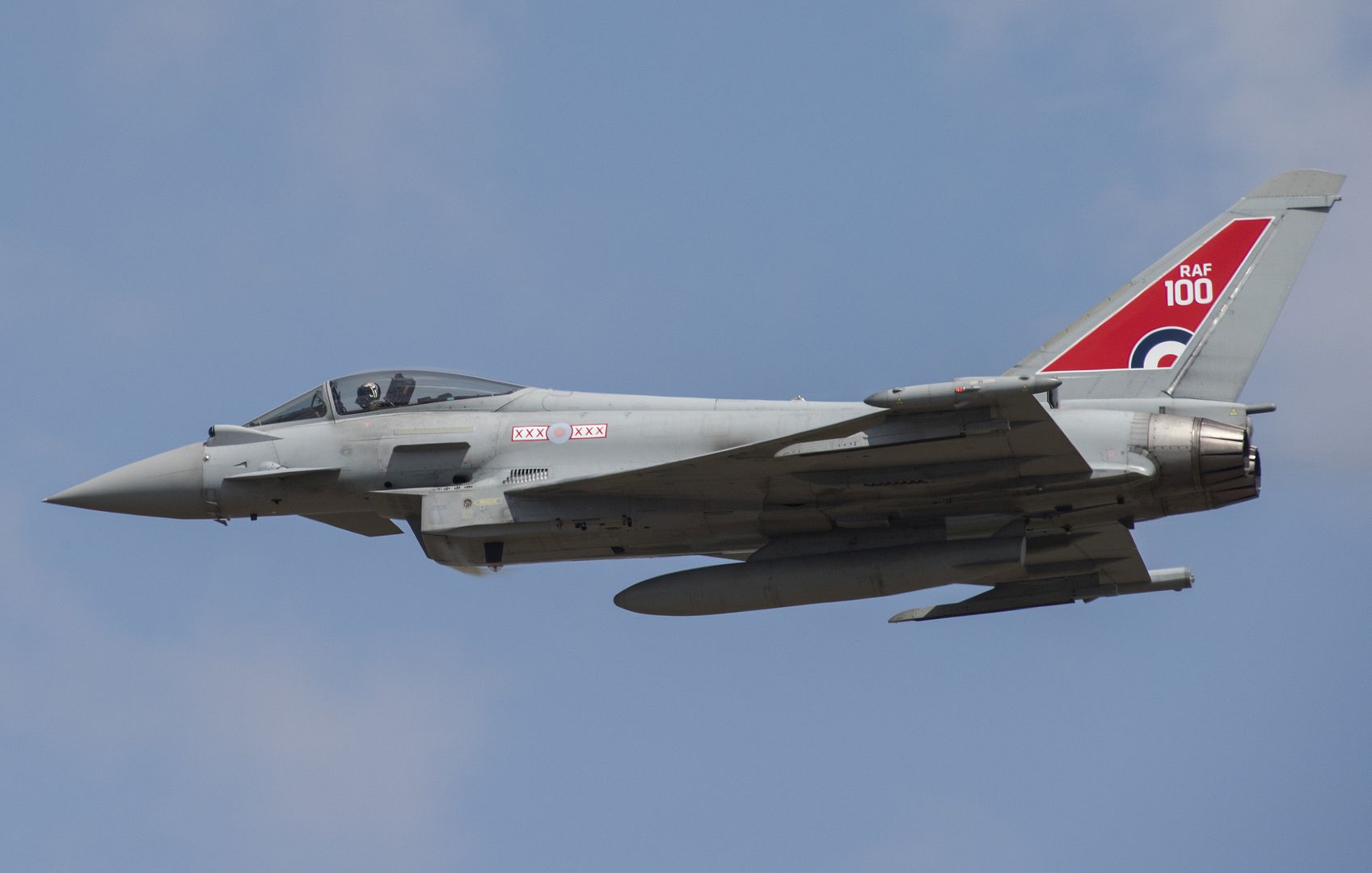
07.14.2018
A Douglas AD-4 Skyraider, piloted by former US Navy Pilot Kevin Sinibaldi, provides a spectacular flight demonstration for an audience at the Military Aviation Museum in Virginia Beach, Virginia. This Skyraider is one of a handful of airworthy examples nationwide. (US Navy Photo by Civilian Public Affairs Officer Max Lonzanida/Released)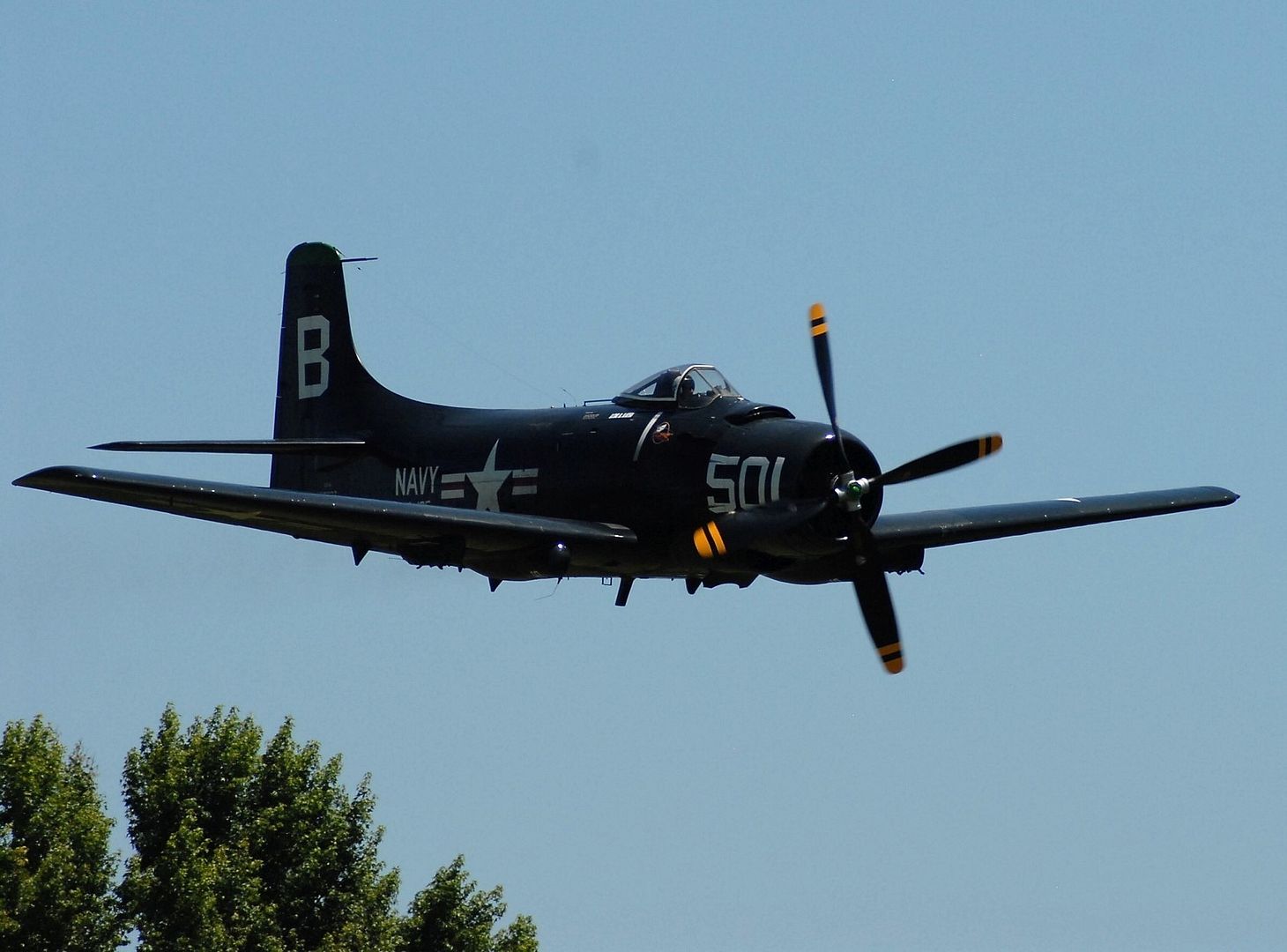
A U.S. Air Force 82nd Aerial Targets Squadron QF-16 Aerial Target travels down the flightline at Tyndall Air Force Base, Fla., July 11, 2018. Tyndall?s 82nd Aerial Target Squadron fulfills a Title 10 U.S. Code requirement and is responsible for ensuring the safe and effective testing of various weapon systems through the use of QF-16, full-scale aerial targets capable of both manned and unmanned flight. (U.S. Air Force photo by Staff Sgt. Sergio A. Gamboa/Released)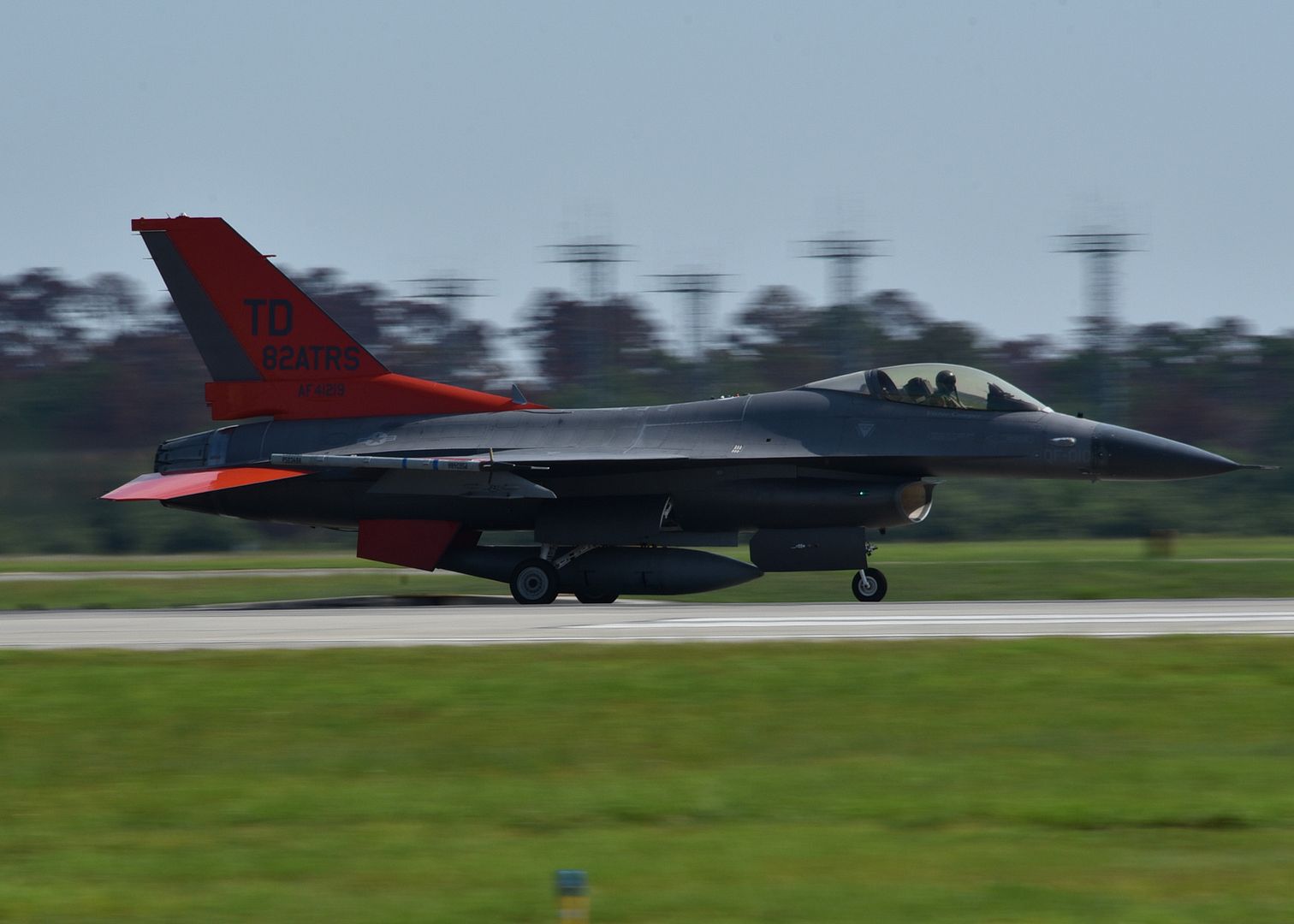
The 48th Fighter Wing based at Royal Air Force Lakenheath will increase flying operations.
(Courtesy photo/ Nigel Blake)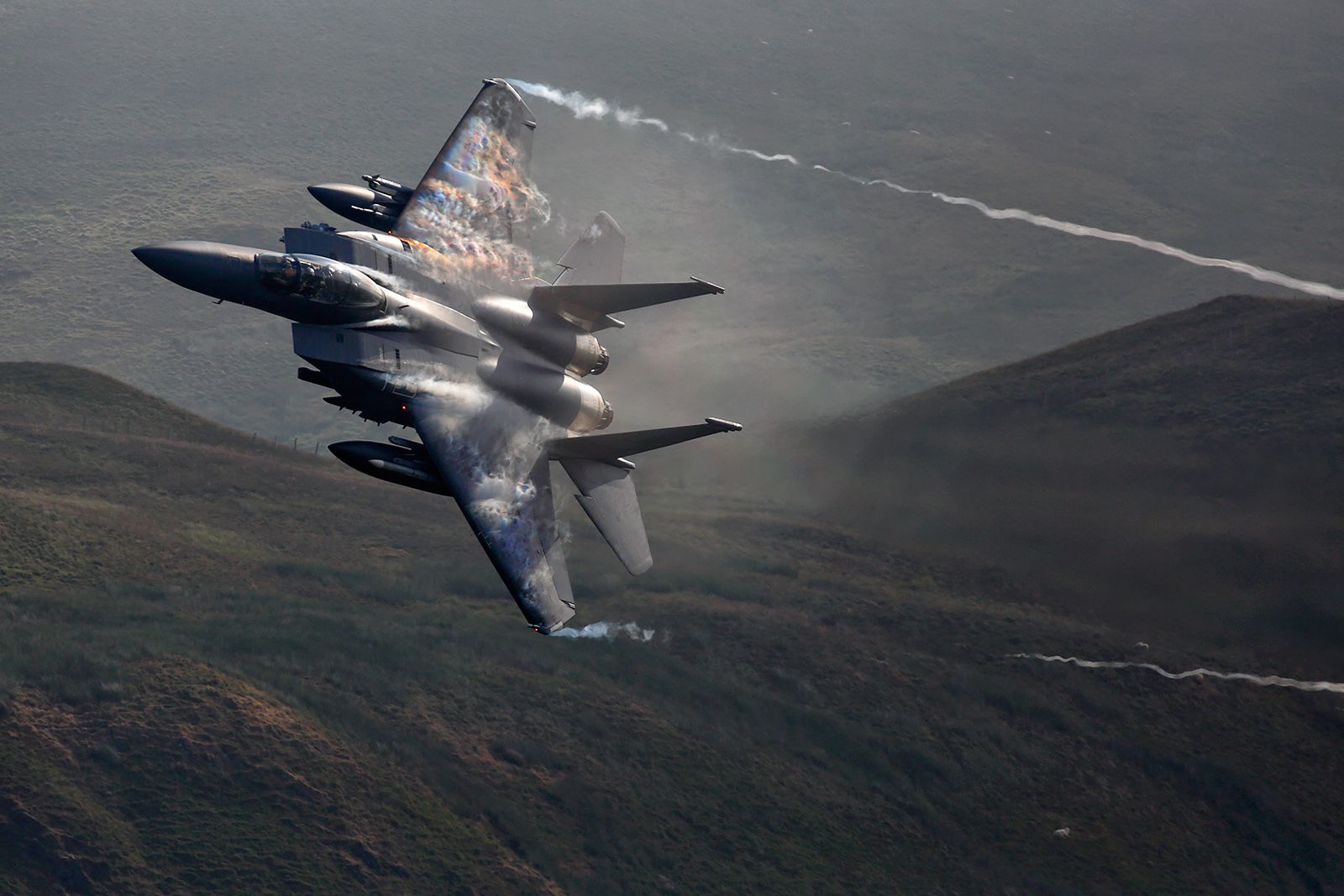
EVERETT, Wash., July 13, 2018 ? Boeing [NYSE: BA] and U.S Air Force teams recently achieved a major KC-46 tanker program milestone, completing all flight testing required for first delivery. This past week, the KC-46 team concluded both its Military Type Certification testing and receiver certification testing with KC-135, F-16 and C-17 aircraft.
?This is a significant achievement for the Boeing-Air Force team and continues us on our path to first delivery in October,? said Mike Gibbons, Boeing KC-46A tanker vice president and program manager. ?Great teamwork all around!?
Receiver certification, which began in April, was conducted from Boeing Field in Seattle and Edwards Air Force Base, Calif. As part of the testing, KC-46 and receiver aircraft flew at different airspeeds, altitudes and configurations to ensure compatibility and performance throughout the refueling envelope of each receiver.
Receiver certification testing of A-10 and KC-46 has also begun, with final certification of A-10, F/A-18, KC-46, F-15 and B-52 to be completed prior to the start of Initial Operational Test & Evaluation testing.
?Our main focus now is obtaining the Supplemental Type Certificate (STC) from the Federal Aviation Administration as well as the formal Military Type Certification (MTC) from the U.S. Air Force,? Gibbons said.
The KC-46 test team completed STC flight testing in April and is now working through associated paperwork prior to STC award.
The program has six aircraft that have supported various segments of STC and MTC testing. Overall they have completed 3,300 flight hours and offloaded two million pounds of fuel during refueling flights with F-16, F/A-18, AV-8B, C-17, A-10, KC-10 and KC-46 aircraft.
The KC-46, derived from Boeing?s commercial 767 airframe, is built in the company?s Everett, Wash., facility. Boeing is currently on contract for the first 34 of an expected 179 tankers for the U.S. Air Force.
When in service, the KC-46 will refuel U.S., allied and coalition military aircraft using its boom and hose and drogue systems, but also must be able to take on fuel to extend its operational range. The boom allows the tanker to transfer up to 1,200 gallons of fuel per minute, while the hose and drogue systems, located on both the plane?s wing and centerline, enables the KC-46 to refuel smaller aircraft with up to 400 gallons of fuel per minute.
The KC-46A is a multirole tanker that is designed to refuel all allied and coalition military aircraft compatible with international aerial refueling procedures and can carry passengers, cargo and patients.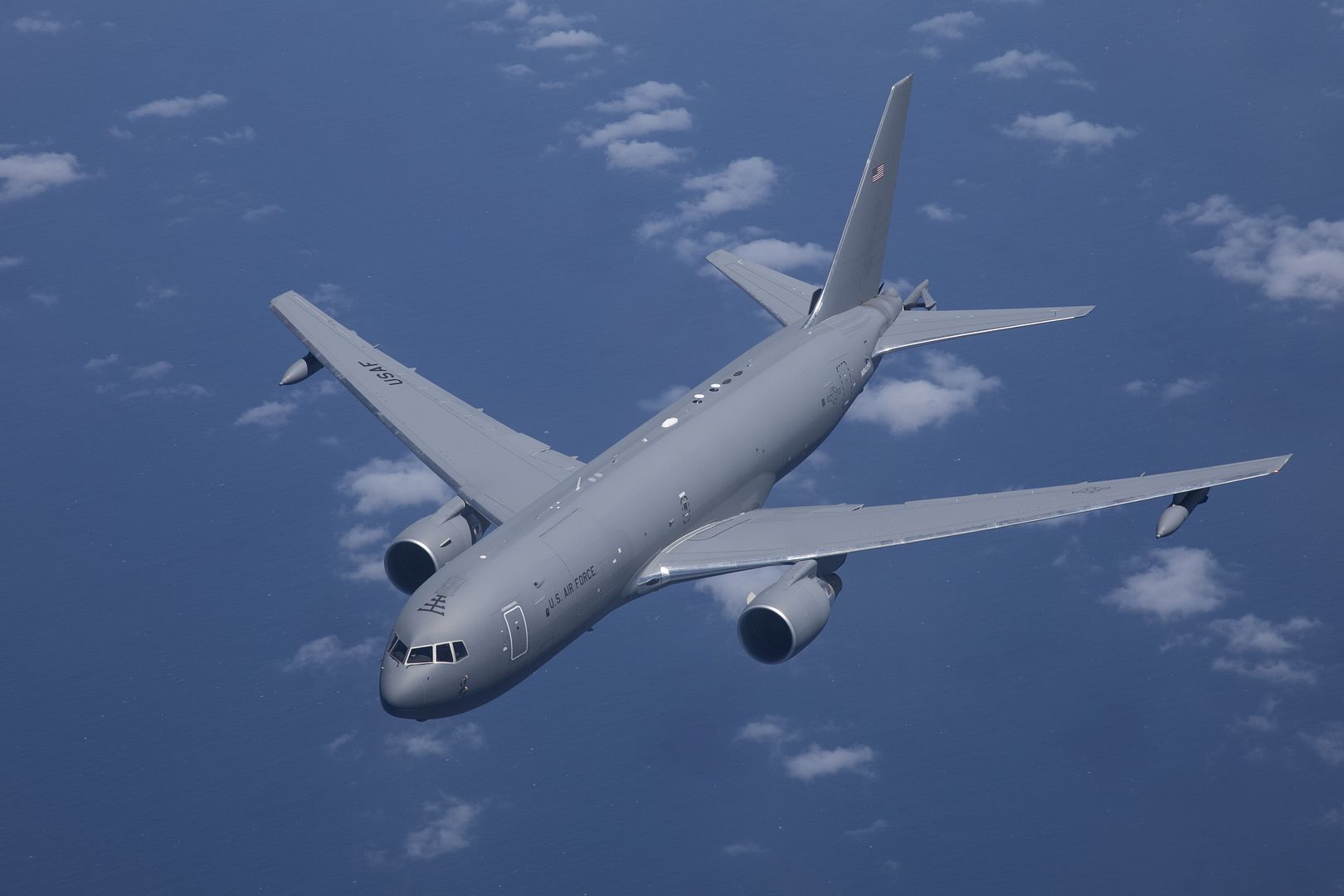
FARNBOROUGH, United Kingdom, July 16, 2018 /PRNewswire/ -- Boeing [NYSE: BA] and Qatar Airways finalized an order for five 777 Freighters at the 2018 Farnborough International Airshow. The deal, valued at $1.7 billion at current list prices, was announced as a commitment in April.
The announcement was attended by the State of Qatar's Minister of Finance and Qatar Airways Chairman, His Excellency Ali Shareef Al Emadi.
"I am delighted to be further enhancing our cargo fleet and adding five Boeing 777 Freighter aircraft," said Qatar Airways Group Chief Executive, His Excellency Mr. Akbar Al Baker. "In the past 15 years, Qatar Airways Cargo has grown steadily and globally, becoming the third largest in the world. We could not have achieved this success without our resilient relationship with Boeing."
Qatar Airways, one of the world's top cargo carriers, operates a fleet of 13 777 Freighters and two 747-8 Freighters. With this latest order, the airline is set to grow its Boeing Freighter fleet to more than 20 jets.
"We are proud that Qatar Airways recognizes the value of the 777 Freighter and continues to invest in this aircraft to serve its expanding freight operations," said Boeing Commercial Airplanes President & CEO Kevin McAllister. "We continue to see a resurgence in the air cargo market and we are confident that Boeing's industry-leading freighter family is well positioned to meet our customers' requirements."
Boeing has now sold 65 widebody freighters in 2018, and more than 180 widebody freighters since the start of 2014, which equates to a 98-percent share of the market. In that same time, Boeing has delivered more than 140 wide-body freighters, which translates to a 92 percent share of deliveries.
The 777 Freighter is capable of flying 4,900 nautical miles (9,070 kilometers) with a payload of 112 tons (102 metric tonnes or 102,000 kg). The airplane's long range translates into significant savings as fewer stops mean lower landing fees, less congestion, lower cargo handling costs and shorter delivery times.
Qatar Airways also uses Boeing Global Services to improve its offering for its customers. The airline uses services products such Maintenance Performance Toolbox, Airplane Health Management and flight deck solutions, all powered by Boeing AnalytX.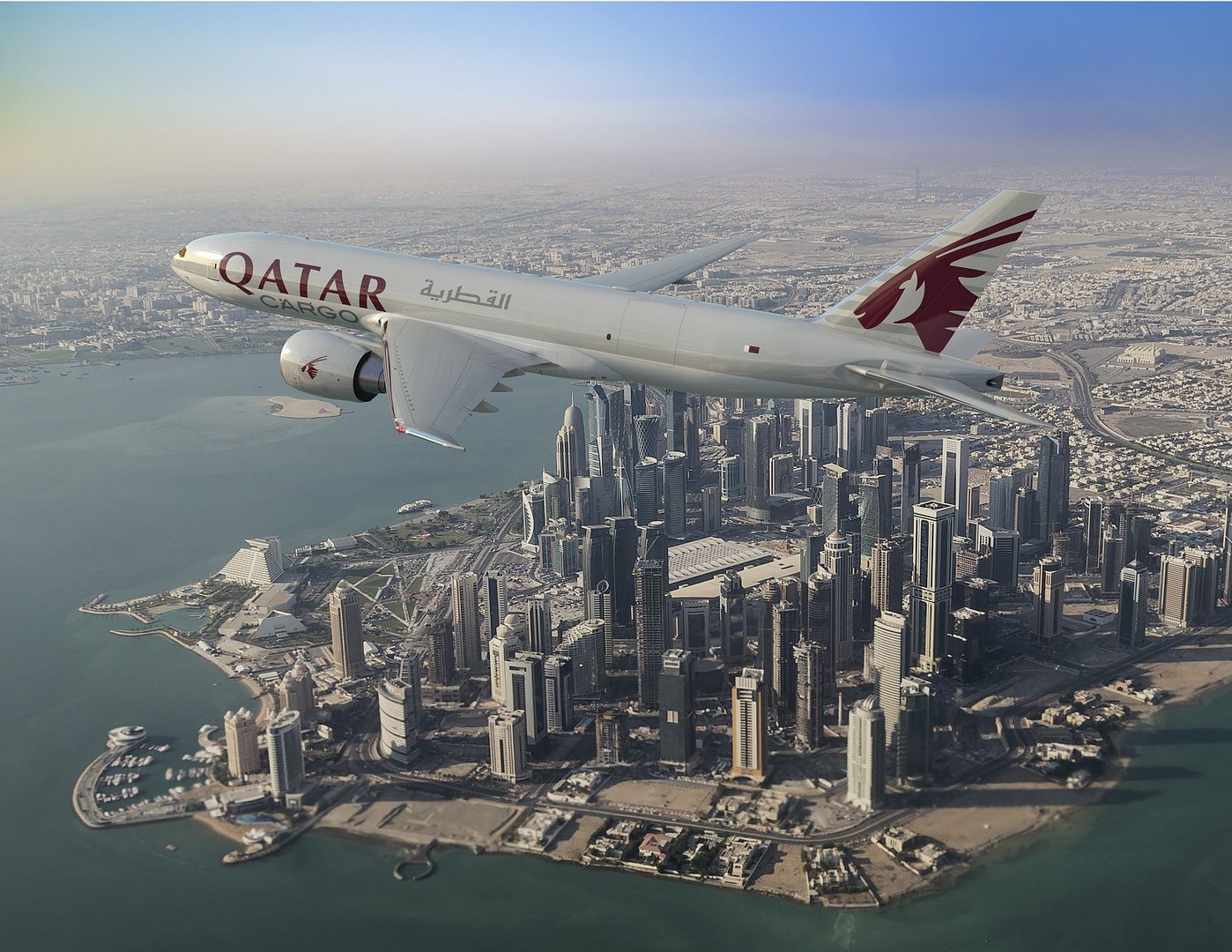
FARNBOROUGH, United Kingdom, July 16, 2018 /PRNewswire/ -- Boeing [NYSE:BA] and United Airlines announced the carrier has expanded its commitment to the 787 Dreamliner program with a repeat order for four more 787-9 airplanes. The deal, valued at about $1.1 billion per current list prices, was finalized this year and was listed as unidentified on Boeing's Orders & Deliveries website.
"These new 787 aircraft are another step in our wide-body replacement strategy, and we will continue to roll out new announcements in the future as we implement our comprehensive fleet plan," said Gerry Laderman, United's senior vice president of finance and acting chief financial officer. "The 787 allows us to provide our customers with an industry-leading on-board experience and continues to be a vital part of our fleet."
The 787-9 is the longest-range Dreamliner with the ability to fly up to 7,635 nautical miles (14,140 kilometers), while using 20 percent less fuel than older generation airplanes. In United's three-class configuration, the 787-9 seats about 250 passengers. The Chicago-based carrier also operates the smaller 787-8 and will be the North American launch customer of the larger 787-10.
United Airlines is one of the leading global carriers that have taken full advantage of the Dreamliner's superior range and fuel efficiency, having deployed the 787 on some of the longest routes such as Houston to Sydney and San Francisco to Singapore. In all, the 787 Dreamliner family has made possible more than 180 new non-stop routes.
"There is no better validation from a customer than a repeat purchase. We are delighted that a leading carrier such as United Airlines has placed yet another order for the 787 Dreamliner. Their trust and confidence in the 787 speak to the airplane's unmatched capabilities and superior value," said Ihssane Mounir, senior vice president of Commercial Sales & Marketing for The Boeing Company. "We look forward to delivering more Dreamliners to United for many years to come."
With this latest purchase, United Airlines has now ordered 55 787 Dreamliners. Nearly half of all 787 customers have placed repeat orders for the airplane.
The 787 is the fastest selling twin-aisle airplane in history with nearly 1,400 sold and more than 700 delivered to customers. Since entering service in 2011, the 787 family has flown more than 255 million passengers while saving an estimated 25 billion pounds of fuel.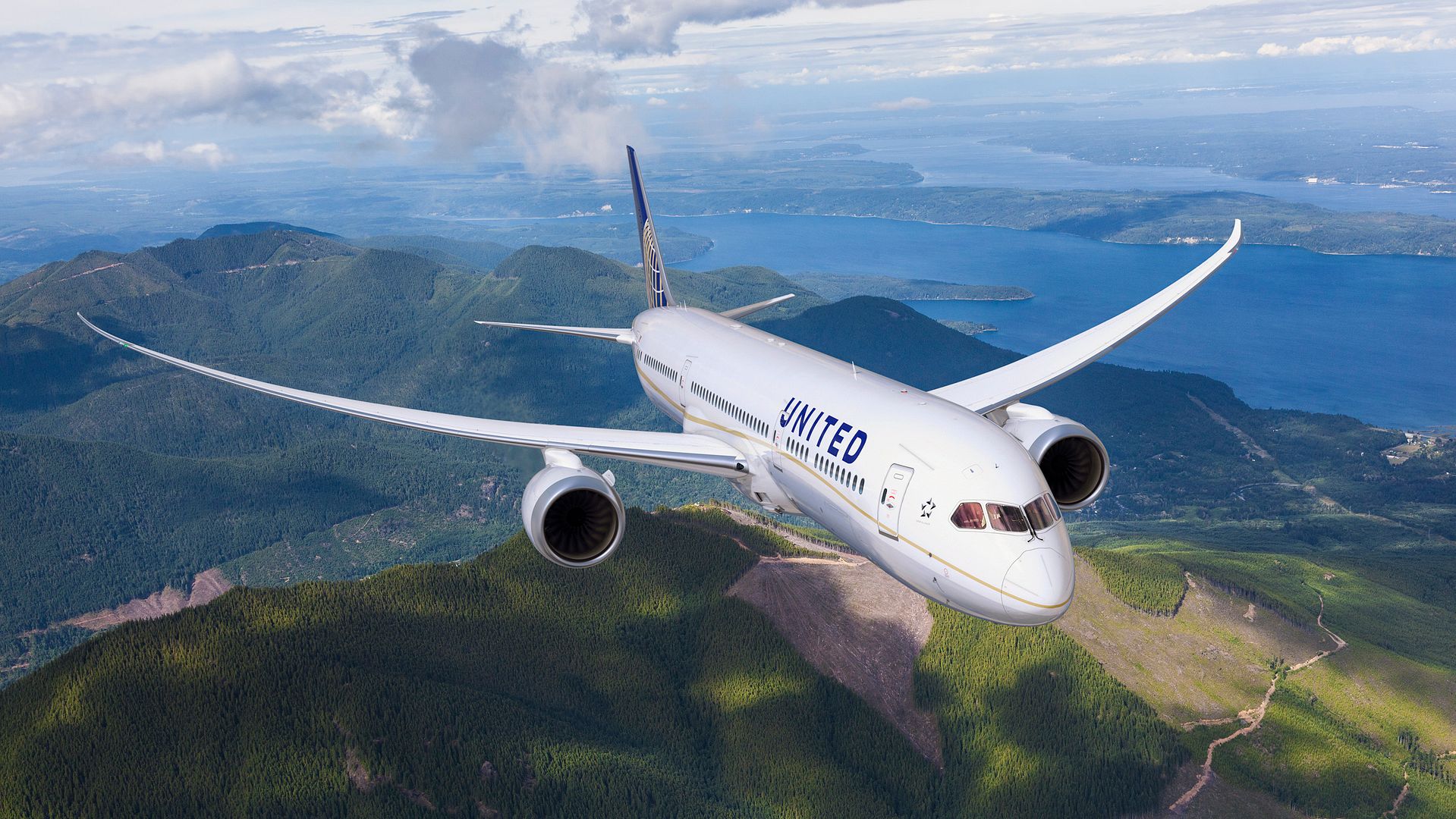
FARNBOROUGH, United Kingdom, July 16, 2018 /PRNewswire/ -- Boeing [NYSE: BA] and TAROM (Romanian Air Transport), the national carrier of Romania, today announced they signed an order for five 737 MAX 8 airplanes. The $586 million order, at current list prices, was previously listed as unidentified on Boeing's Orders & Deliveries website.
"This is an exciting time for TAROM as we upgrade our fleet and build strong partnerships that will benefit all of our passengers," said Wolff Werner-Wilhelm, TAROM Airlines CEO. "The 737 MAX will provide our customers with exceptional performance, reliability and efficiency, with an extended range that will enable us to better serve our current routes and open new markets. This new acquisition represents a true statement of change for TAROM."
The 737 MAX 8 incorporates the latest CFM International LEAP-1B engines, Advanced Technology winglets and other improvements to deliver the highest efficiency and reliability in the single-aisle airplane market. The jet also features the Boeing Sky Interior, which provides larger overhead bins and other comforts to elevate the passenger experience.
"We are delighted that TAROM is joining the 737 MAX family as they grow their fleet and expand their network," said Ihssane Mounir, senior vice president of Commercial Sales & Marketing for The Boeing Company. "When combined with support from our Boeing Global Services team, the MAX 8 will enable TAROM to offer a consistent and exceptional passenger experience while maximizing revenue potential at the best cost per seat in the industry."
The 737 MAX is the fastest-selling airplane in Boeing history with more than 4,600 orders from 100 customers worldwide. For more information and feature content, visit www.boeing.com/commercial/737max.
Along with the acquisition of airplanes, TAROM will purchase a landing gear exchange program from Boeing Global Services along with outfitting their Next-Generation 737 fleet with the Maintenance Performance Toolbox, an online technical documentation management solution, which helps Engineering and Maintenances crews to efficiently perform and record repairs.
About TAROM
TAROM Romanian Air Transport was established in 1954 and developed together with the Romanian aviation. The Romanian flag carrier owns one a fleet consisting of 25 aircrafts and has been a member of the International Air Transport Association (IATA) since 1993. TAROM is currently operating more than 50 destinations as well as destinations operated by its code share partners. We offer top airline services throughout Romania, Europe and the Middle East.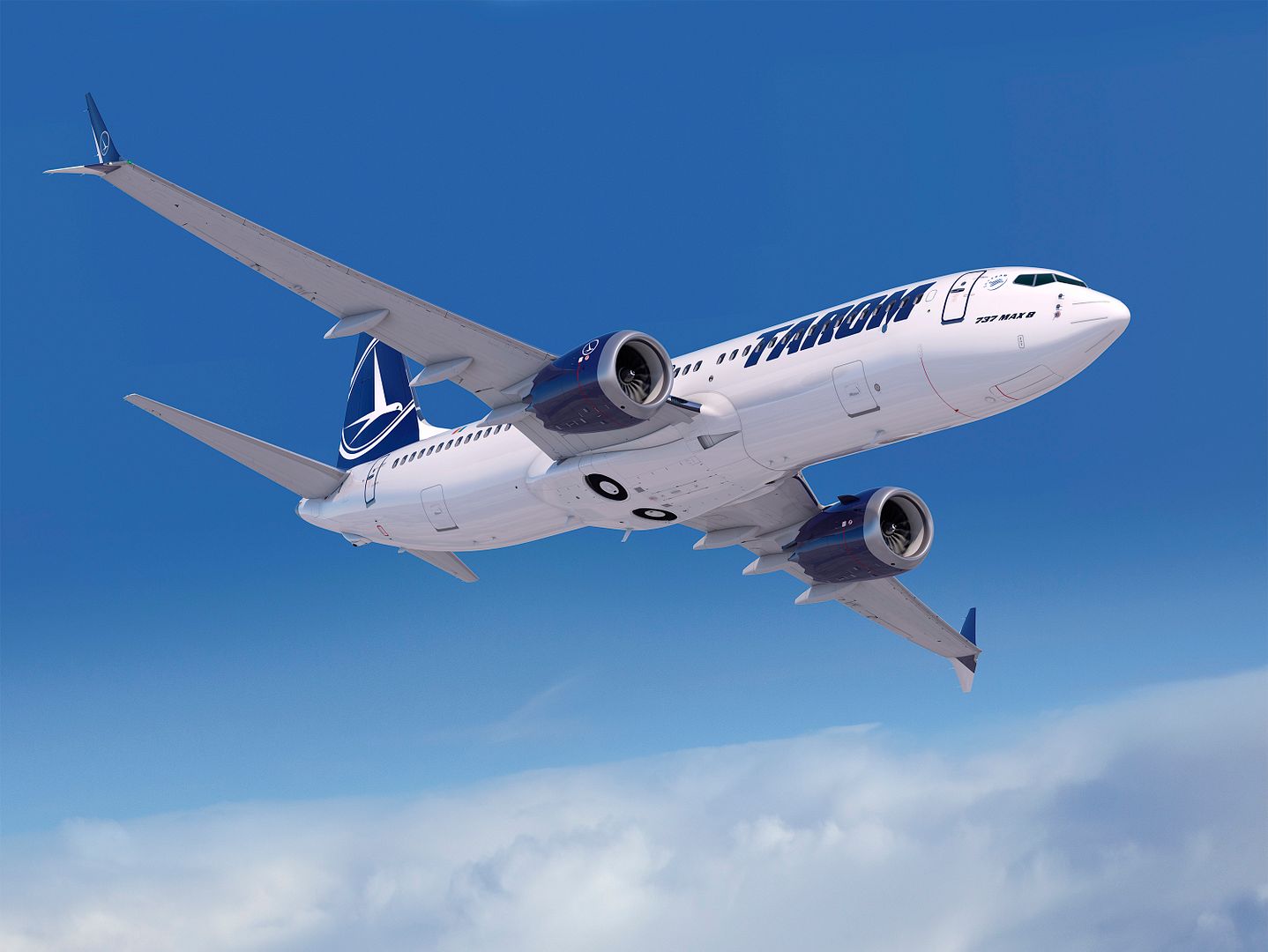
FARNBOROUGH, United Kingdom, July 16, 2018 /PRNewswire/ -- Boeing [NYSE: BA] and Goshawk Aviation Limited. announced an order for 20 737 MAX airplanes at the 2018 Farnborough International Airshow. The order, valued at $2.3 billion according to current list prices, marks the first time the aircraft lessor has purchased jets directly from Boeing.
"Placing direct order is a critical part of Goshawk's overall growth strategy and we are pleased to have finalized our order with Boeing. The 737 MAX family is one of the best-in-class, modern and in-demand narrow-body aircraft with latest technologies which fit well with our focus," said Brian Cheng, Chairman of Goshawk Aviation Limited and Executive Director of NWS Holdings Limited. "We believe the MAX's double-digit fuel efficiency improvement, combined with longer range and market-leading reliability, will strengthen our portfolio and help us continue to deliver world-class, tailored solutions to our customers."
The airplanes, previously listed as unidentified on Boeing's Orders & Deliveries website, are sold to Goshawk Aviation Limited. Goshawk is based in Dublin, Ireland, and is expected to have an owned, managed and committed fleet of over 220 airplanes, including the direct order placed with Boeing.
"We are delighted that Goshawk, with their world-class aircraft leasing team, has selected to expand their portfolio and business model with the 737 MAX. This is a great validation for our Boeing team and the 737 MAX family," said Ihssane Mounir, senior vice president, Commercial Sales & Marketing, The Boeing Company. "With rising demand for narrowbody jets, we are confident that the unmatched economics and capabilities of the 737 MAX will position Goshawk for success and growth."
Goshawk selected the MAX 8 variant. In a standard two-class configuration, the airplane carries 162 to 178 passengers and flies up to 3,550 nautical miles (6,570 kilometers). The airplane provides a 14-percent fuel efficiency gain compared to its predecessor, and 8 percent better than its competition.
The 737 MAX family achieves superior fuel efficiency and range through the latest CFM International LEAP-1B engines, Advanced Technology winglets, and other improvements. The jet also features the signature Boeing Sky Interior and large flight deck displays.
The 737 MAX is the fastest-selling airplane in Boeing history, accumulating more than 4,600 orders from over 100 customers worldwide. For more information and feature content, visit www.boeing.com/commercial/737max.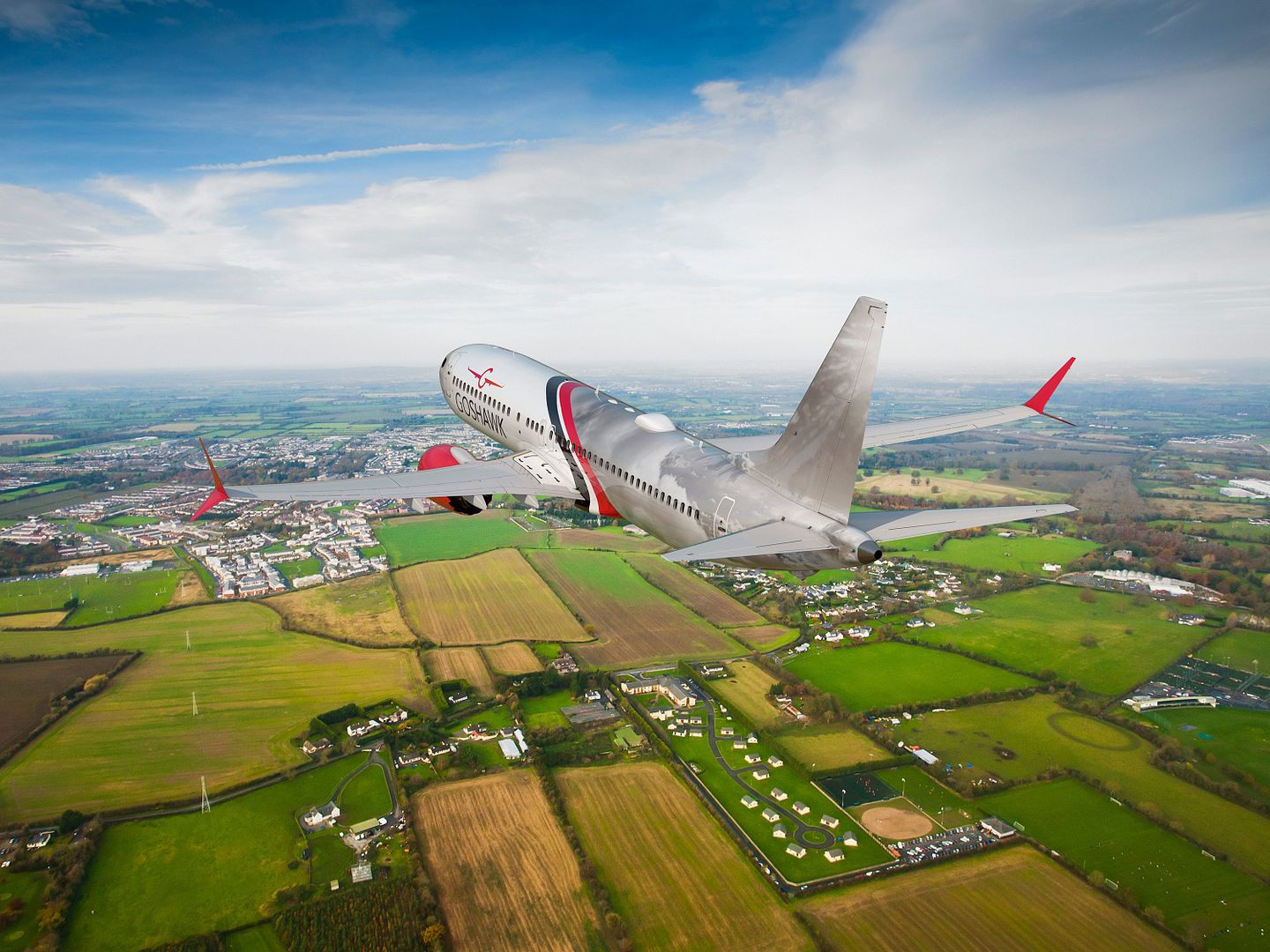
FARNBOROUGH, United Kingdom, July 16, 2018 /PRNewswire/ -- Boeing [NYSE:BA] and Jet Airways confirmed that the Indian carrier placed an order for an additional 75 737 MAX 8 airplanes during a signing ceremony at the 2018 Farnborough International Airshow. The order, valued at $8.8 billion at current list prices, was previously posted as unidentified on Boeing's Orders and Deliveries website.
This order for an additional 75 MAX airplanes helps the Indian carrier expand its network to meet surging demand in the fastest-growing aviation market in the world.
"Our latest order for 75 additional Boeing 737 MAX aircraft reflects our long standing association with Boeing and reposes our faith in the aircraft they manufacture," said Naresh Goyal, Chairman of Jet Airways. "The MAX will allow us to offer guests a superior and well differentiated experience using a modern, reliable and fuel efficient fleet. The order also emphasizes Jet Airways' commitment to the growth and potential of the Indian aviation market."
In June, the Mumbai-based carrier took delivery of its first MAX, a new and improved 737 that delivers a double-digit improvement in fuel efficiency and improved passenger comfort. These new airplanes arrive into an Indian aviation market that continues to grow at significant rates. According to industry data, domestic air traffic in India has grown about 20 percent in each of the past four years.
"We are honored to extend our deep partnership with Jet Airways as they modernize their fleet with the most capable single-aisle airplanes," said Boeing Commercial Airplanes President and CEO Kevin McAllister. "This is a testament to the market-leading economics and reliability of the 737 MAX. I am confident that these new airplanes will support Jet Airways' domestic and international expansion."
Jet Airways is India's second-largest airline with a fleet of nearly 120 airplanes serving more than 60 destinations in 15 countries across Asia, Europe and North America.
The 737 MAX family achieves superior fuel efficiency and range through the latest CFM International LEAP-1B engines, Advanced Technology winglets, and other improvements. The jet also features the signature Boeing Sky Interior and large flight deck displays.
The 737 MAX is the fastest-selling airplane in Boeing history, accumulating more than 4,600 orders from over 100 customers worldwide. For more information and feature content, visit www.boeing.com/commercial/737max.
Farnborough, UK, July 16, 2018 ? Embraer and United Airlines announced at the 2018 Farnborough Airshow that they signed a firm order for 25 E175 jets in a 70-seat configuration. The contract has a value of USD 1.1 billion, based on current list prices, and will be included in Embraer?s 2018 third-quarter backlog. Deliveries will begin in the second quarter of 2019.
?We are thrilled that United is adding another 25 Embraer aircraft to the large existing fleet of almost 400 E-Jets and ERJ?s currently flying in the United Express network,? said Charlie Hillis, Vice President, Sales & Marketing, North America, Embraer Commercial Aviation. ?The class-leading E175 platform is an aircraft that excels in the North American market due to its efficiency, comfort, and reliability. These new E175 aircraft will serve United and its passengers very well.?
?The new E-175 aircraft will provide our customers with a superior product that offers the latest in onboard amenities and comfort,? said Gerry Laderman, United's Senior Vice President of Finance and Acting Chief Financial Officer. ?These aircraft will be a terrific addition to our fleet, and we are excited to begin taking delivery of the aircraft early next year.?
Including this new contract, Embraer has sold more than 420 E175s to airlines in North America since January 2013, earning more than 80% of all orders in this 70-76-seat jet segment.
Since entering revenue service, the E-Jets family has received more than 1,800 orders and over 1,400 aircraft have been delivered. Today, E-Jets are flying in the fleet of 70 customers in 50 countries. The versatile 70 to 150-seat family is flying with low-cost airlines as well as with regional and mainline carriers.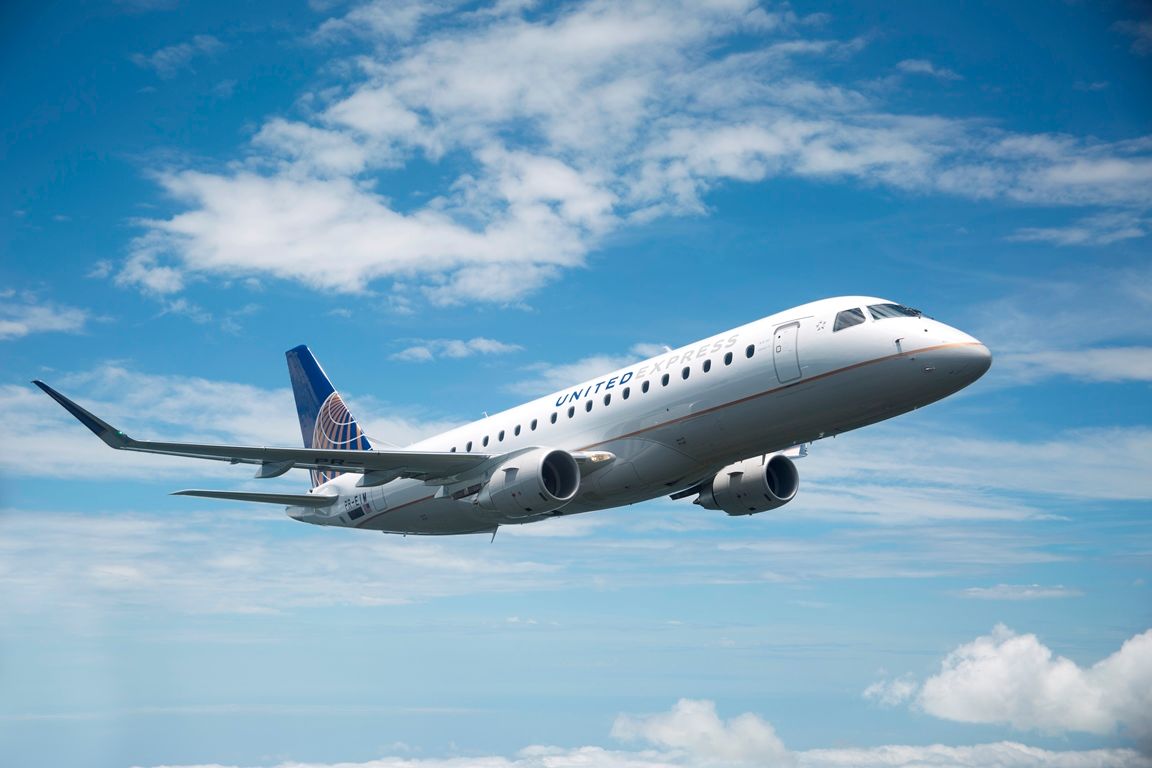
July 16, 2018 Montr?al Commercial Aircraft, Press Release
Bombardier Commercial Aircraft unveiled the interior of the first CRJ Series aircraft with the new ATMOSPH?RE cabin design on the opening day of the Farnborough International Air Show in the United Kingdom.
Bombardier showcased the new cabin alongside launch operator Delta Air Lines and supplier Zodiac Aerospace during its air show inauguration event.
?Our product is evolving, and this signature cabin design represents the latest innovation to our very successful regional jet program,? said Fred Cromer, President, Bombardier Commercial Aircraft. ?This cabin design will add value to airlines, the feedback has already been very positive as demonstrated with the recent momentum we have gained in the market.?
The CRJ900 aircraft on static display at the airshow is painted in Delta Air Lines livery and fitted with the ATMOSPH?RE cabin.
Bombardier will also emphasize its presence at the airshow from July 16-20 with a display of a Q400 aircraft in the colours of Ethiopian Airlines, as well as a Global 6000 business jet featuring the Premier Cabin.
Bombardier?s static display and chalet are located at OE26 and A5, respectively.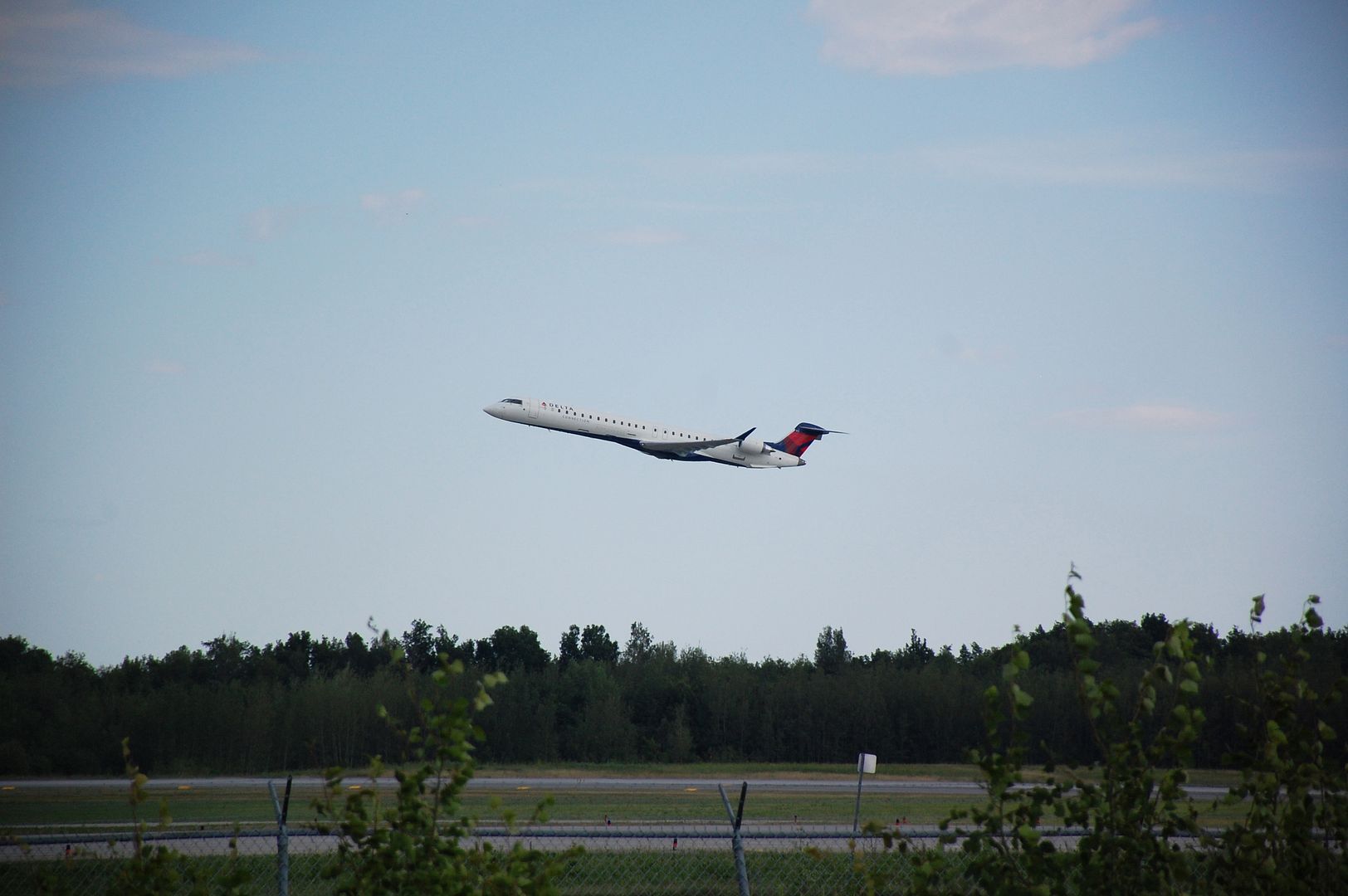
About the ATMOSPH?RE Cabin
The new ATMOSPH?RE cabin sets new standards of passenger experience in the regional jet market segment. Key features of the new interior are comprised of larger passenger living space, wheel-first roller bag capability, more spacious lavatory, increased cabin connectivity options, all integrated in a contemporary design and material choices. In fact, the ATMOSPH?RE cabin design allows each passenger to carry and store an ?oversized? roller bag within the aircraft cabin bins which minimizes the need to check bags at the counter or the gate. To learn more: DiscoverAtmosphere.com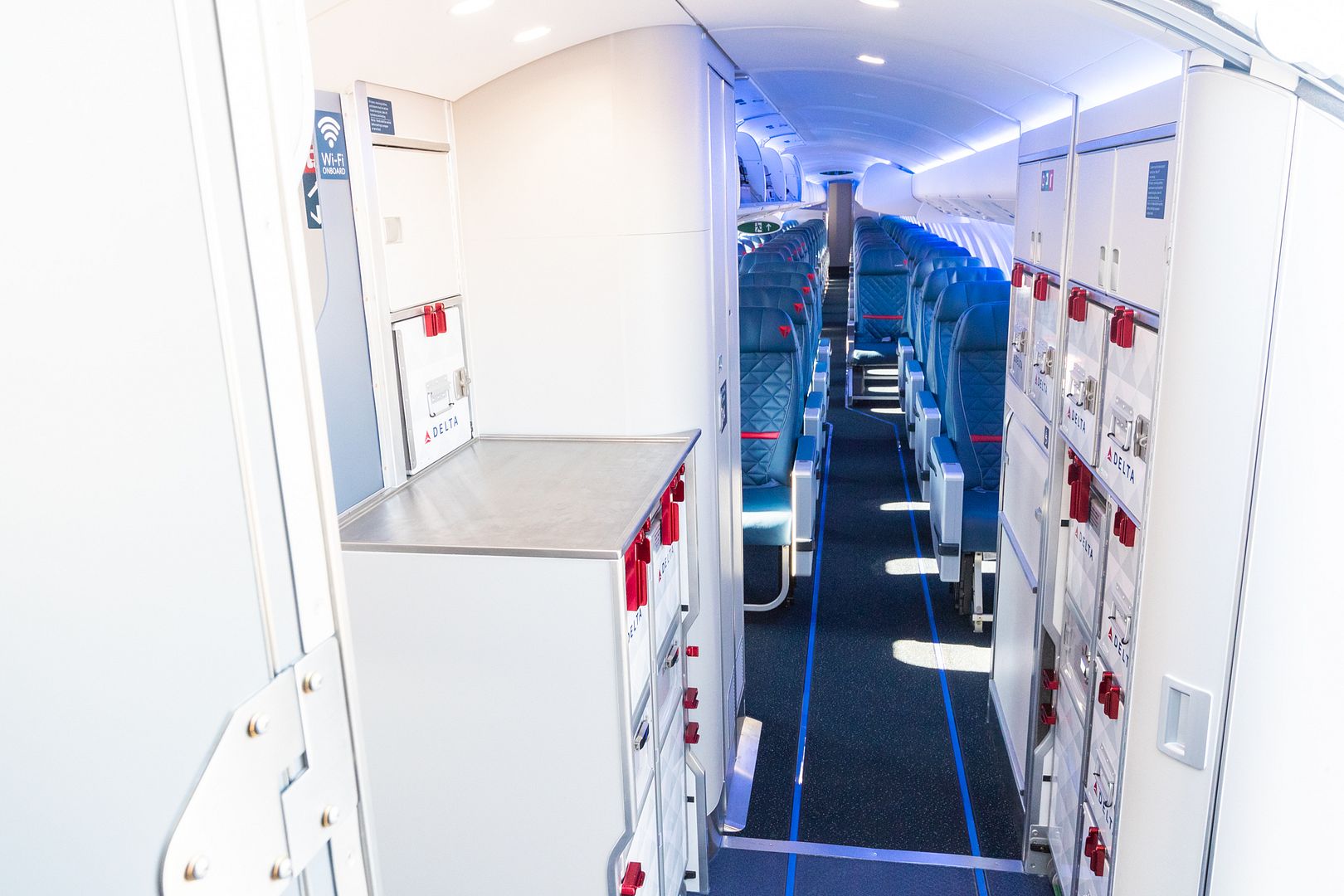
UK Ministry of Defence; issued July 13, 2018.
The Royal Air Force (RAF) has taken delivery of the 20th next-generation Atlas A400M transport aircraft as the programme continues to meet key development milestones.
Secretary of State for Defence Gavin Williamson announced the arrival today at a gala dinner at the Royal International Air Tattoo. The aircraft was handed over to the RAF at Brize Norton, home of the UK?s Air Mobility Force. This coincided with crucial trials to test Atlas?s ability to deliver cargo by parachute and undergo air-to-air refuelling using a RAF Voyager aircraft.
Atlas, which contributed to hurricane relief in the Caribbean last autumn as part of Operation Ruman, is currently deployed on operations in the Middle East and replaced C-130 Hercules in the South Atlantic this spring.
Director Air Support for DE&S, Adrian Baguley said: ?The DE&S Atlas delivery team, based at MOD Abbey Wood and Brize Norton, is proud to be delivering the Atlas aircraft for the RAF which means the UK has a world-leading tactical and strategic airlift capability. We will continue to work hand-in-hand with Airbus and trials personnel to ensure that this fleet of world-leading aircraft is fully delivered and qualified for UK operations.?
The newly-delivered aircraft has formally entered service with the RAF, ready to begin crew training ahead of operational deployment. The international Atlas programme, being delivered by Airbus, is supporting around 8,000 jobs in the UK. In total the UK has ordered 22 Atlas aircraft which are all expected to be delivered to the RAF by the early 2020s.
Secretary of State for Defence, Gavin Williamson said: ?From deploying troops to transporting armoured vehicles, the Atlas aircraft has played a global role in operations in the Middle East against Daesh and providing vital relief in the Caribbean. As we come closer to receiving the full fleet of aircraft, we can be proud of the role the Atlas has played in supporting the RAF lift-off into a new century of air power.?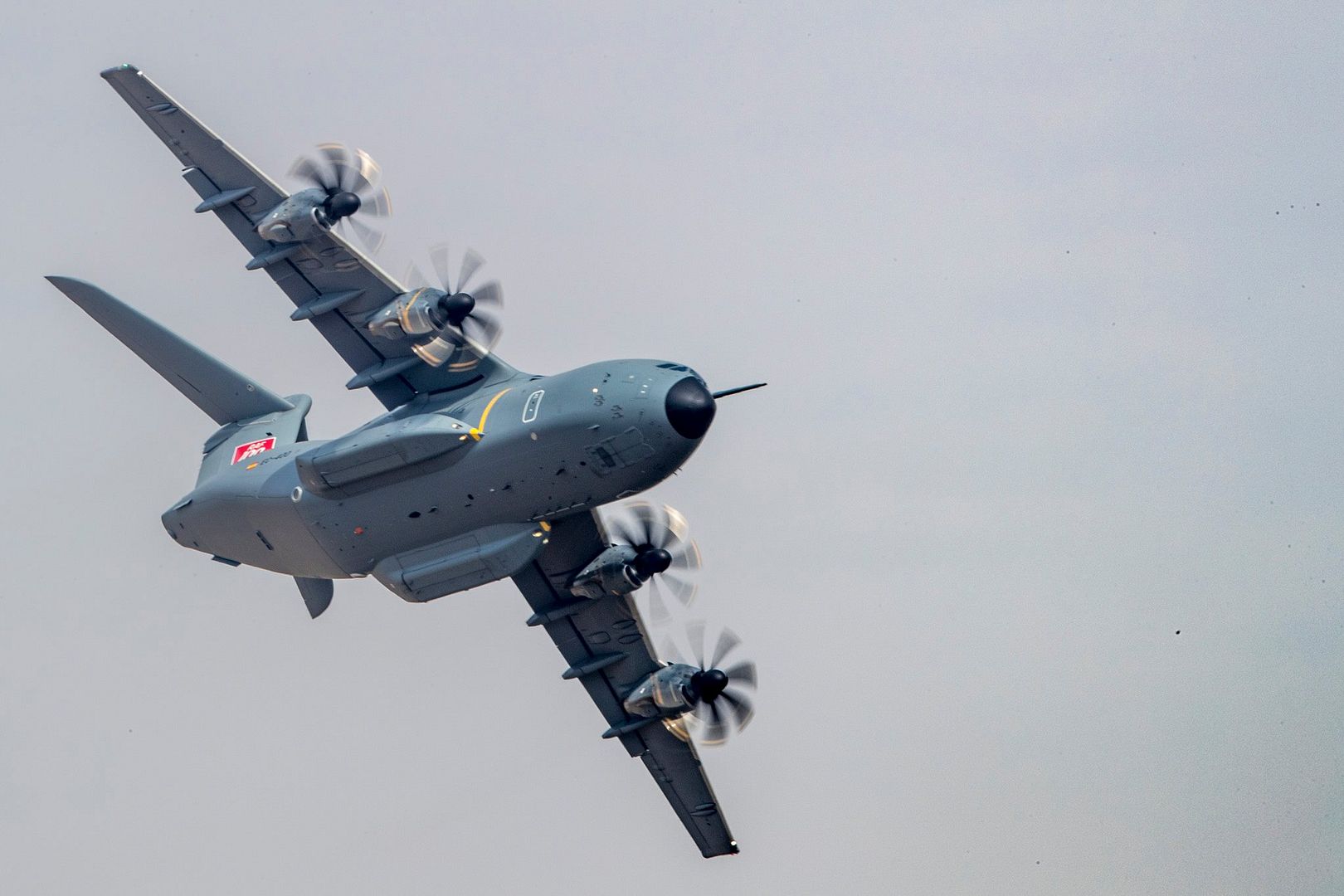
The cargo delivery trial, carried out by a UK aircraft crewed by Air Warfare Centre and QinetiQ personnel, involved containers weighing around one tonne in weight being dropped in sequence over Salisbury Plain.
For the air-to-air refuelling trial, which took place near Seville in Spain, an Airbus-owned Atlas, operated by a joint crew including Airbus and UK personnel, received fuel from an RAF Voyager tanker aircraft over a wide range of altitudes and air speeds.
The results from both trials are now being analysed with a view to delivering operational clearances.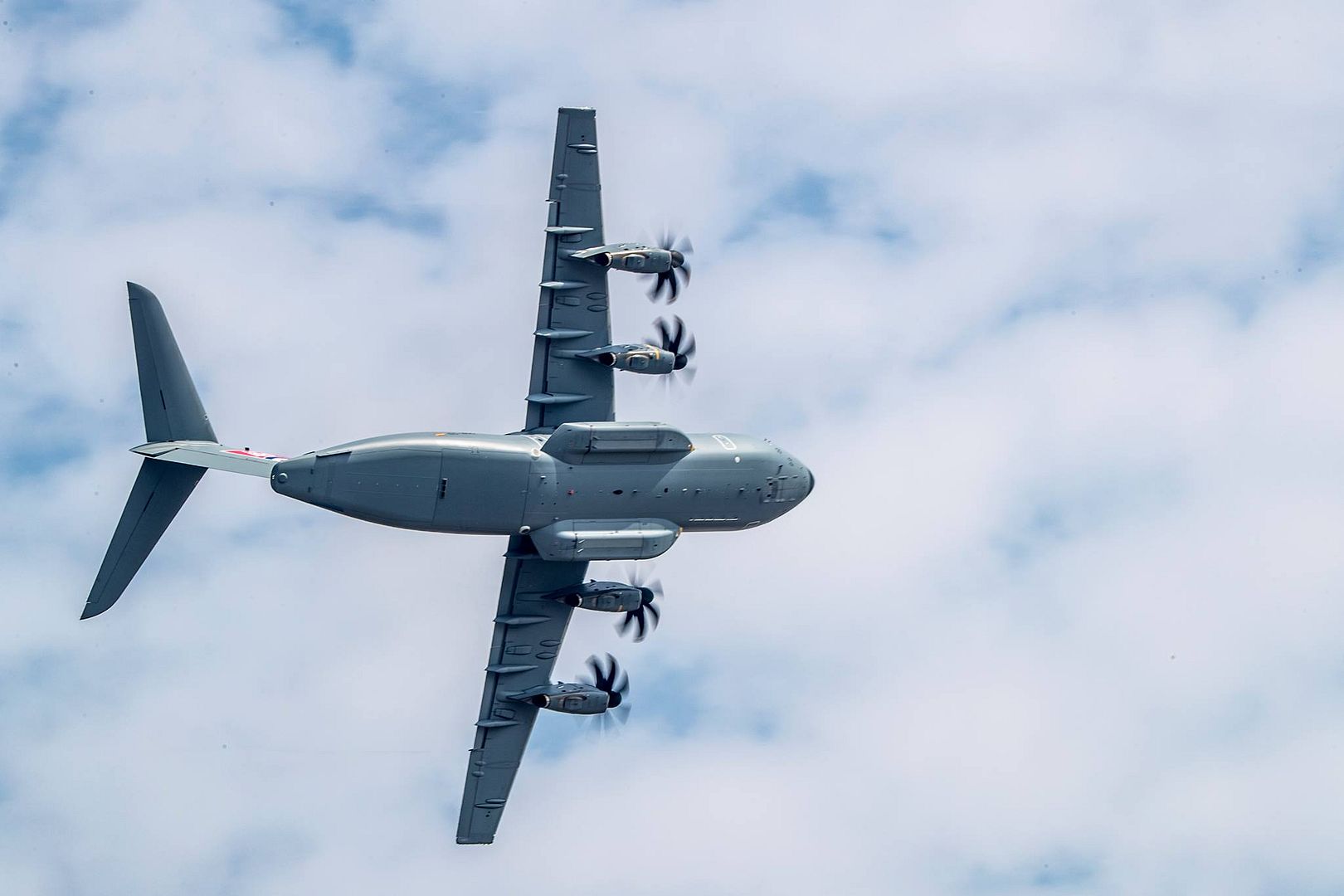
-
 Main AdminU.S. Army National Guard UH-60L Black Hawk helicopters from 1st Assault Helicopter Battalion, 150th Aviation Regiment land to pick up Soldiers from Bravo Company, 1st Battalion, 114th Infantry (Air Assault) at Contingency Operation Location Victory on Joint Base McGuire-Dix-Lakehurst, N.J., July 16, 2018. (U.S. Air National Guard photo by Master Sgt. Matt Hecht)
Main AdminU.S. Army National Guard UH-60L Black Hawk helicopters from 1st Assault Helicopter Battalion, 150th Aviation Regiment land to pick up Soldiers from Bravo Company, 1st Battalion, 114th Infantry (Air Assault) at Contingency Operation Location Victory on Joint Base McGuire-Dix-Lakehurst, N.J., July 16, 2018. (U.S. Air National Guard photo by Master Sgt. Matt Hecht)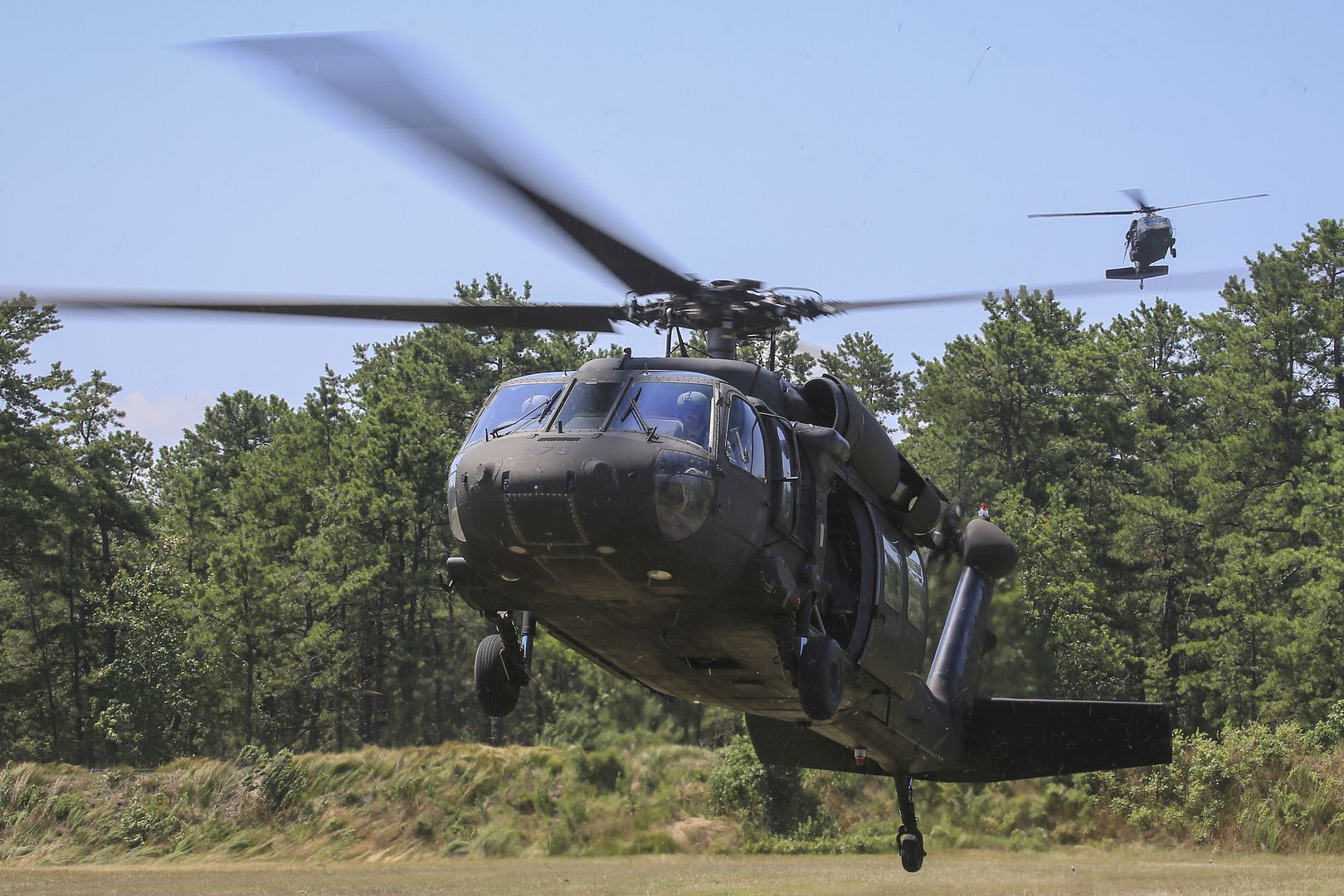
A pilot from the 157th Expeditionary Fighter Squadron lands an F-16 Fighting Falcon, July 16, 2018, at an undisclosed location in Southwest Asia. More than 300 Airmen from the 169th Fighter Wing of the South Carolina Air National Guard recently deployed to the 407th Air Expeditionary Group in support of Operation Inherent Resolve. (U.S. Air Force photo by Staff Sgt. Dana J. Cable)
A pilot from the 157th Expeditionary Fighter Squadron prepares to park an F-16 Fighting Falcon, July 16, 2018, at an undisclosed location in Southwest Asia. More than 300 Airmen from the 169th Fighter Wing of the South Carolina Air National Guard recently deployed to the 407th Air Expeditionary Group in support of Operation Inherent Resolve. (U.S. Air Force photo by Staff Sgt. Dana J. Cable)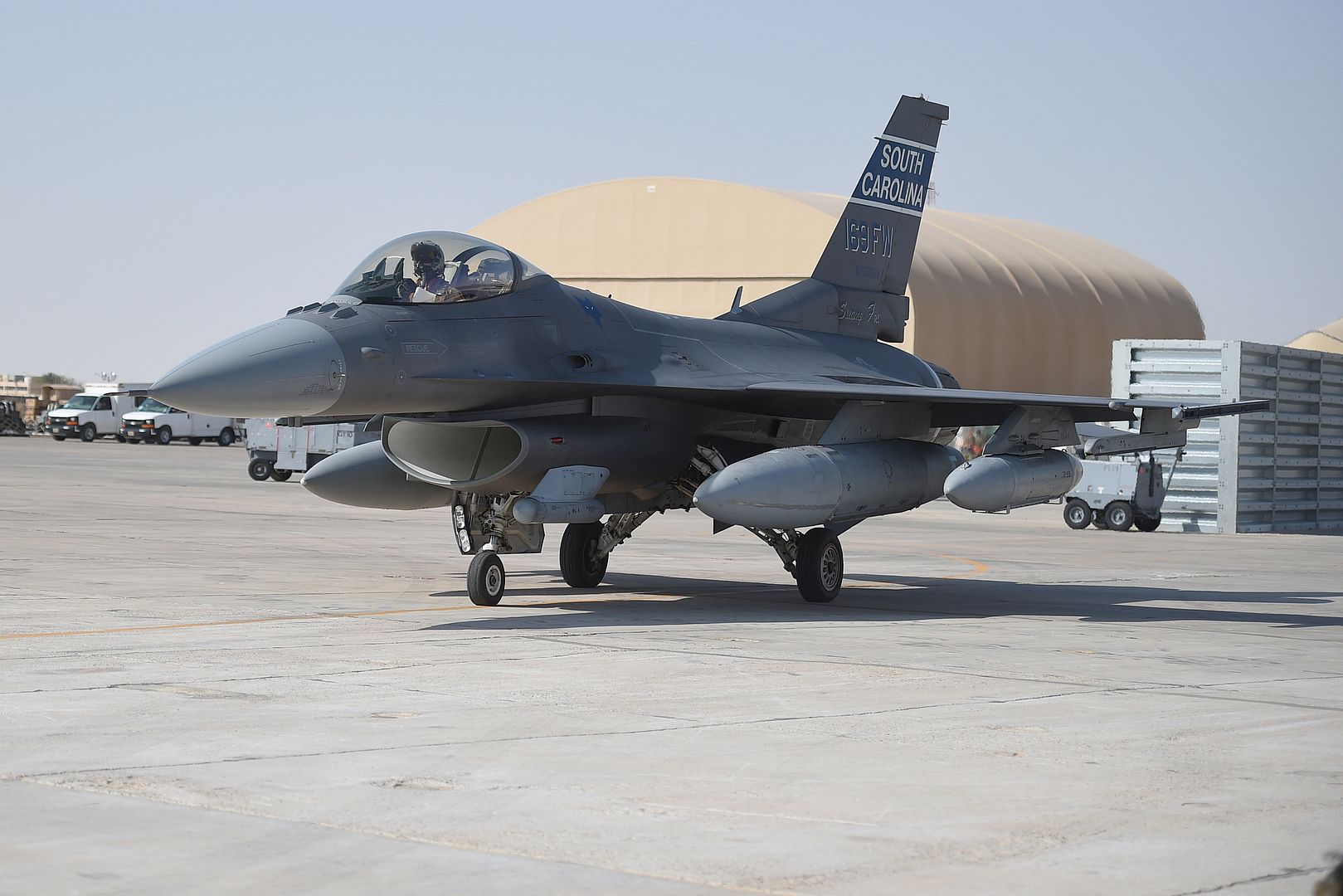
Capt. Samuel Harms, 157th Expeditionary Fighter Squadron pilot, prepares to park an F-16 Fighting Falcon, July 16, 2018, at an undisclosed location in Southwest Asia. More than 300 Airmen from the 169th Fighter Wing of the South Carolina Air National Guard recently deployed to the 407th Air Expeditionary Group in support of Operation Inherent Resolve. (U.S. Air Force photo by Staff Sgt. Dana J. Cable)
A pilot with the Finnish Air Force demonstrates the capabilites of a NH90 tactical helicopter during the 2018 Royal International Air Tattoo at RAF Fairford, United Kingdom on July 14, 2018. This yeat?s RIAT celebrated the 100th anniversary of the RAF and highlited the United States? ever-strong alliance with the UK. (U.S. Air Force photo by TSgt Brian Kimball)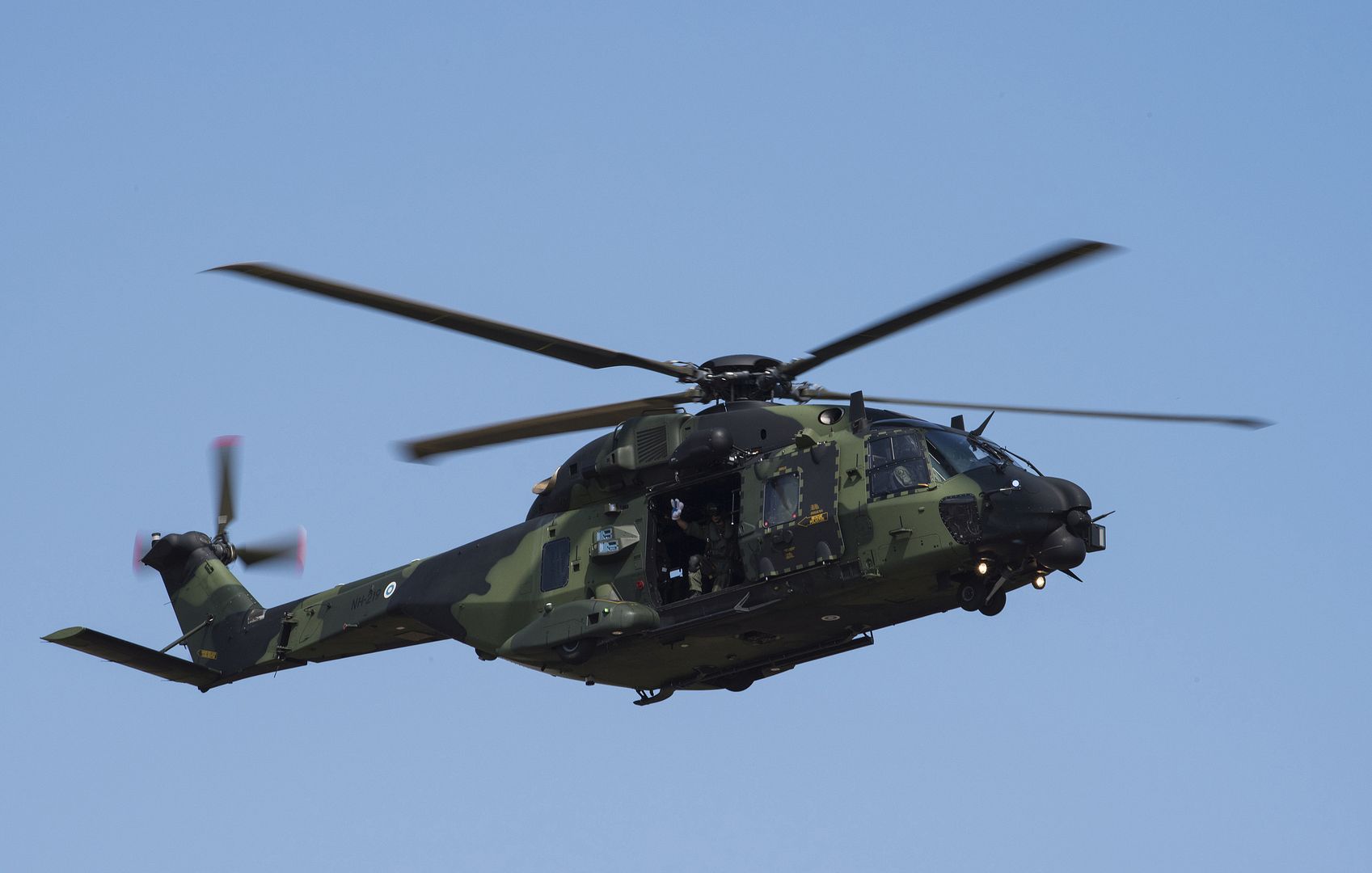
PACIFIC OCEAN (July 17, 2018) An F-35B Lightning II aircraft with Marine Fighter Attack Squadron (VFMA) 121 lands on the flight deck of the amphibious assault ship USS Wasp (LHD 1) during carrier qualifications and flight deck certifications. VMFA-121 is aboard Wasp assigned under the 31st Marine Expeditionary Unit forward deployed to Okinawa, Japan. (U.S. Navy photo by Mass Communication Specialist 2nd Class Michael Molina/Released)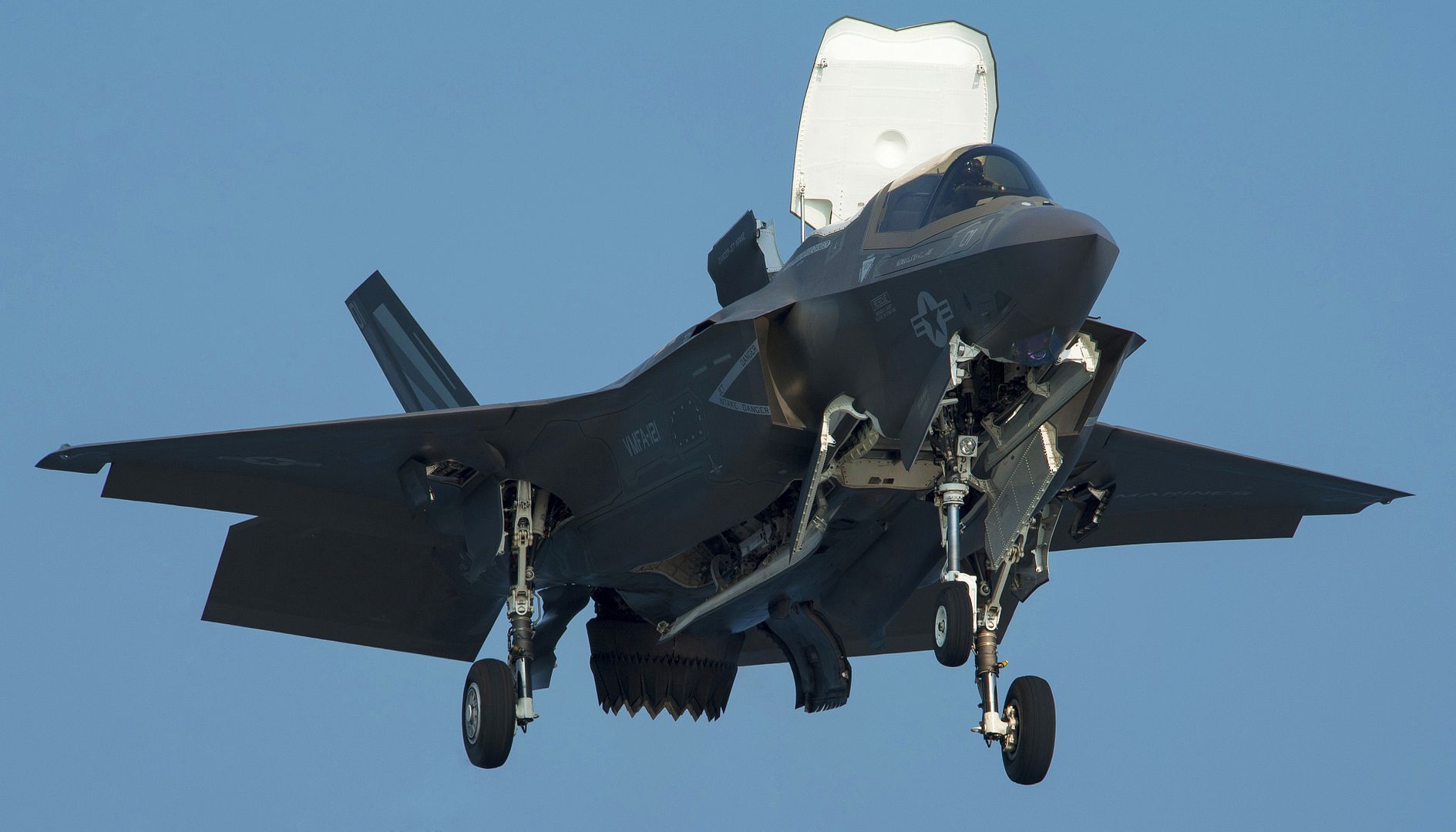
PACIFIC OCEAN (July 17, 2018) An F-35B Lightning II aircraft assigned to Marine Fighter Attack Squadron (VFMA) 121 takes off from the amphibious assault ship USS Wasp (LHD 1) during carrier qualifications and flight deck certifications. VMFA-121 is aboard Wasp assigned under the 31st Marine Expeditionary Unit forward deployed to Okinawa, Japan. (U.S. Navy photo by Mass Communication Specialist 2nd Class Rawad Madanat/Released)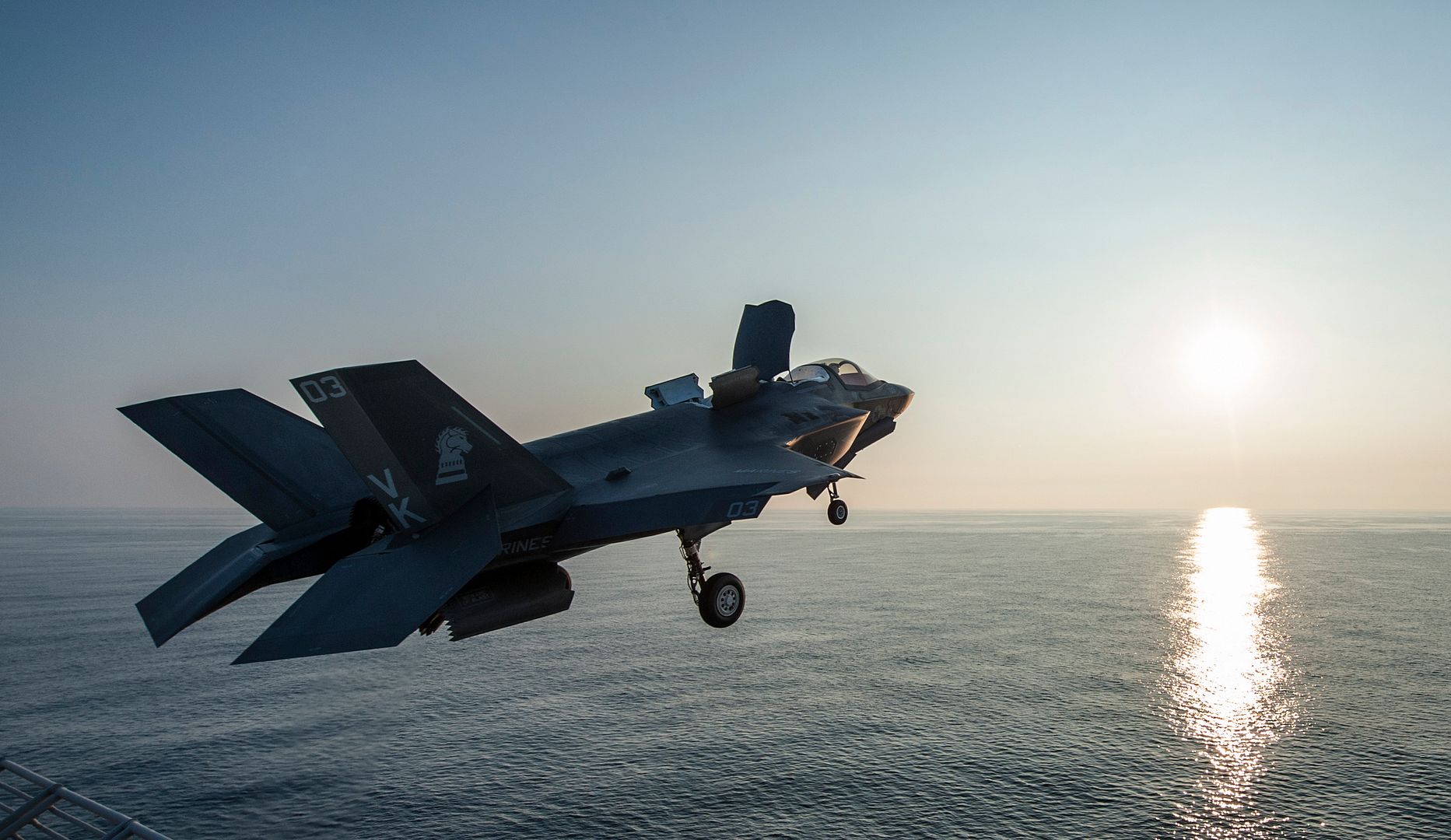
DULLES, Va. ? July 15, 2018 ?Northrop Grumman Corporation (NYSE: NOC) announced that its Cygnus? spacecraft, following a highly successful stay at the International Space Station, has departed from the station to begin the next phase of its mission. While docked with the station, Cygnus performed a reboost experiment for the International Space Station demonstrating the spacecraft?s capability to raise the orbiting laboratory?s orbit. The ?S.S. J.R. Thompson? is now set to deploy six CubeSats in orbit before reentry into the Earth?s atmosphere. This mission marks the fifth time that Cygnus has been used for NanoRacks CubeSat deployments during its secondary payload mission phase.
Cygnus departed from the International Space Station at 8:37 a.m. ET. Five days before departure, the space station reoriented itself and Cygnus fired its thrusters for the International Space Station reboost demonstration, making Cygnus the first American spacecraft to reboost the station since the retirement of the Space Shuttle fleet seven years ago. The spacecraft spent 52 days at the station before leaving with more than 6,600 pounds (over 3,000 kilograms) of disposable cargo, a new record for Cygnus.
?This mission once again demonstrates the expanded capabilities for Cygnus and paves the way for future mission objectives,? said Frank Culbertson, president, space systems group, Northrop Grumman. ?Cygnus performed extremely well during the International Space Station orbit raising experiment, and now the next phase of our extended orbital mission is ready to begin with the deployment of six CubeSats.?
The mission began May 21 when Cygnus launched aboard a Northrop Grumman Antares? rocket from NASA?s Wallops Flight Facility in Virginia. Upon arrival at the orbiting laboratory, Cygnus delivered approximately 7,400 pounds (3,350 kilograms) of cargo and science experiments to the astronauts, marking the company?s ninth operational mission to the International Space Station.
Following unberthing, the ?S.S. J.R. Thompson? will raise its orbit above the International Space Station and use a NanoRacks CubeSat deployer to release six CubeSats into orbit. Four of the CubeSats will join Spire Global?s commercial weather satellite constellation for global ship and weather tracking. The NanoRacks manifest also includes the AeroCube 12A and 12B satellites. These two CubeSats come from the Aerospace Corporation and test new star tracker imagers and high-efficiency solar panels.
The mission is expected to end July 30 when Cygnus will execute a safe, destructive reentry into the Earth?s atmosphere over the Pacific Ocean. Stay informed with real-time updates on the science experiments aboard Cygnus through Northrop Grumman?s Twitter account: https://twitter.com/northropgrumman.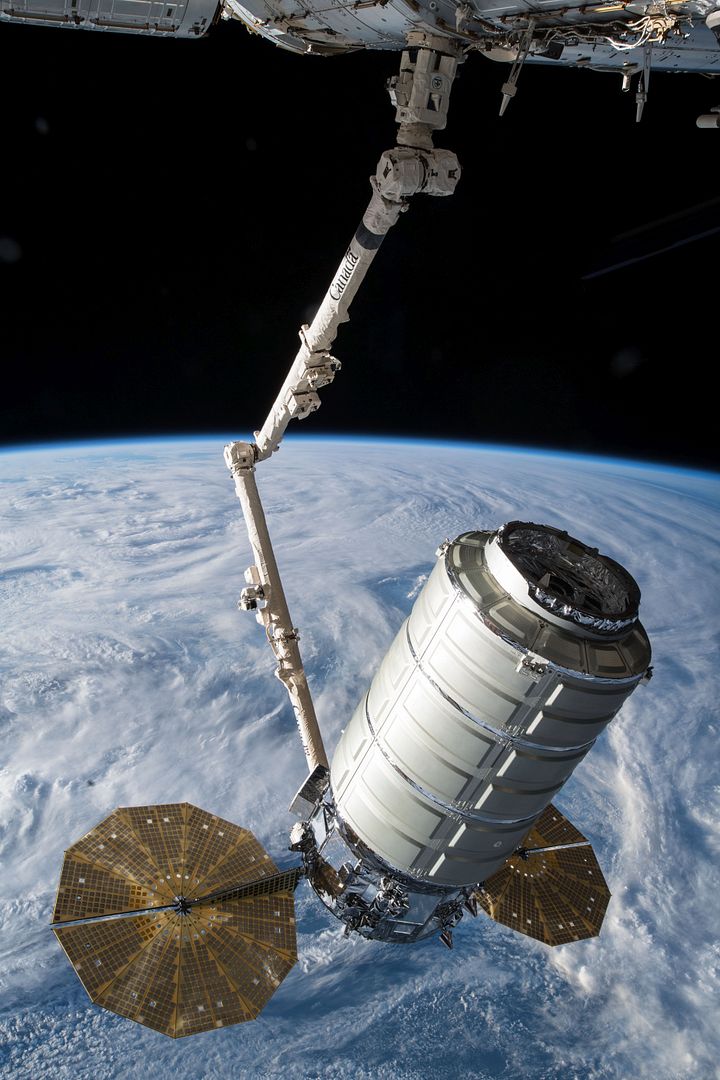
FARNBOROUGH, United Kingdom, July 17, 2018 /PRNewswire/ -- Boeing (NYSE: BA), Volga-Dnepr Group and CargoLogicHolding today signed a package of agreements that will further optimize the cargo transportation leaders' airplane fleet and global operations. The deals, announced at the 2018 Farnborough International Airshow, include a letter of intent to acquire 29 Boeing 777 Freighters, confirmation of an order for five Boeing 747-8 Freighters, the purchase of a crew pairing solution, and an agreement to work together on future freighter projects.
"This is a very significant day in our company's history. With this package of agreements, we will grow our business with the unique and unmatched 747-8 Freighter and open new market opportunities with the 777 Freighter, the world's longest range twin-engine cargo jet," said Alexey Isaykin, President of Volga-Dnepr Group and Chairman of CargoLogicHolding. "And we will work with Boeing to develop new freighter solutions that will help us continue to serve the unique and fast-changing requirements of our global customers."
Volga-Dnepr Group is among the world's largest Boeing 747 Freighter operators. The Group, and its subsidiaries and strategic partners have leveraged the jet's unique cargo-loading and cargo-carrying capabilities to build an unmatched global network for transporting unique, oversize and heavy cargo. Volga-Dnepr said it wanted to add more 747-8 Freighters to its fleet and affirmed a commitment to purchasing five more of the jets valued at $2 billion in current list prices.
"We are true believers in the 747-8 Freighter, it is a very special airplane. We fly it every day and we understand why operators around the world want more of them," said Isaykin.
While the Group and its partners have largely built its business on very large four-engine freighters, it now plans to expand its future fleet options with a commitment for the twin-engine 777 Freighter.
CargoLogicHolding intends to order 29 Boeing 777 Freighters, valued at $9.8 billion according to list prices. The airplane's unmatched range and significant cargo capacity promises to open up significant network and growth opportunities.
"CargoLogicAir, part of CargoLogicHolding, started its business by flying 747 scheduled and charter flights to and from the UK. We are excited to extend the network using a range of Boeing family aircraft including Boeing 747-8F, 777F, 767F and 737-800BCF," added Mr Isaykin.
The package of agreements also includes a commitment for both companies to explore other freighter solutions, such as new production 767 Freighters or converted cargo jets such as the 737-800 Boeing Converted Freighter.
With the resurgence in the air freight market ? demand grew nearly 10 percent last year ? Boeing has seen a big spike in interest for cargo jets. Boeing has now captured more than 100 orders and commitments for production and converted freighters this year.
"We are extremely honored that Volga-Dnepr Group and CargoLogicHolding have once again placed their trust on Boeing's freighter family to carry their business into the future. We look forward to expanding our relationship with our great partners and delivering new freighters to them for many years to come," said Kevin McAllister, president and chief executive officer, Boeing Commercial Airplanes.
Volga-Dnepr Group also uses Boeing Global Services to improve its offering for its customers. Its airlines use offerings such as Fuel Dashboard, Electronic Charting, Airport Moving Map and other advanced services, many of which are powered by Boeing AnalytX.
As part of the agreements, Boeing Global Services will provide AirBridgeCargo ? a Volga-Dnepr Group airline ? with a Crew Pairing solution to support the planning and operation of the airline's 300 crew members. The program creates optimized work duties, improving crew efficiency and improving airline productivity.
"This service puts the most advanced data analytics capabilities at Volga-Dnepr's hands as they operate the most advanced freighters in the world. It's a prime example of how Boeing integrates services solutions with the platform to help customers work better, work faster and save on operating costs," said Ihssane Mounir, senior vice president of Commercial Sales & Marketing for The Boeing Company.
About Cargo Logic Holding Limited
Cargo Logic Holding Limited is the private holding company based in the United Kingdom. It is a unique platform that unites under its umbrella the International Group of the Cargo Airlines, with CargoLogicAir, the only British all-cargo airline, being its main member, which started its commercial operations on the global market since early 2016.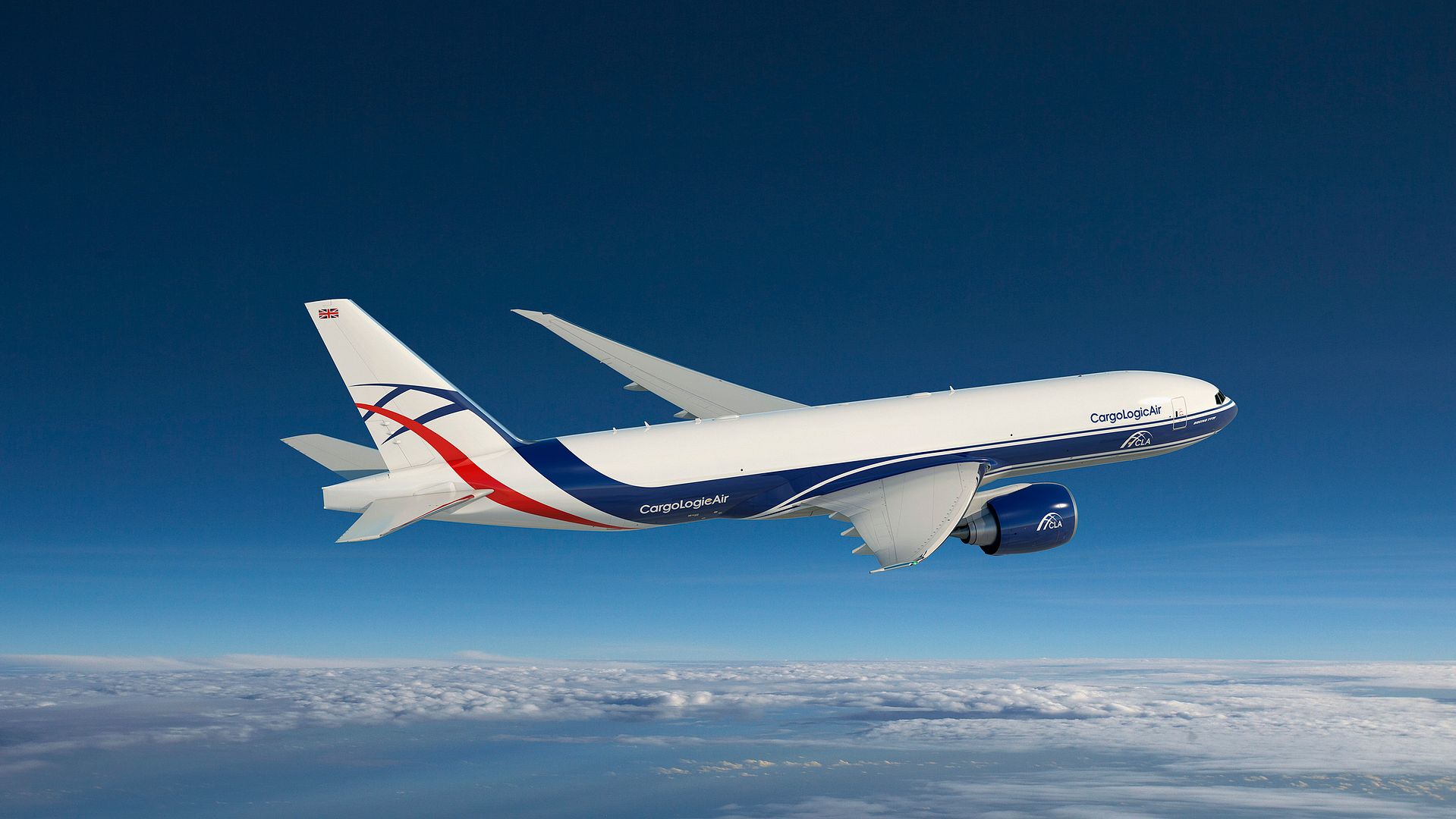
FARNBOROUGH, United Kingdom, July 17, 2018 /PRNewswire/ -- Boeing [NYSE:BA] and Aviation Capital Group (ACG) today announced an order for 20 737 MAX 8 airplanes at the 2018 Farnborough International Airshow. The order, valued at $2.34 billion at list prices, raises ACG's 737 MAX direct-buy order quantity to 100.
"The 737 MAX is core to our strategic growth plans, as the airplane continues to command strong interest in the marketplace," said Khanh T. Tran, CEO of ACG. "This order expands our diverse portfolio, which includes three 737 MAX variants, providing us with more flexibility and some of the most advanced single-aisle jets to serve our customers."
The new orders will appear on Boeing's Orders & Deliveries website once all contingencies have been met.
ACG first joined the 737 MAX family in 2012, placing orders for the MAX 8 and MAX 9. The lessor added to its portfolio last year by joining the launch group for the 737 MAX 10, the largest variant with the lowest operating cost per seat.
"We are pleased to extend our partnership with ACG as they continue to expand their 737 MAX portfolio," said Ihssane Mounir, senior vice president of Commercial Sales and Marketing, The Boeing Company. "This order reflects continued market demand for the best single-aisle airplane in its class. The 737 MAX will deliver exceptional performance and market-leading economics to ACG's world-class customers for many years to come."
According to the Boeing 2018 Commercial Market Outlook released this week, airlines will need 31,360 new single-aisle airplanes, such as the 737 MAX, over the next 20 years. That represents a 6-percent increase over last year's forecast. Analysts say the demand is fueled by the success of low-cost carriers and a big requirement for single-aisle jets for growth and replacement.
The 737 MAX family is designed to offer customers exceptional performance, with lower per-seat costs and an extended range to open up new destinations in the single-aisle market. The 737 MAX incorporates the latest CFM International LEAP-1B engines, Advanced Technology winglets, Boeing Sky Interior, large flight deck displays and other features to deliver the highest efficiency, reliability and passenger comfort in the single-aisle market.
The 737 MAX is the fastest-selling airplane in Boeing history, accumulating more than 4,600 orders from 100 customers worldwide. For more information and feature content, visit www.boeing.com/commercial/737max.
About Aviation Capital Group
Aviation Capital Group is one of the world's premier full service aircraft asset managers with 465 owned, managed and committed aircraft as of March 31, 2018, which are leased to approximately 95 airlines in approximately 45 countries. ACG was founded in 1989 and is an indirect majority-owned subsidiary of Pacific Life Insurance Company.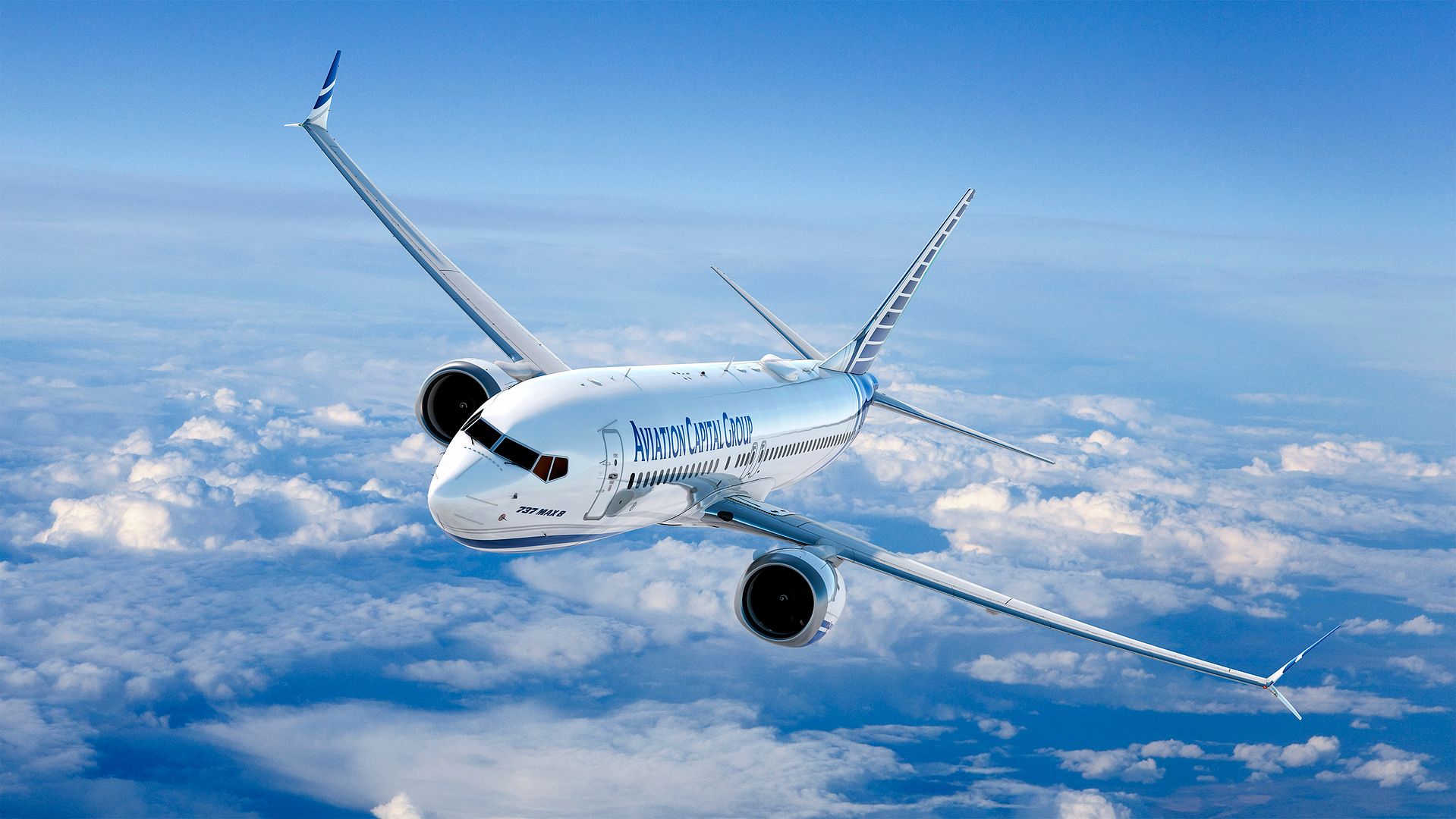
Press release
16 July 2018
Today, Saab announces the RBS15 Gungnir next generation anti-ship missile system that is being shown at the Farnborough International Airshow 2018 for the first time.
The littorals in the Baltic Sea has created the foundation and birth of the RBS15 missile family, designed for the most demanding environments and customers. The littoral environment already present countless threats but conflict scenarios can change. Armed forces therefore need to evolve their capabilities and the RBS15 Gungnir provides the solution.
The new system continues the tradition of robust and autonomous all-weather capability of the RBS15 missile family but utilising a design that unlocks a new level of future growth potential.
?RBS15 Gungnir is offered in both air-launched and surface-launched configurations that offer greatly improved capabilities, compared to other missile systems on the market. With an improved range to more than 300 km and highly advanced target seeker, it gives the capability to engage any target, in all conditions,? says G?rgen Johansson, Senior Vice President and head of Saab business area Dynamics.
The option to engage targets from the air, as well as from land and sea gives the ability to perform coordinated attacks, with multiple missiles, against a wide range of naval and land-based targets thereby increasing mission flexibility and success.
Whilst RBS15 Mk3 delivers the capabilities that forces require today, the RBS15 Gungnir also integrates with pre-existing RBS15 infrastructure to fulfil tomorrow?s defence requirements. The system is backwards compatible, so an investment in Mk3 today opens a smooth path to transition into Gungnir tomorrow.
The next generation version of the RBS15 development and production programme was first contracted in March 2017 with the Swedish Defence Material Administration (FMV). This next generation of RBS15 systems is named Gungnir. That March 2017 contract amounted to SEK 3.2 billion with deliveries to take place during the period 2017-2026. Additional production of missiles was contracted with FMV in April 2017 for MSEK 500, with deliveries to begin in the mid-2020s.
The RBS15 missile family is jointly produced by Saab and Diehl Defence GmbH & Co. KG and serves with various navies, coastal batteries and air forces from Sweden, Finland, Germany, Poland, Croatia, Thailand and an undisclosed country.
The name Gungnir is from Scandinavian mythology and refers to the Norse god Odin?s spear which never missed its target. RBS15 Gungnir is the system level name whilst in the air-launched configuration the missile is called the RBS15 Mk4 Air.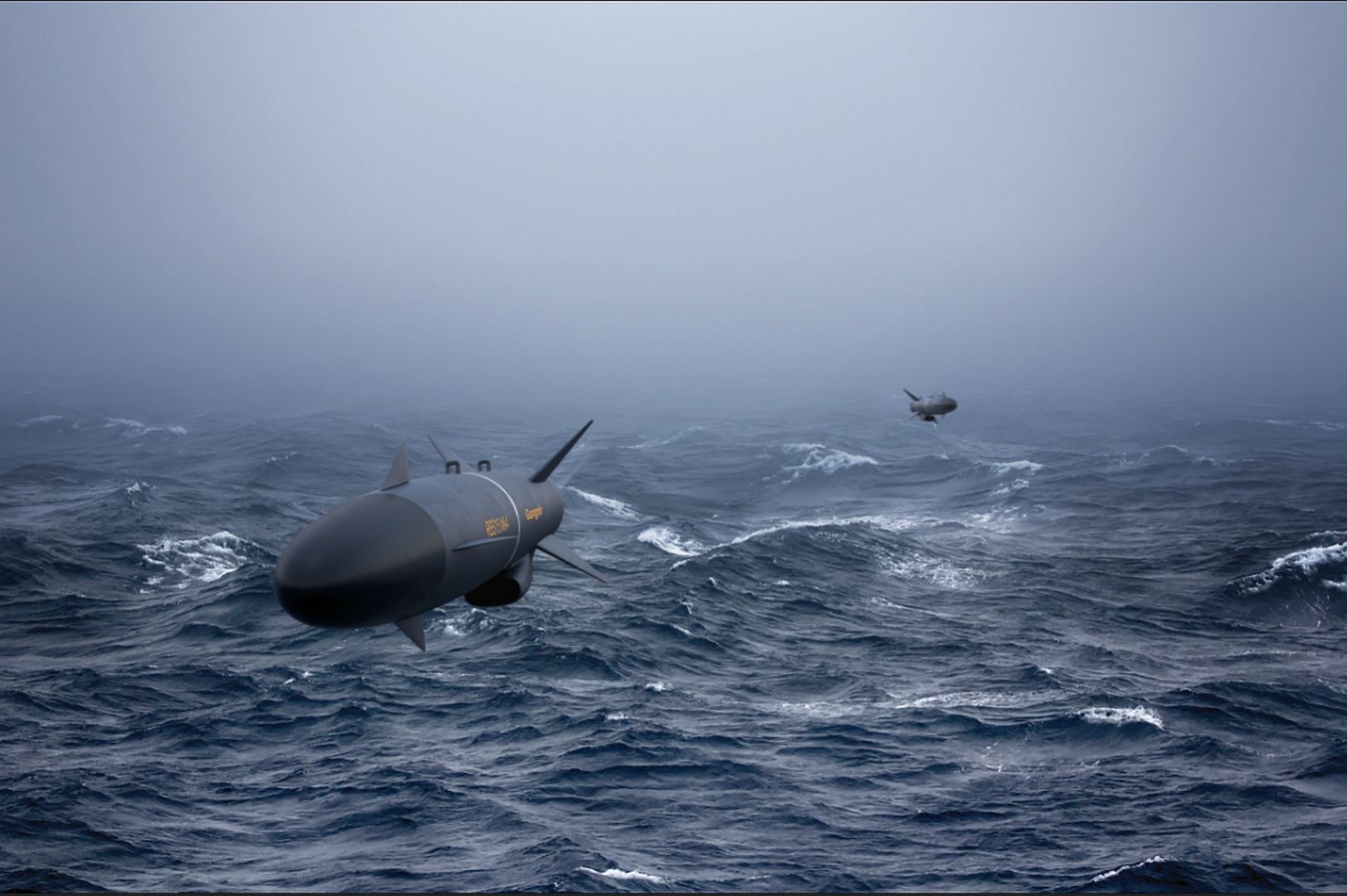
17 July 2018
Saab?s GlobalEye has achieved a number of significant milestones in 2018, commencing with the rollout of the first aircraft in February 2018. At the Farnborough International Airshow Saab explained the achievements being delivered with this newest addition to its airborne surveillance system family.
GlobalEye is an Airborne Early Warning & Control (AEW&C) aircraft that is a true swing role multi-mission solution. It combines multiple sensors and sophisticated data fusion into an intuitive mission system on the Bombardier Global 6000 jet with fully networked communications. This capability gives excellent flexibility across the full mission spectrum in peacetime to warfighting, and particularly benefits joint force commanders managing combined air, sea and land operations.
To deliver this unique capability Saab?s head of Airborne Surveillance Systems, Lars Tossman from the business area Surveillance, talked about the highlights so far.
?In a period of just over two years Saab has rolled out and then, a few weeks later, flown GlobalEye. The flight test programme is running according to plan with the flight envelope being opened up, whilst on the ground the mission system completed all its rig testing,? said Lars. ?We are very satisfied with all these results and believe GlobalEye is going to be unrivalled in the capabilities it offers.?
Saab?s collective in-house sensors, command and control, aircraft design, manufacturing and system integration capabilities are integral to delivering such an advanced capability as GlobalEye. It also reflect the decades of experience with the Erieye AEW&C system in-service around the world on a variety of jet and turbo-prop platforms.
The development and production contract for GlobalEye was awarded at the Dubai Air Show November 2015 by the United Arab Emirates with an initial order for two systems. An additional order by the UAE for a third system was announced in 2017. GlobalEye brings extended detection range, endurance and the ability to perform multiple roles with one solution, including tasks such as search & rescue, border surveillance and military operations.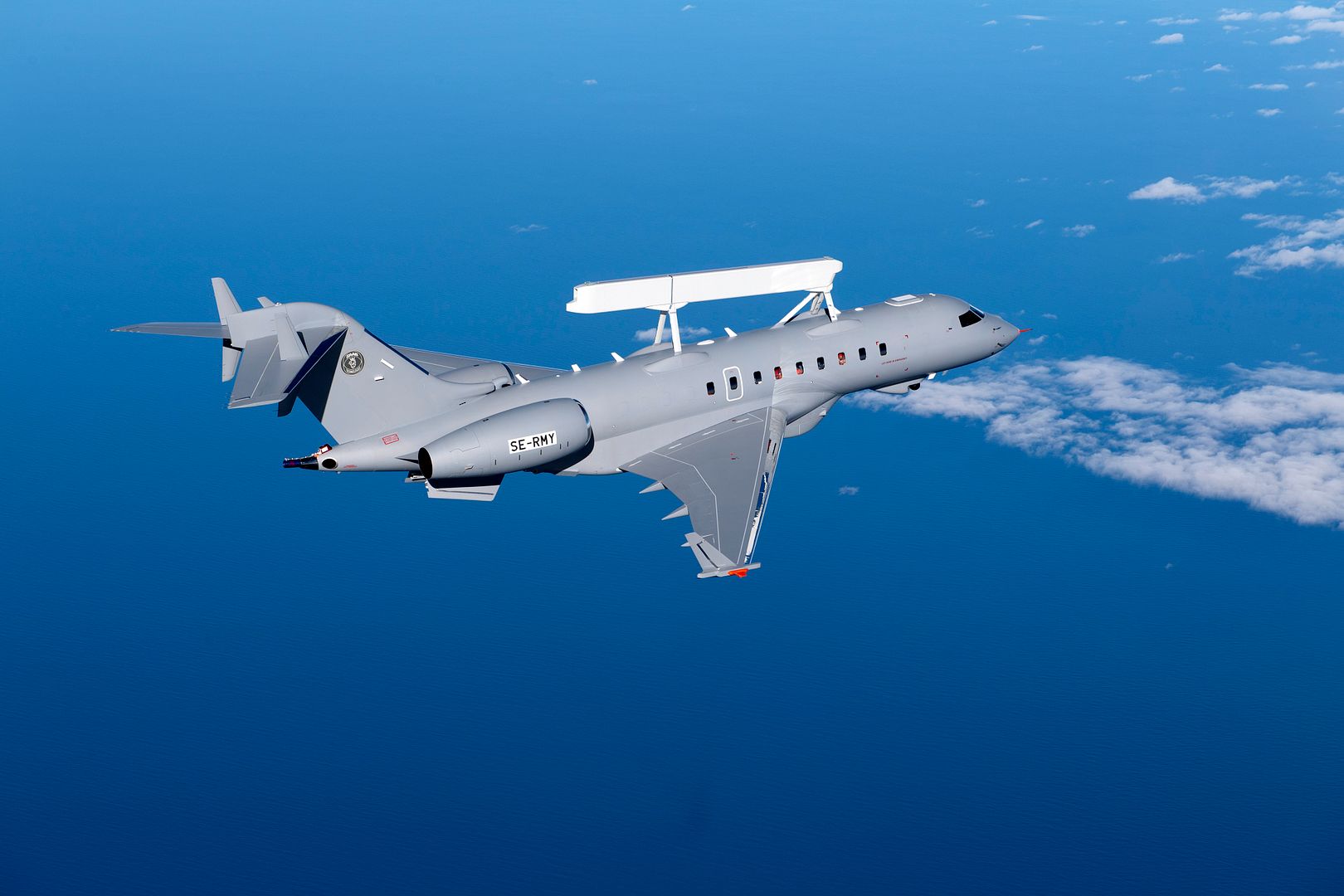
Airbus confirmed at the Farnborough Airshow a deal agreed earlier in 2018 that Sichuan Airlines, based in the Southwestern Chinese city of Chengdu, has selected the A350 XWB to become the latest aircraft in its fleet.
Sichuan Airlines operates the largest all-Airbus fleet in China with over 130 Airbus family aircraft. In addition to its domestic network, Sichuan Airlines now operates on over 30 international routes, including routes from Chengdu to Moscow, Sidney, Dubai and Vancouver. The airline also leased four A350 XWBs, with the first one to be delivered by this year.
The newly introduced A350 XWBs, which is a strong supplement to Sichuan Airlines? Airbus fleet, will be deployed on its non-stop long haul international routes, such as Chengdu to North America and Europe.
The A350 XWB is an all new family of widebody long-haul airliners shaping the future of air travel. The A350 XWB features the latest aerodynamic design, carbon fibre fuselage and wings, plus new fuel-efficient Rolls-Royce engines. Together, these latest technologies translate into unrivalled levels of operational efficiency, with a 25 per cent reduction in fuel burn and emissions, and significantly lower maintenance costs. The A350 XWB features an Airspace by Airbus cabin offering absolute well-being on board with the quietest twin-aisle cabin and new air systems.
By the end of June 2018, Airbus has recorded a total of 882 firm orders for the A350 XWB from 46 customers worldwide, already making it one of the most successful wide-body aircraft ever.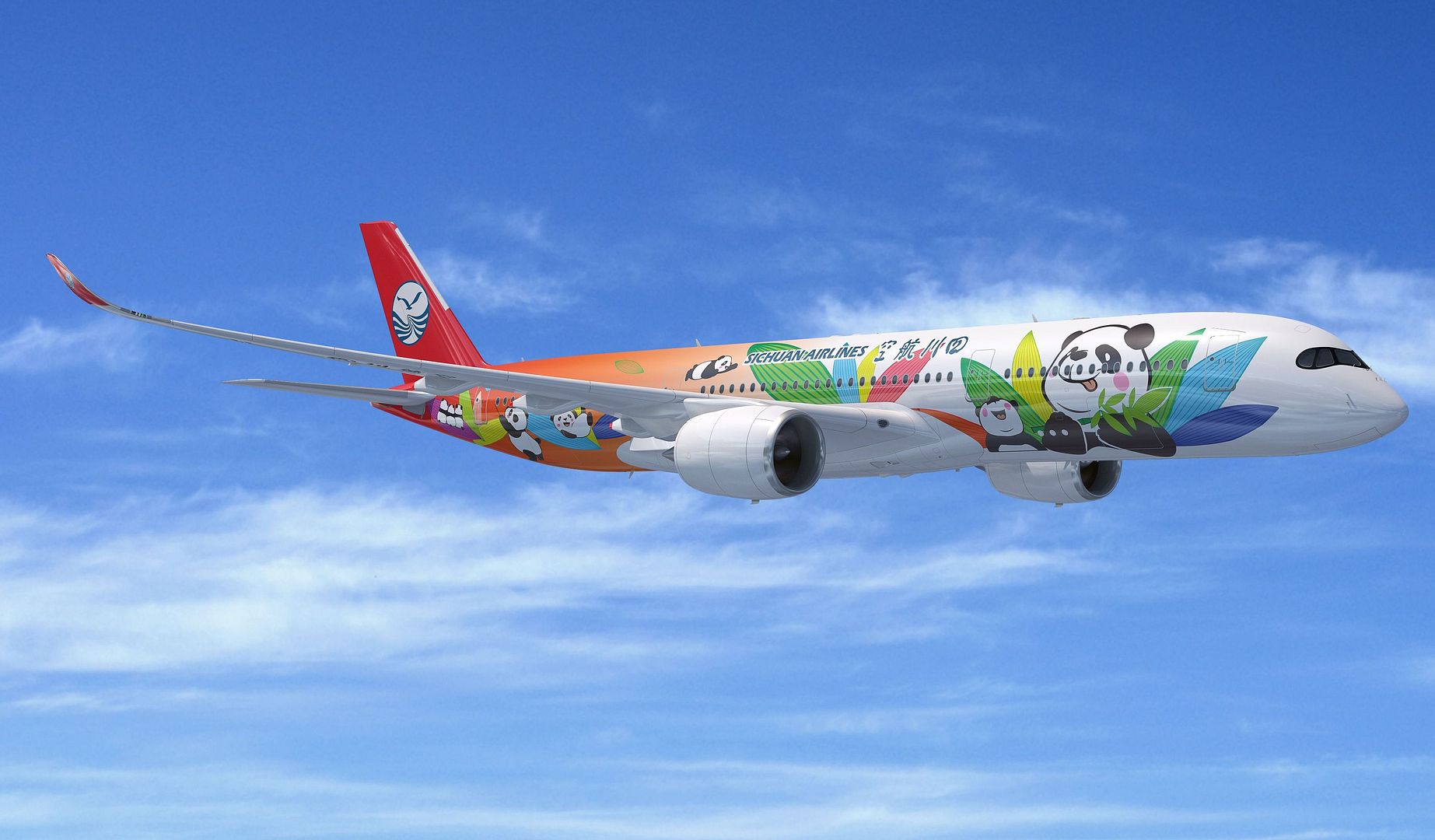
Airbus has announced the signature of a Memorandum of Understanding with a leading global lessor for 80 A320neo Family aircraft. The agreement was completed during the Farnborough Airshow. The commitment re-enforces the appeal of the world?s bestselling single aisle Family to aircraft leasing companies.
Engine selection will be made at a later date.
Featuring the widest single aisle cabin in the sky, the efficient A320neo Family incorporates the very latest technologies including new generation engines and Sharklets, which together deliver more than 15 percent fuel and CO2 savings from day one and 20 percent by 2020 as well as 50 percent noise reduction. With more than 6,100 orders received from over 100 customers, the A320neo Family has captured some 60 percent of the market.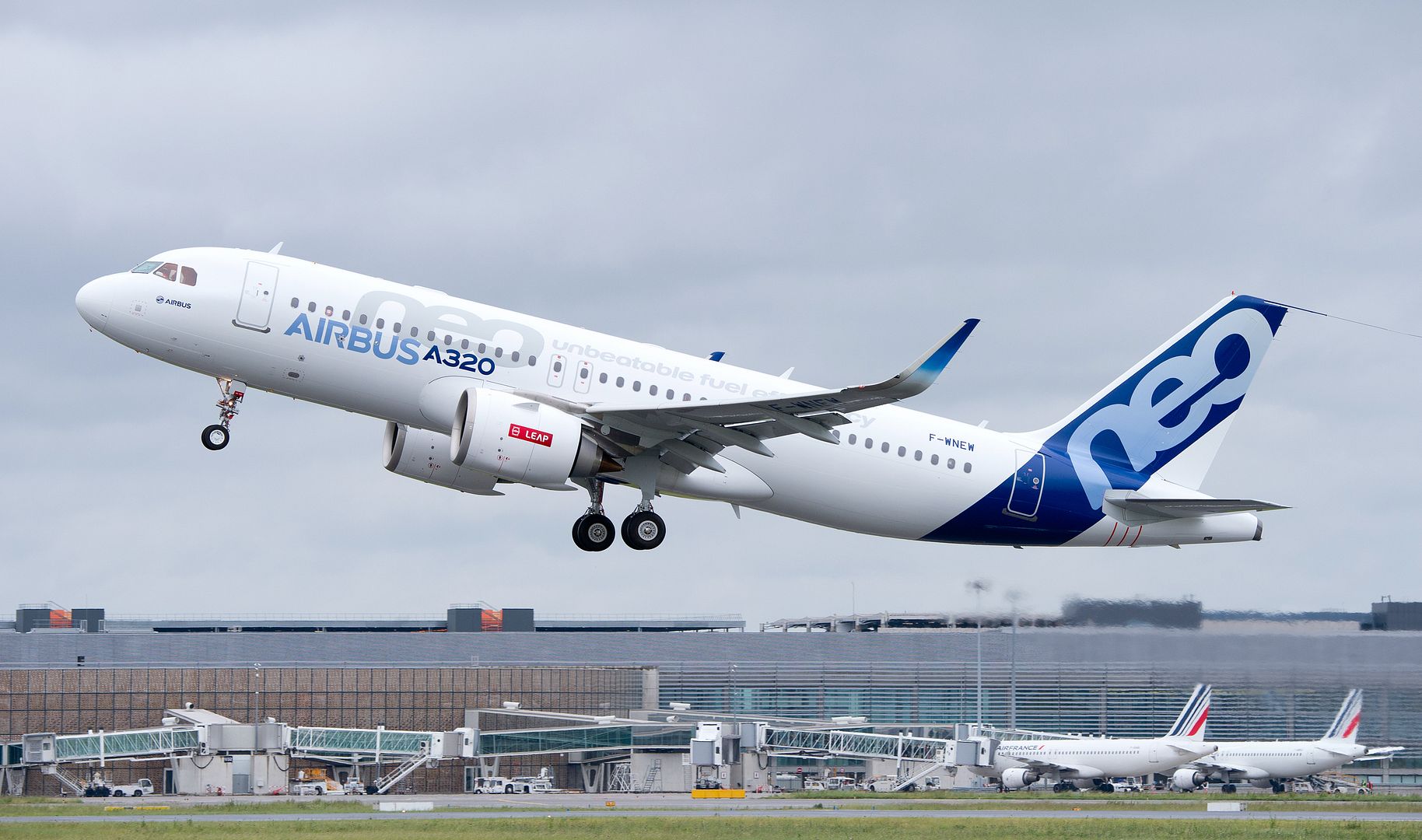
Farnborough, UK, July 17, 2018 ? Embraer and Republic Airways, the world?s largest E-Jet operator, announced at the 2018 Farnborough Airshow that they have signed a Letter of Intent (LoI) for a firm order of 100 E175, with the right to convert to E175-E2 aircraft, and purchase rights for an additional 100 E175 aircraft. If all purchase rights are exercised, the contract has a value of up to USD 9.3 billion based on current list prices. This order will be included in Embraer?s backlog as soon as it becomes firm, later this year.
?We are pleased to expand our partnership with Republic as one of our largest and most valuable customers,? said John Slattery, President & CEO, Embraer Commercial Aviation. ?With a relationship spanning 20 years, we are immensely honored to continue being an integral part of their success as they expand their fleet with additional E175s. Republic is a critical component of Embraer?s history and we are absolutely committed to providing a product that appeals to their customers while delivering solutions that increase profitability.?
?Over the past two decades we have acquired more than 350 jets through our partnership with Embraer,? said Bryan Bedford, Republic?s President and CEO. ?Through this partnership we have delivered industry leading safety, service and reliability to our codeshare partners, and this order positions Republic to focus on the next stage of growth in the North American regional market. The E-Jet has proven to be a product that allows Republic to provide a reliable and seamless product experience with our mainline partners, and when coupled with our 5,500 dedicated aviation professionals, it delivers on our long-term vision of being the regional airline of choice.?
Republic Airways and Embraer established their partnership in 1999 when one of its former subsidiaries, Chautauqua Airlines, took delivery of its first ERJ 145 in the livery of US Airways Express. Today, Republic Airline operates a fleet of nearly 190 Embraer 170/175 aircraft and provides fixed-fee flights operated under its major airline partner brands of American Eagle, Delta Connection and United Express.
Including this new contract, Embraer has sold more than 520 E175s to airlines in North America since January 2013, earning more than 80% of all orders in this 70-76-seat jet segment.
Embraer is the world?s leading manufacturer of commercial jets up to 150 seats. The Company has 100 customers from all over the world operating the ERJ and E-Jet families of aircraft. For the E-Jets program alone, Embraer has logged more than 1,800 orders and 1,400 deliveries, redefining the traditional concept of regional aircraft.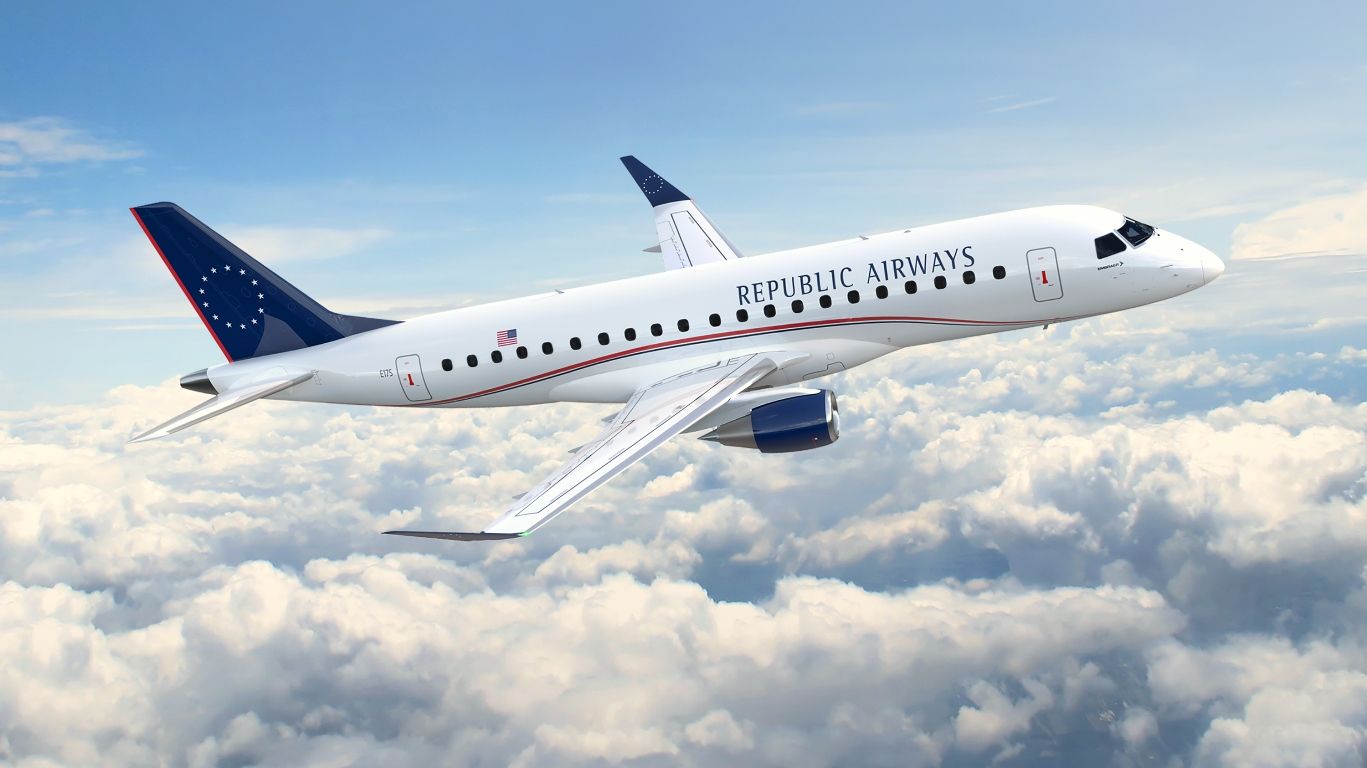
-
 Main AdminJOINT BASE PEARL HARBOR-HICKAM, Hawaii (July 16, 2018) - Tech. Sgt. Ryan Strole, 434th Aircraft Maintenance Squadron crew chief, recovers a 434th Air Refueling Wing KC-135 Stratotanker from Grissom Air Force Base, Ind., after flight during the Rim of the Pacific (RIMPAC) exercise, July 16. Twenty-five nations, 46 ships, five submarines, about 200 aircraft, and 25,000 personnel are participating in RIMPAC from June 27 to Aug. 2 in and around the Hawaiian Islands and Southern California. The world?s largest international maritime exercise, RIMPAC provides a unique training opportunity while fostering and sustaining cooperative relationships among participants critical to ensuring the safety of sea lanes and security of the world?s oceans. RIMPAC 2018 is the 26th exercise in the series that began in 1971. (U.S. Air Force photo by Tech. Sgt. Samantha Mathison)
Main AdminJOINT BASE PEARL HARBOR-HICKAM, Hawaii (July 16, 2018) - Tech. Sgt. Ryan Strole, 434th Aircraft Maintenance Squadron crew chief, recovers a 434th Air Refueling Wing KC-135 Stratotanker from Grissom Air Force Base, Ind., after flight during the Rim of the Pacific (RIMPAC) exercise, July 16. Twenty-five nations, 46 ships, five submarines, about 200 aircraft, and 25,000 personnel are participating in RIMPAC from June 27 to Aug. 2 in and around the Hawaiian Islands and Southern California. The world?s largest international maritime exercise, RIMPAC provides a unique training opportunity while fostering and sustaining cooperative relationships among participants critical to ensuring the safety of sea lanes and security of the world?s oceans. RIMPAC 2018 is the 26th exercise in the series that began in 1971. (U.S. Air Force photo by Tech. Sgt. Samantha Mathison)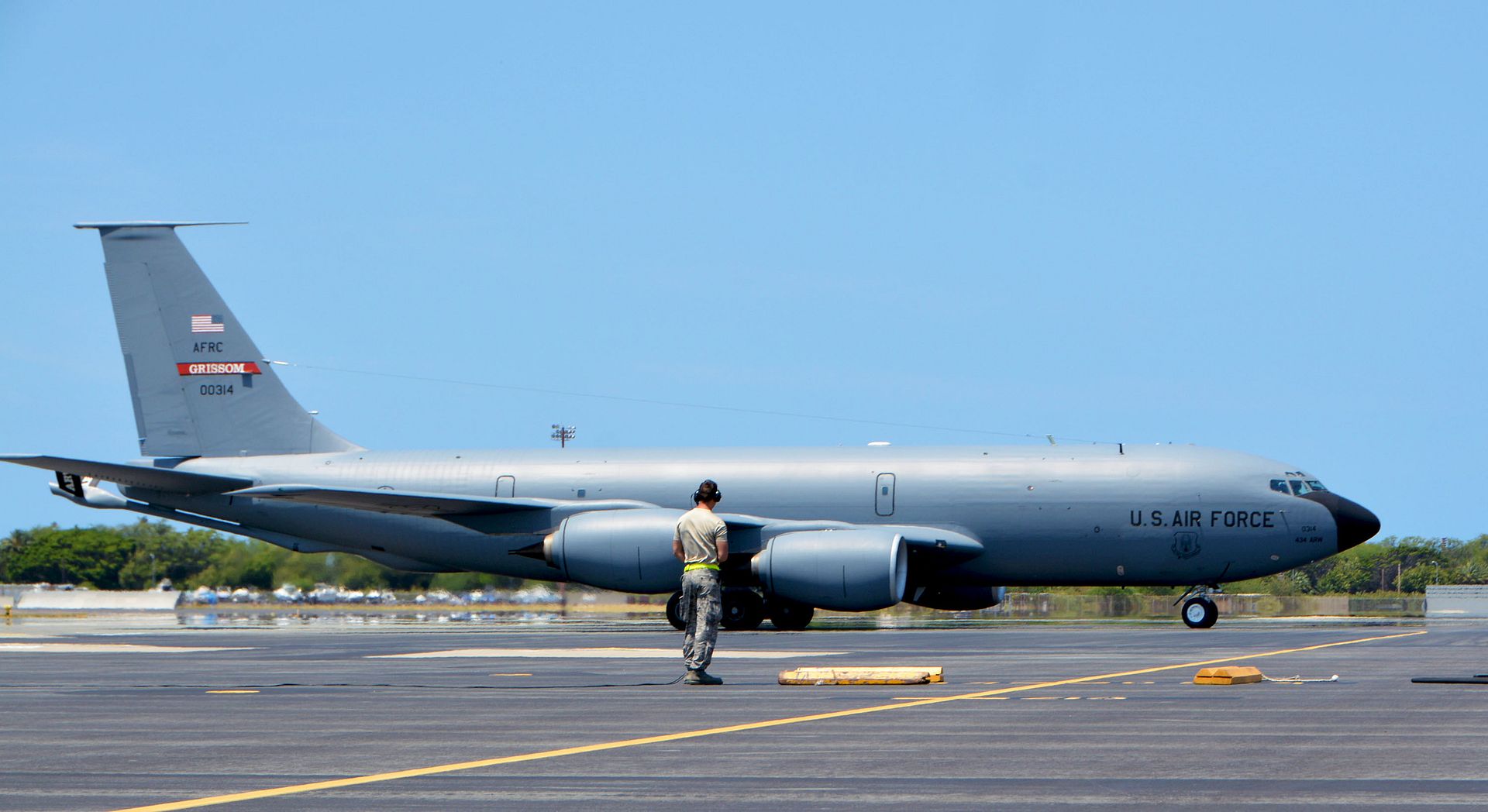
PACIFIC OCEAN (JULY 17, 2018) An F-35B Lightning II aircraft assigned to Marine Fighter Attack Squadron (VMFA) 121 takes off from the amphibious assault ship USS Wasp (LHD 1) during carrier qualifications and flight deck certifications. VMFA-121 is aboard Wasp assigned under the 31st Marine Expeditionary Unit forward deployed to Okinawa, Japan. (U.S. Navy photo by Mass Communication Specialist 2nd Class Rawad Madanat/Released)
FARNBOROUGH, England, July 18, 2018 /PRNewswire/ -- Sikorsky, a Lockheed Martin company (NYSE: LMT), today celebrated 35 years of partnership with the UK Maritime & Coastguard Agency (MCA) and honored recent heroic lifesaving efforts of the MCA. A recognition ceremony took place at the Farnborough International Airshow.
The relationship between Sikorsky and the MCA dates back to 1983 when the MCA, through Her Majesty's Coastguard, began operating the Sikorsky S-61 helicopter. The HM Coastguard fleet currently includes 12 Sikorsky S-92? aircraft operating from Newquay, Caernarfon, Sumburgh, Stornoway, Humberside and Inverness. Since April 2015, the MCA has utilized its S-92 fleet to conduct 4,500 search and rescue missions.
"Sikorsky is honored to be a part of the MCA's mission for the past 35 years and is proud that the S-92 plays such a critical role in providing a safe, efficient and reliable aircraft with which to save lives," said Lockheed Martin's Rotary and Mission Systems Executive Vice President Dale Bennett. "With Sikorsky a part of Lockheed Martin, our focus is to fully support all our commercial helicopter customers and their missions."
"I am very proud of the partnership we have with Sikorsky which has developed over the last 35 years," said Damien Oliver, MCA Aviation Programme Director. "Sikorsky's aircraft offer the very best in search and rescue capabilities, without which our crews across the UK could not deliver a first-class search and rescue helicopter service, saving the lives of those in difficulty at sea, in coastal areas and inland throughout the UK."
The ceremony included honoring recent lifesaving efforts by the HM Coastguard helicopter crew at Inverness. The Sikorsky Winged-S Rescue Award is bestowed upon those who perform a lifesaving rescue with a Sikorsky aircraft.
In June 2018, two boys were winched to safety by a four-person HM Coastguard crew operating an S-92 helicopter. The boys, ages 11 and 14, were swimming in the ocean when the tide began to rise and they found themselves unable to swim back to shore.
The boys were able to climb atop an offshore rock formation as the rising tide threatened to submerge the rocks. A concerned citizen spotted the boys and notified HM Coastguard.
The Inverness-based crew responded within three minutes and winched the boys safely to the nearby beach.
The Rescue Award is the 50th presented to the MCA by Sikorsky.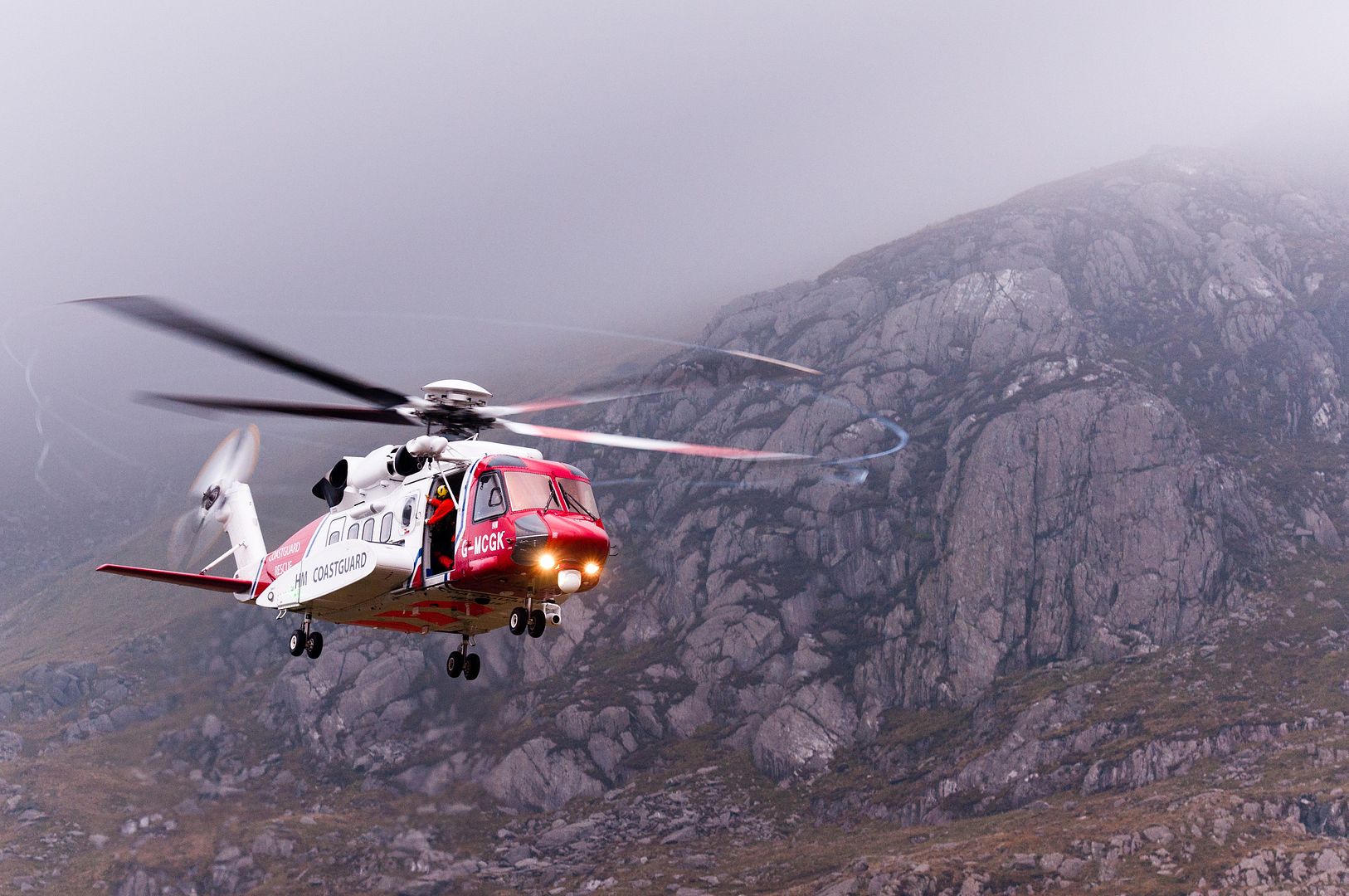
FARNBOROUGH, United Kingdom, July 18, 2018 /PRNewswire/ -- Boeing [NYSE:BA] and VietJet [HOSE: VJC] signed a Memorandum of Understanding today at the 2018 Farnborough International for an additional 100 737 MAX airplanes. The agreement, which includes 80 737 MAX 10s and 20 737 MAX 8s, is valued at more than $12.7 billion at current list prices.
The Vietnamese low-cost carrier will become the largest MAX 10 customer in Asia once the deal is completed. VietJet plans to leverage the added capacity of the MAX 10 to satisfy surging demand on high-dense domestic routes, as well as on popular destinations throughout Asia.
"We are excited to introduce Boeing's newest 737 MAX 10 into our rapidly growing fleet. These new airplanes will fit perfectly into our growth strategy, providing the efficiency and range for VietJet to expand its route network and offer more international destinations for our customers and expand alliances across Asia Pacific, the fastest growing aviation market in the world," said Madam Nguy?n Th? Ph??ng Th?o, President and CEO of VietJet.
As part of the agreement, Boeing would partner with VietJet to enhance technical and engineering expertise and the training of pilots and technicians in Vietnam, helping to further develop the commercial aviation ecosystem in the growing country. Boeing will also support VietJet in improving management capabilities at the airline and in the country.
VietJet is Vietnam's first privately-owned airline and is also the first low-cost carrier in the country. The airline is in the midst of bolstering its world-class fleet with highly efficient and capable airplanes that will allow for expansion of its regional network.
In 2016, VietJet finalized an order for 100 high-capacity 737 MAX 8 airplanes, which set the mark for the largest-ever single commercial airplane purchase in Vietnam aviation.
"We are honored to deepen our strong partnership with VietJet as they become our newest 737 MAX 10 customer. Today's agreement for a repeat order from VietJet validates the best-in-class capabilities of the 737 MAX family of airplanes," said Kevin McAllister, president and CEO of Boeing Commercial Airplanes. "With this agreement, we take another major step in growing our partnership with VietJet, one that continues to contribute to the trade relationship between Vietnam and the United States. This agreement also grows Boeing's presence and partnerships across Asia Pacific, developing win-win partnerships in a region with tremendous development potential."
The deal will be reflected on Boeing's Orders and Deliveries website once it is finalized.
The 737 MAX family achieves superior fuel efficiency and range through the latest CFM International LEAP-1B engines, Advanced Technology winglets, and other improvements. The jet also features the signature Boeing Sky Interior and large flight deck displays.
The 737 MAX 10 is the largest variant in the family. At 43.8 m (143 ft 8 in) long, the airplane can seat a maximum of 230 passengers and offer airlines the lowest seat-mile cost ever in a single-aisle aircraft. The 737 MAX is the fastest-selling airplane in Boeing history, accumulating nearly 4,700 orders from more than 100 customers worldwide. For more information and feature content, visit www.boeing.com/commercial/737max.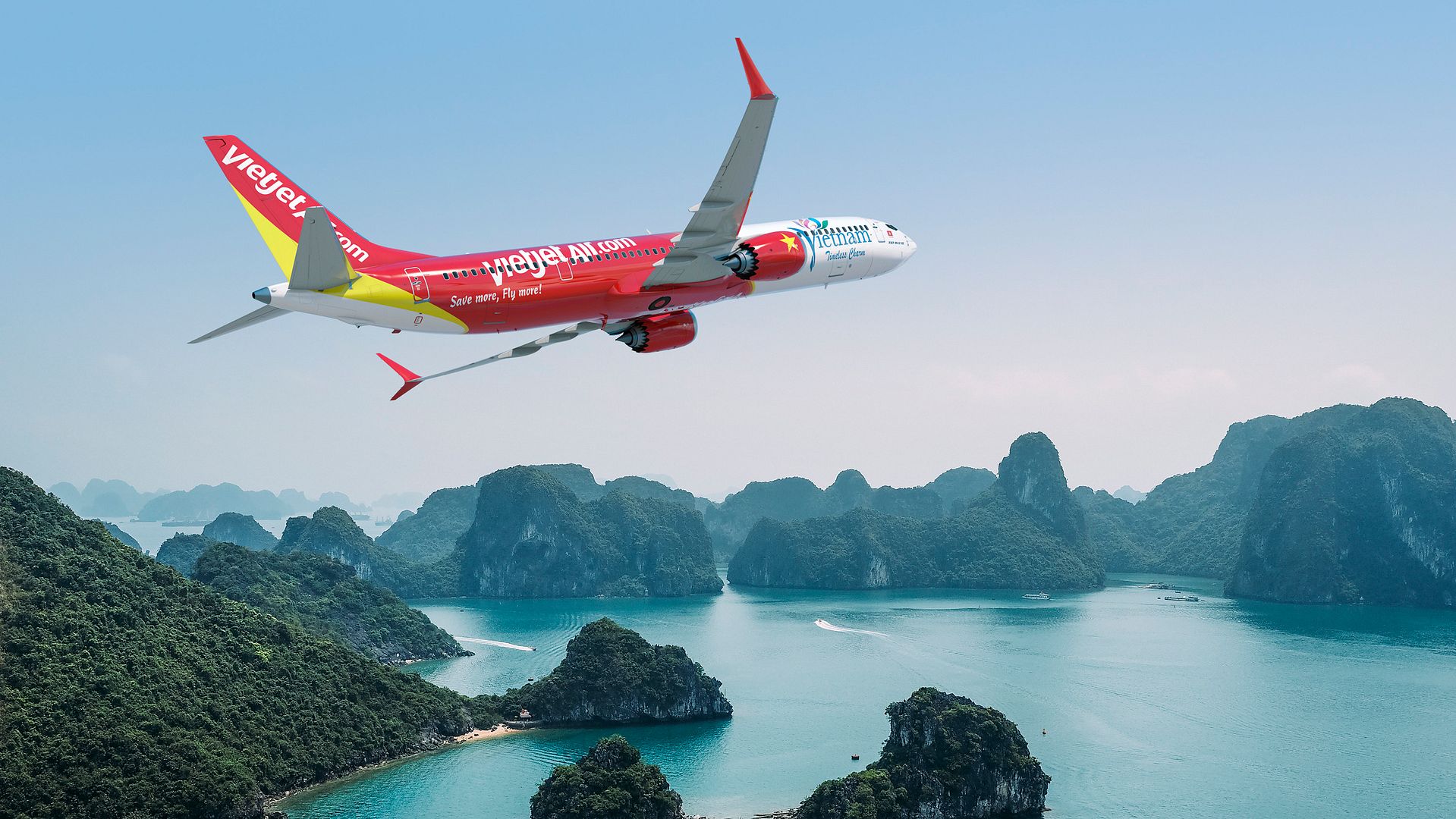
EasyJet has taken delivery of its first of 30 A321neo aircraft at a delivery event at the Farnborough international Airshow, attended by easyJet CEO Johan Lundgren, President of CFM International Ga?l M?heust and Airbus CEO Tom Enders.
The aircraft is powered by CFM Leap-1A engines. The A321neo is the largest member of the Airbus single aisle family with 235 seats in easyJet?s configuration, making it the largest aircraft in its fleet of 308 Airbus aircraft. easyJet currently operates 10 A320neo Family aircraft from an order for 130.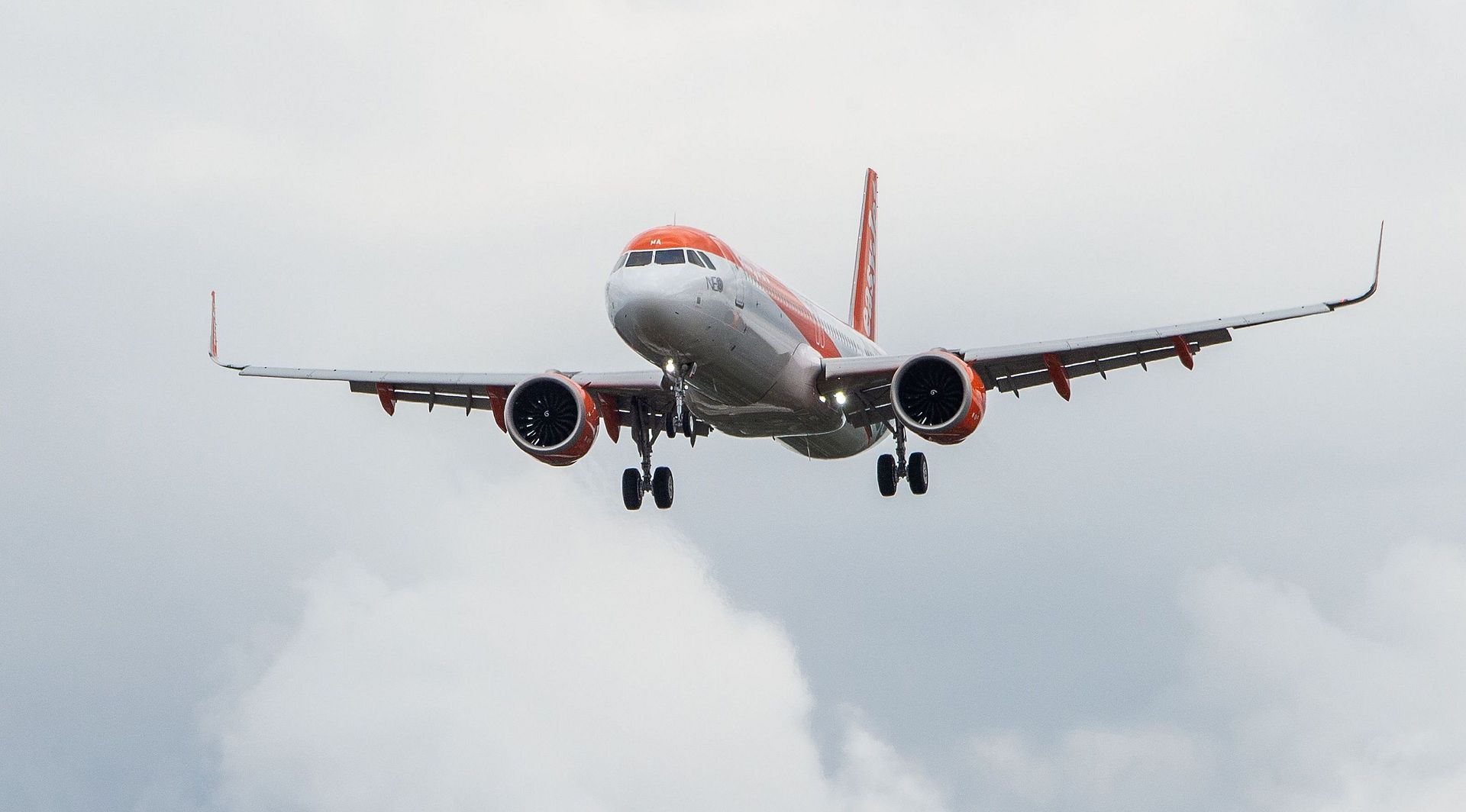
Featuring the widest single aisle cabin in the sky, the efficient A320neo Family incorporates the very latest technologies including new generation engines and Sharklets, which together deliver more than 15 percent fuel and CO2 savings from day one and 20 percent by 2020 as well as 50 percent noise reduction. With more than 6,100 orders received from over 100 customers, the A320neo Family has captured some 60 percent of the market.
Farnborough, UK, July 17, 2018 ? Embraer announced today, at the Farnborough Airshow 2018, that it has signed a Letter of Intent (LoI) with Nordic Aviation Capital (NAC) for three E190 aircraft. The deal has an estimated value of USD 156 million, based on Embraer?s list prices. The order will be included in Embraer?s backlog as soon as it becomes firm. These new aircraft will join the existing 134 E-Jets currently owned by NAC. Embraer is the world?s leading manufacturer of commercial jets up to 150 seats. The Company has 100 customers from all over the world operating the ERJ and E-Jet families of aircraft. For the E-Jets program alone, Embraer has logged more than 1,800 orders and 1,400 deliveries, redefining the traditional concept of regional aircraft.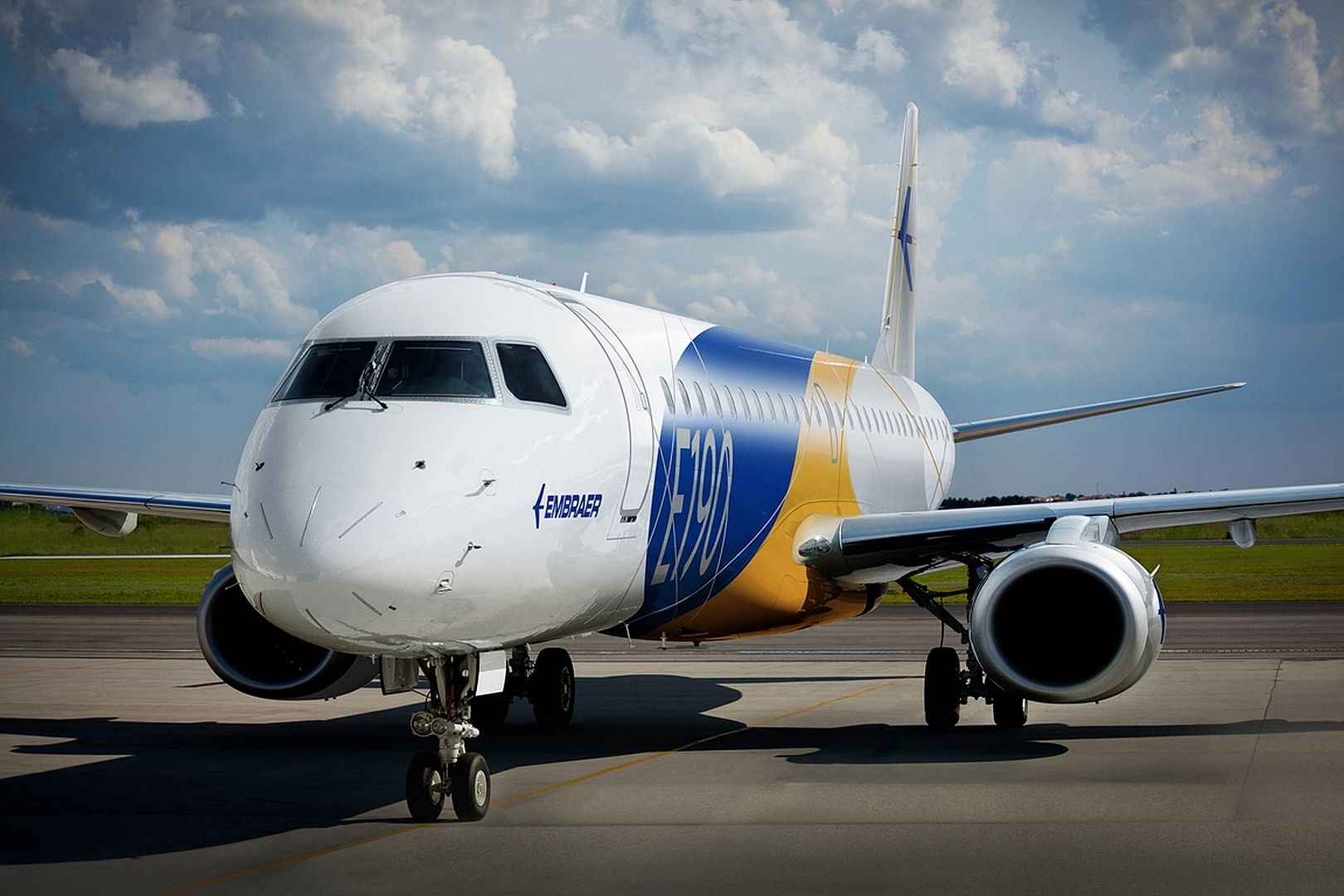
July 18, 2018 Montr?al Commercial Aircraft, Press Release
Bombardier Commercial Aircraft announced today that it has signed a firm order for four new CRJ900 regional jets with Uganda National Airlines Company.
Based on the list price for the CRJ900 aircraft, the firm order is valued at approximately US$190 million.
?We congratulate the Government of Uganda for the revival of its national flag carrier, and are thrilled that the new airline has selected Bombardier and the CRJ900 regional jets for its upcoming debut,? said Jean-Paul Boutibou, Vice President, Sales, Middle-East and Africa, Bombardier Commercial Aircraft. ?Recognized for its superior economics and efficiency, the CRJ Series aircraft have enabled airlines worldwide to serve communities with better connectivity, and we look forward to supporting the development of Uganda?s regional air travel with these CRJ900 regional jets.?
Uganda Airlines will operate the CRJ900 in dual-class configuration with 76 seats, including 12 first class seats.
?We are delighted to have ordered the world?s leading regional jet, and we look forward to providing the most modern passenger experience in regional aviation to the people of Uganda and across Africa,? said Ephraim Bagenda, CEO, Uganda National Airlines. ?As we were establishing Entebbe as a strong hub in East Africa and building more connectivity in Africa, we thoroughly reviewed our needs. With its proven track record in Africa and other regions of the world, we are confident that the CRJ900 aircraft will help us succeed.?
Today, 21 operators are flying 58 CRJ Series in Africa. Including the order announced today, Bombardier has recorded firm orders for 1957 CRJ Series regional jets.
About the ATMOSPH?RE Cabin
The new ATMOSPH?RE cabin sets new standards of passenger experience in the regional jet market segment. Key features of the new interior are comprised of larger passenger living space, wheel-first roller bag capability, more spacious lavatory, increased cabin connectivity options, all integrated in a contemporary design and material choices. In fact, the ATMOSPH?RE cabin design allows passengers to carry and store an ?oversized? roller bag within the aircraft cabin bins which minimizes the need to check bags at the counter or the gate. To learn more: DiscoverAtmosphere.com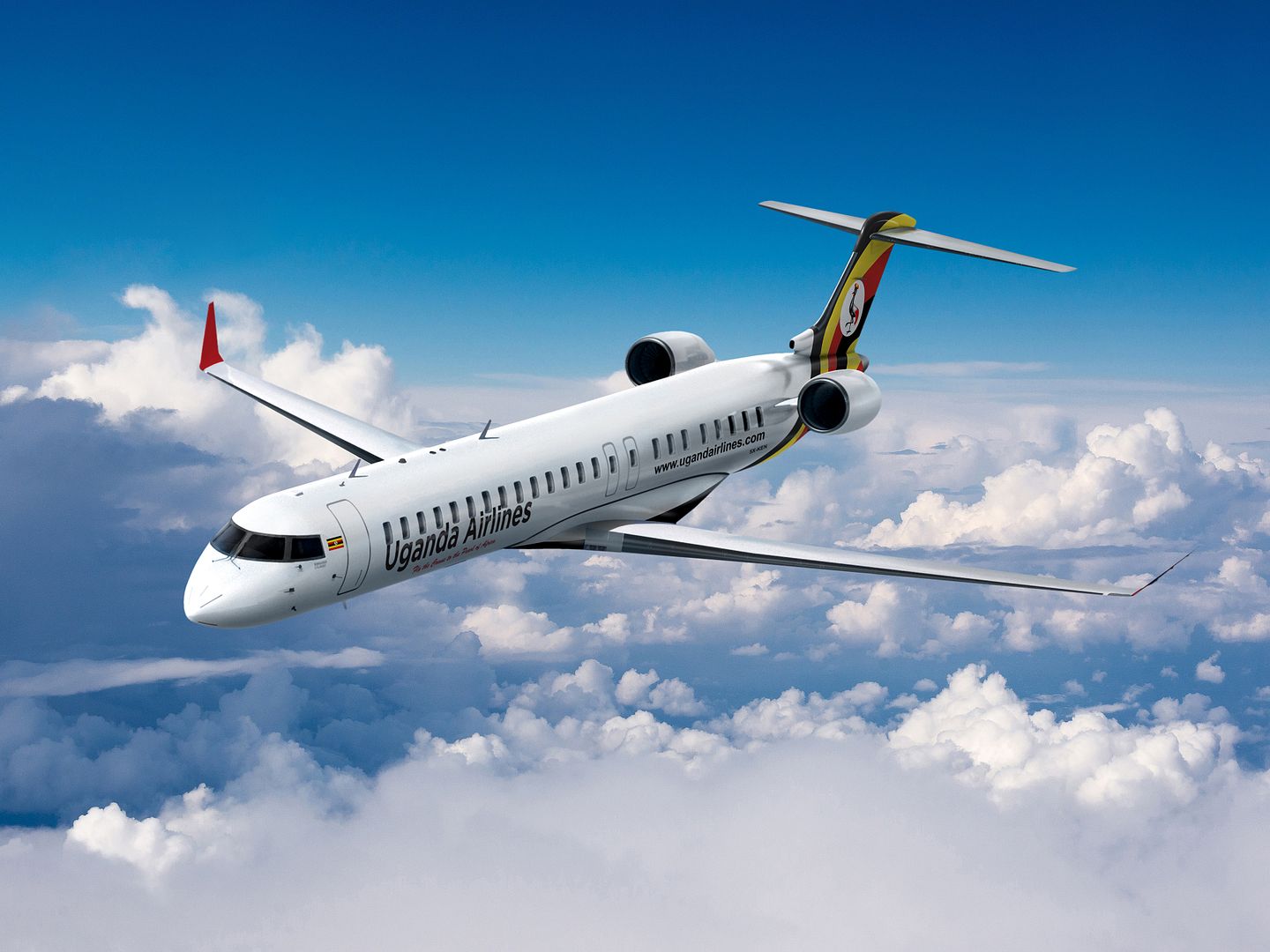
-
 Main AdminU.S. Air Force F-16 Fighting Falcon's with the 115th Fighter Wing, Wisconsin Air National Guard, perform fly-bys at Volk Field, Wis., July 17, 2018. Volk Field has an active runway used by various units to perform touch-and-go?s, flybys and a multitude of aerial maneuvers. (U.S. Air National Guard Photo's by Senior Airman Cristina J. Allen)
Main AdminU.S. Air Force F-16 Fighting Falcon's with the 115th Fighter Wing, Wisconsin Air National Guard, perform fly-bys at Volk Field, Wis., July 17, 2018. Volk Field has an active runway used by various units to perform touch-and-go?s, flybys and a multitude of aerial maneuvers. (U.S. Air National Guard Photo's by Senior Airman Cristina J. Allen)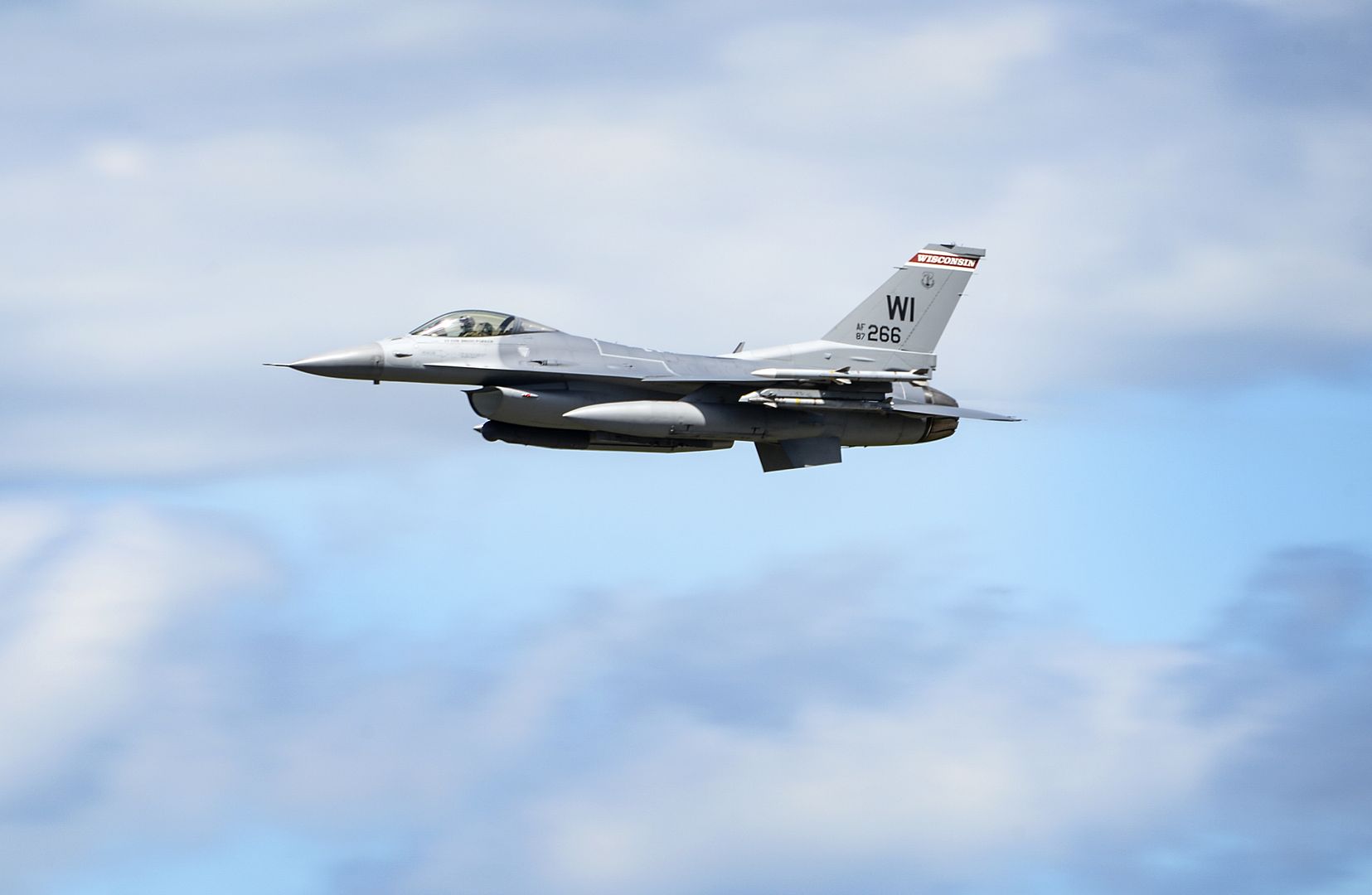
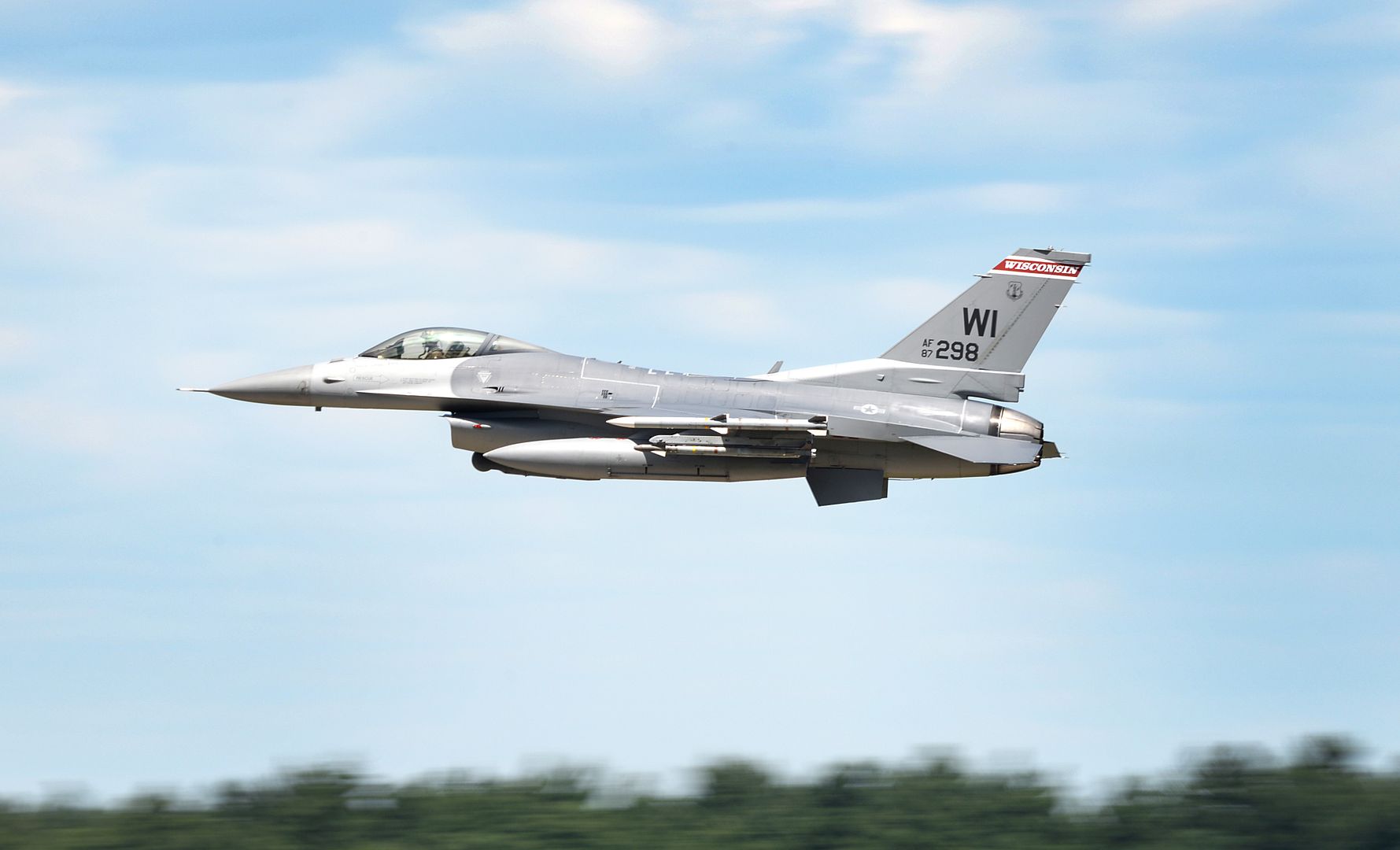
A pilot from the 157th Expeditionary Fighter Squadron lands an F-16 Fighting Falcon, July 17, 2018, at an undisclosed location in Southwest Asia. More than 300 Airmen from the 169th Fighter Wing of the South Carolina Air National Guard recently deployed to the 407th Air Expeditionary Group in support of Operation Inherent Resolve. (U.S. Air Force photo by Staff Sgt. Dana J. Cable)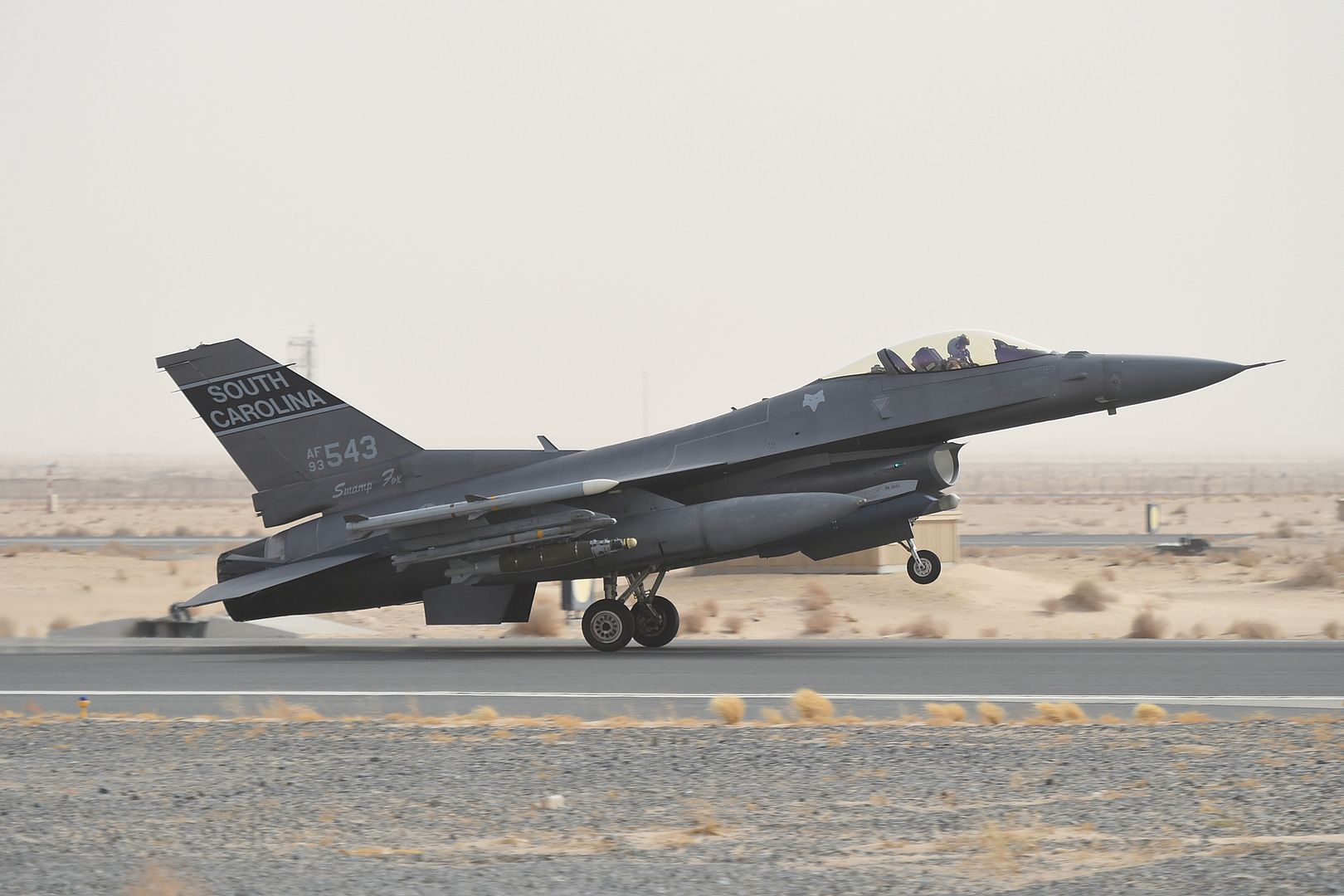
An F-15C assigned to the 122nd Fighter Squadron, 159th Fighter Wing, Naval Air Station Joint Reserve Base New Orleans, Louisiana, taxies at Gowen Field, Boise, Idaho on July 19, 2018. The 122FS is in Boise training with the 124th Fighter Wing's 190th Fighter Squadron A-10 Thunderbolt II. (U.S. Air National Guard photo by Master Sgt. Joshua C. Allmaras)
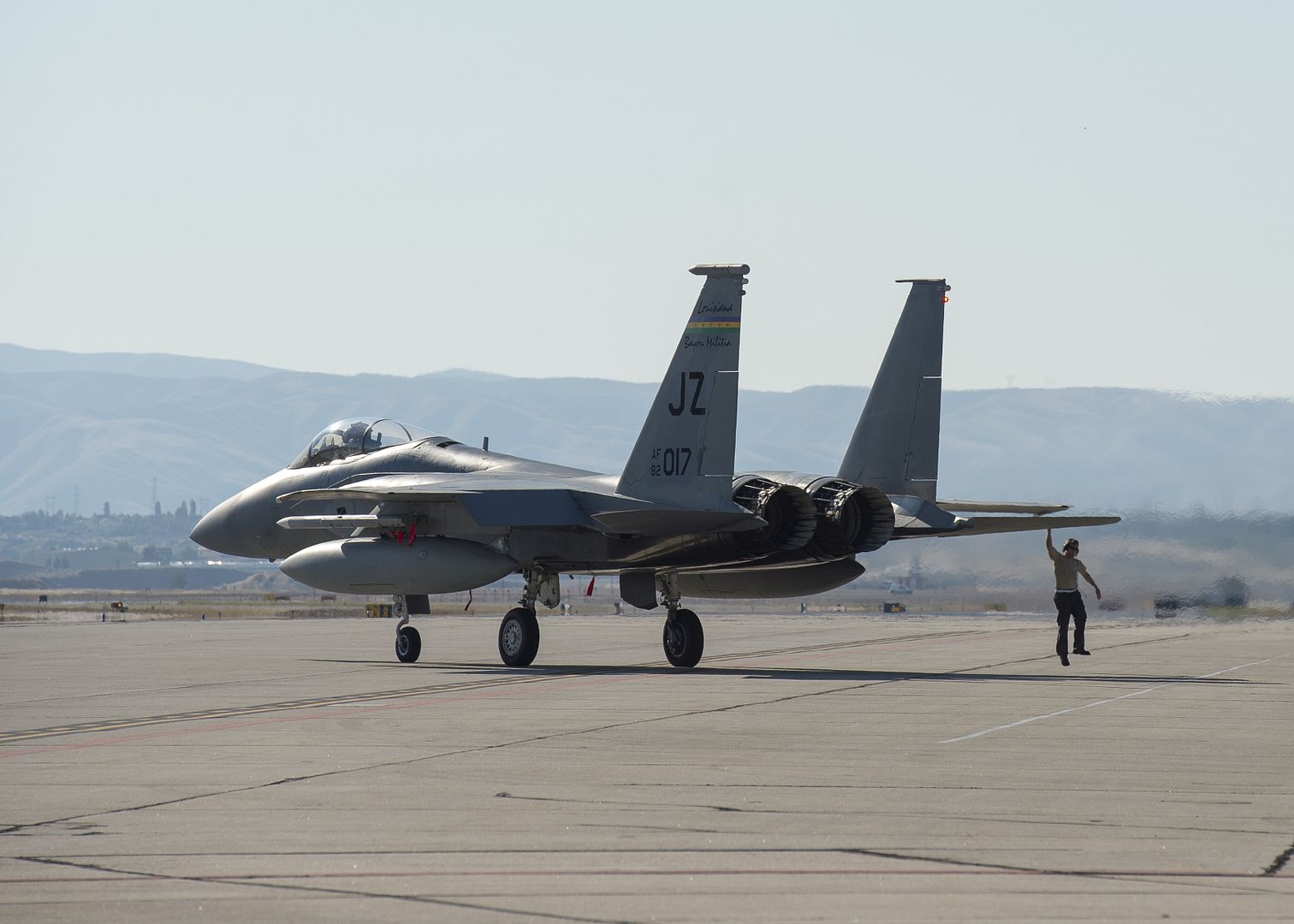
An F-15C assigned to the 122nd Fighter Squadron, 159th Fighter Wing, Naval Air Station Joint Reserve Base New Orleans, Louisiana, takes off from Gowen Field, Boise, Idaho on July 19, 2018. The 122FS is in Boise training with the 124th Fighter Wing's 190th Fighter Squadron A-10 Thunderbolt II. (U.S. Air National Guard photo by Master Sgt. Joshua C. Allmaras)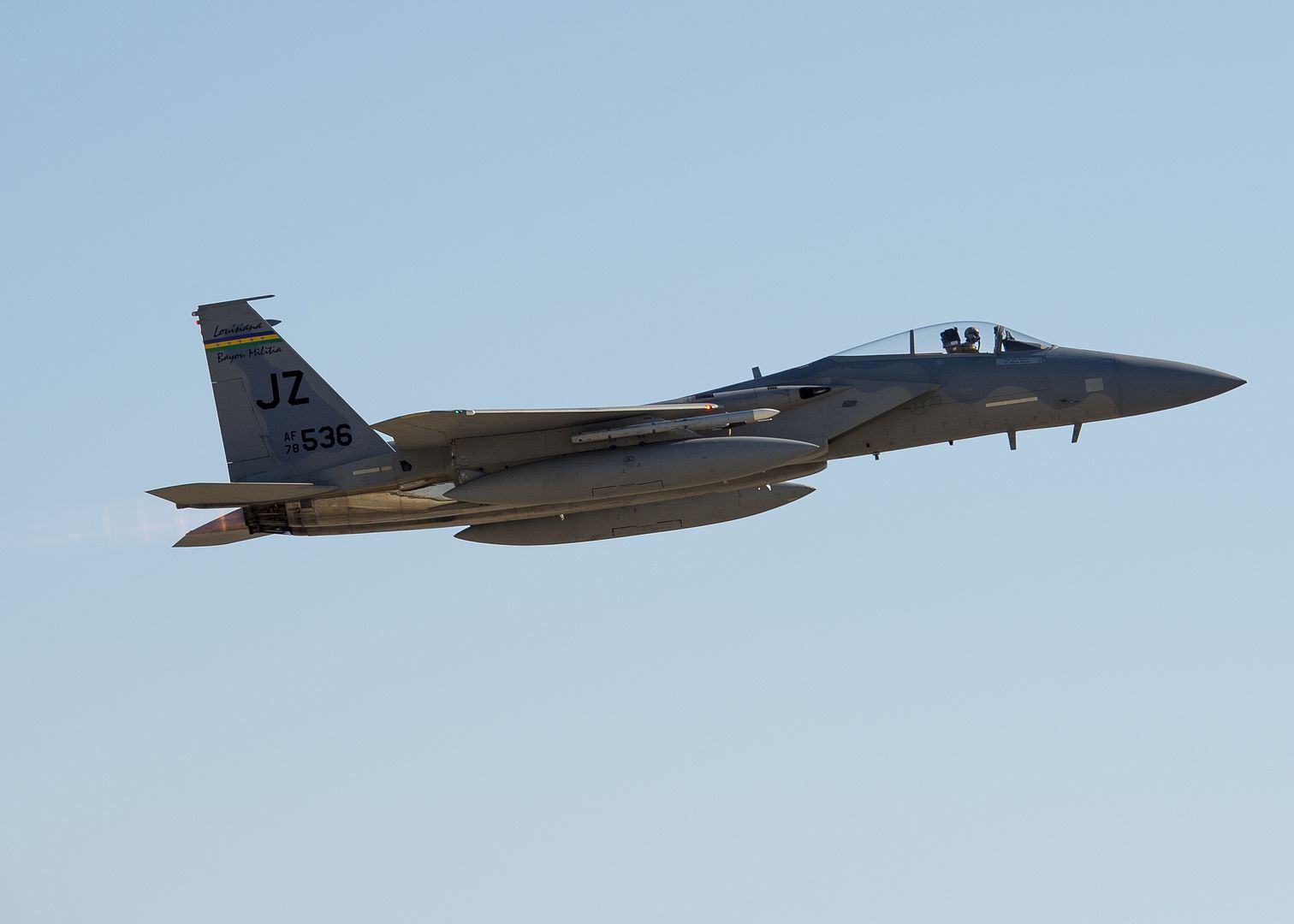
SAN DIEGO ? July 19, 2018 ? Earlier this year, Northrop Grumman Corporation (NYSE: NOC) delivered a Global Hawk autonomous aircraft carrying the Battlefield Airborne Communications Node (BACN) to the U.S. Air Force fleet. BACN -- also developed by Northrop Grumman -- is a high-altitude, airborne gateway that translates and distributes voice communications, and other battlespace information from numerous sources.
BACN bridges the gaps between those systems and extends communications among disparate users and networks to provide improved situational awareness.
BACN has completed more than 10,000 combat missions connecting warfighters in the air and on the ground.
Northrop Grumman is a leading global security company providing innovative systems, products and solutions in autonomous systems, cyber, C4ISR, strike, and logistics and modernization to customers worldwide.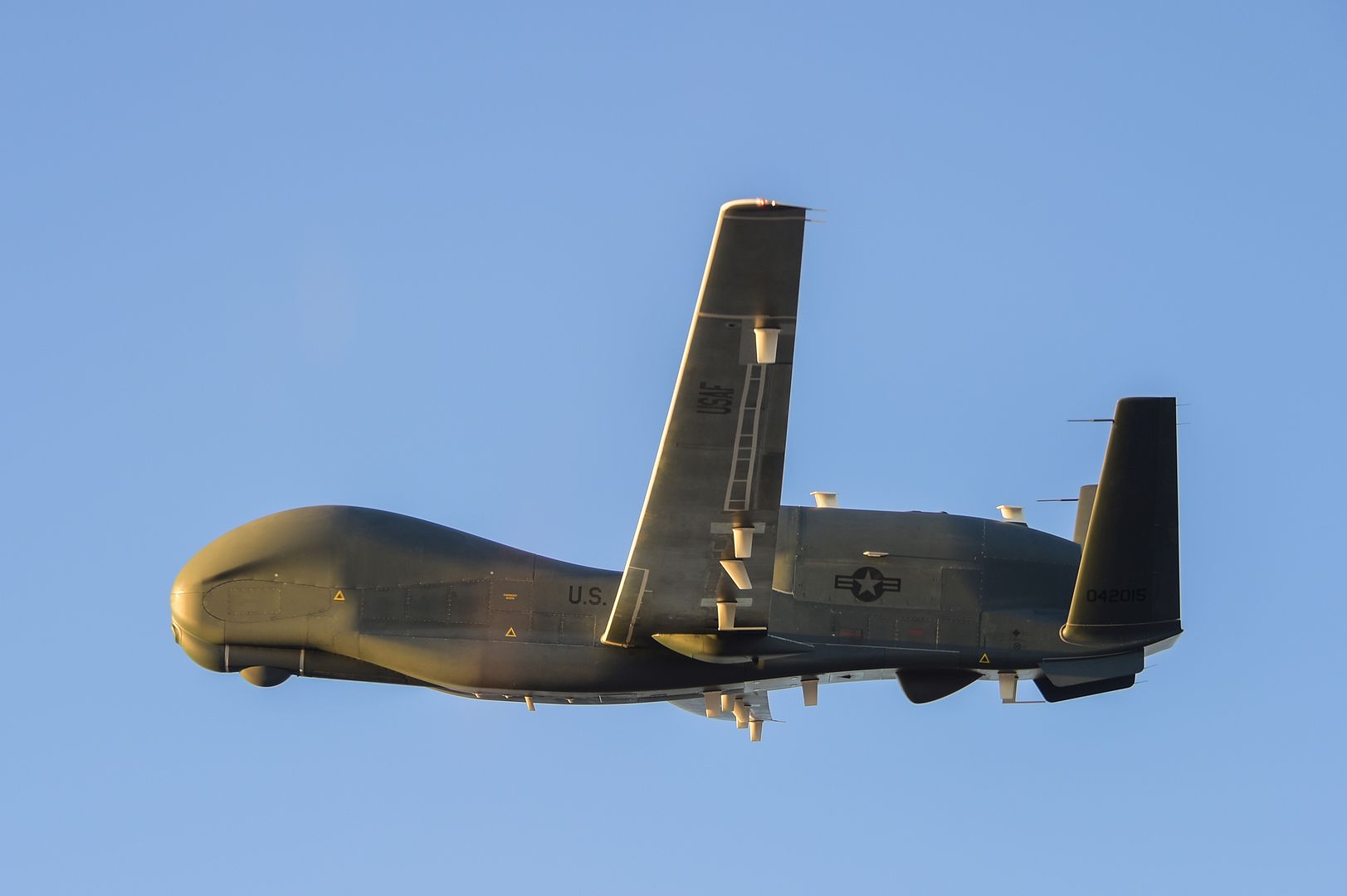
FARNBOROUGH, United Kingdom, July 19, 2018 /PRNewswire/ -- Boeing [NYSE: BA] and British Airways today announced a commitment for three 777-300ER (Extended Range) airplanes. British Airways will take the 777s on an operating lease with a leasing company.
"We are delighted that British Airways, one of the world's leading airlines, has again chosen the Boeing 777 for its long-haul fleet," said Ihssane Mounir, senior vice president of Commercial Sales & Marketing for The Boeing Company. "This agreement is a testament to the enduring value of the 777, its superior range, outstanding efficiency and popularity among passengers."
British Airways is one of the world's largest operators of the long-range jet, operating 58 777-200ER and 777-300ER airplanes across its global network. British Airways also flies 28 787 Dreamliners and more than 30 747-400s.
The 777-300ER can seat up to 386 passengers in a three-class configuration and has a maximum range of 7,930 nautical miles (14,685 km). The airplane is the most reliable twin aisle flying today with the highest schedule reliability of any twin aisle airplane at 99.5 percent.
British Airways, part of International Airlines Group, is one of the world's leading global premium airlines and the largest international carrier in the U.K. The carrier has its home base at London Heathrow, the world's busiest international airport, and flies to more than 200 destinations in 75 countries across the globe. British Airways has a fleet of more than 280 aircraft.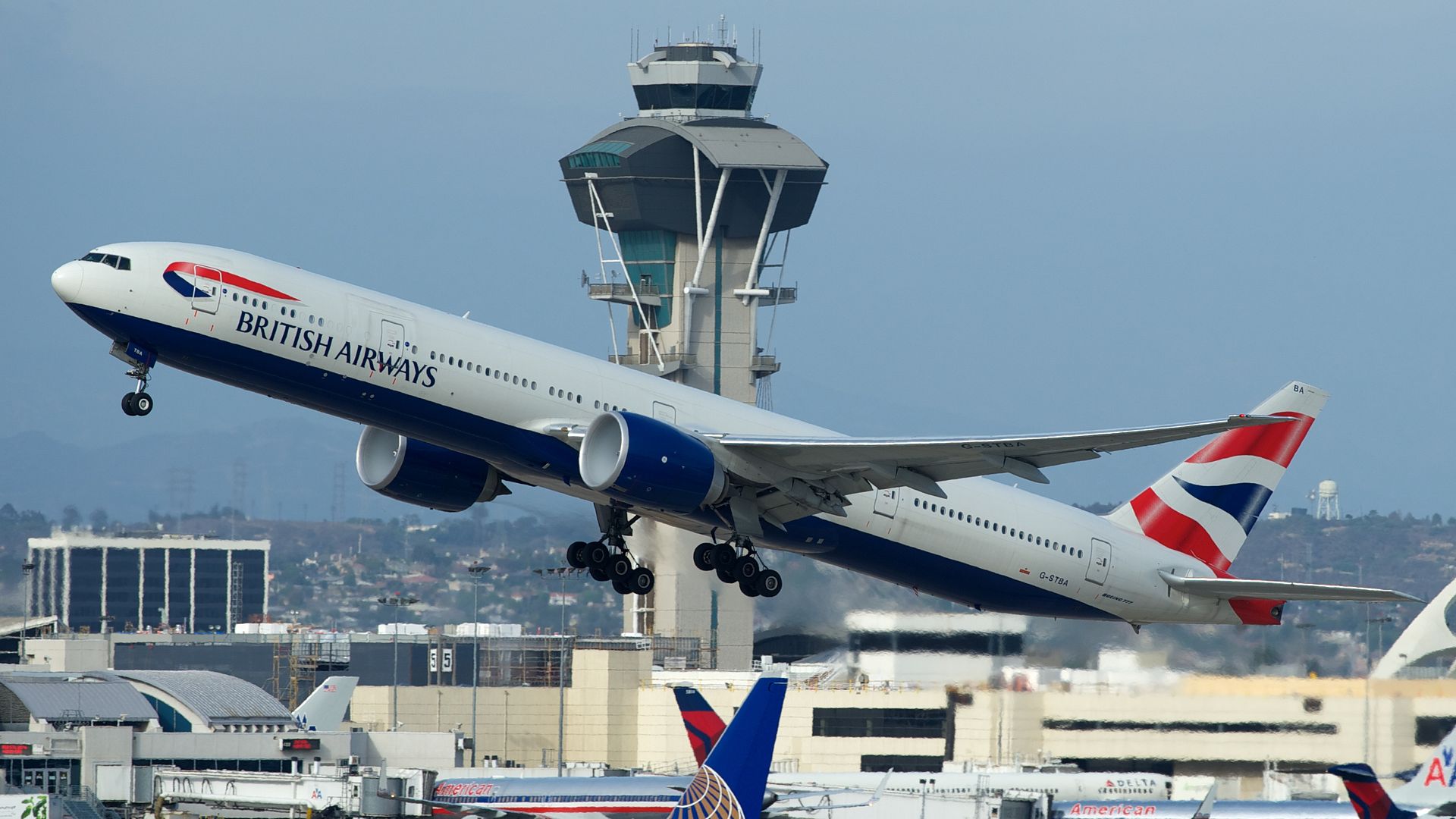
The first of five BelugaXL aircraft to fly has landed at Toulouse-Blagnac, France at 14:41 hrs local time after successfully completing its first flight lasting four hours and 11 minutes.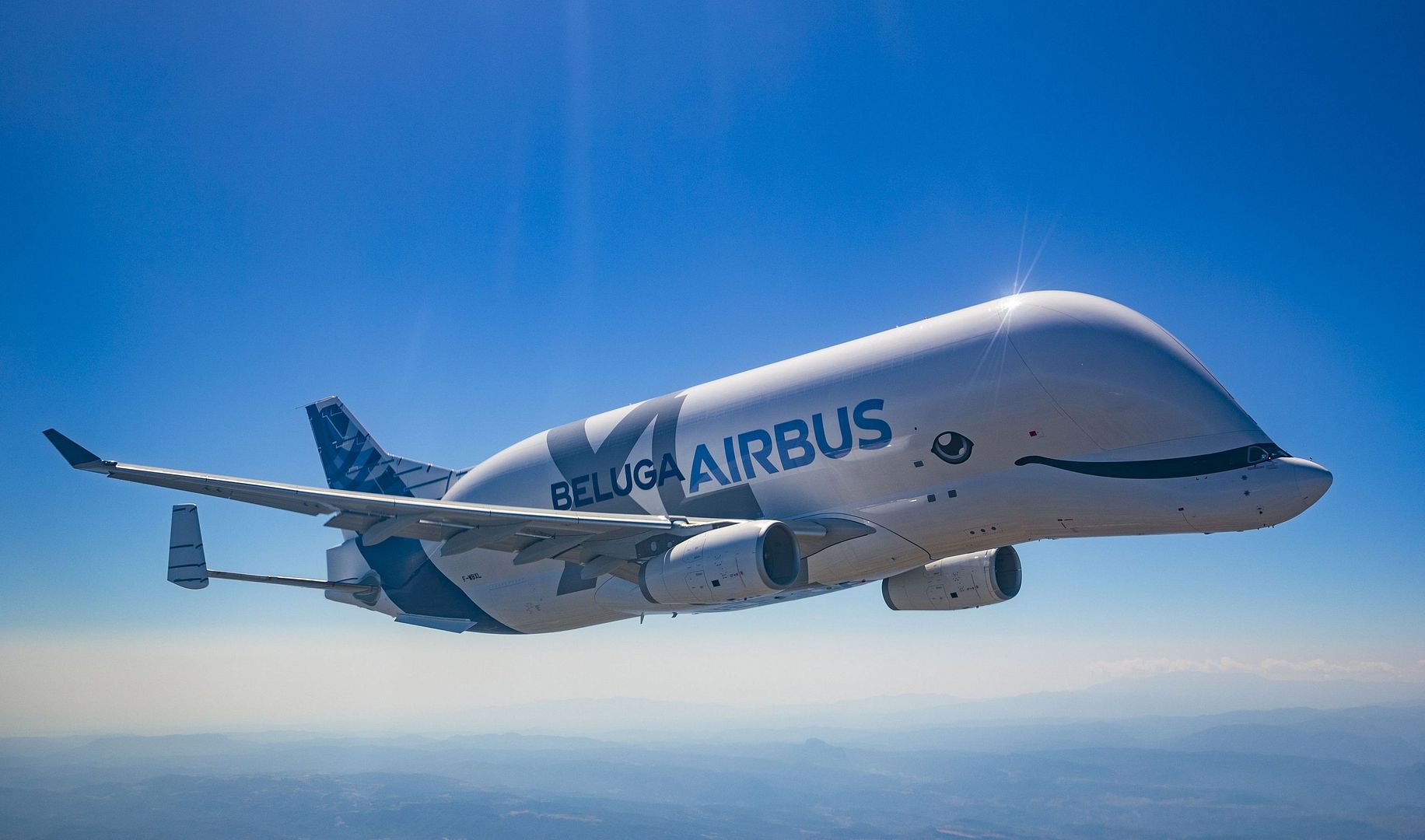
The crew in the cockpit on board this flight comprised: Captain Christophe Cail, Co-Pilot Bernardo Saez-Benito Hernandez and Test-Flight Engineer Jean Michel Pin. Meanwhile, monitoring the aircraft systems and performance in real-time at the flight-test-engineer?s (FTE) station were Laurent Lapierre and Philippe Foucault.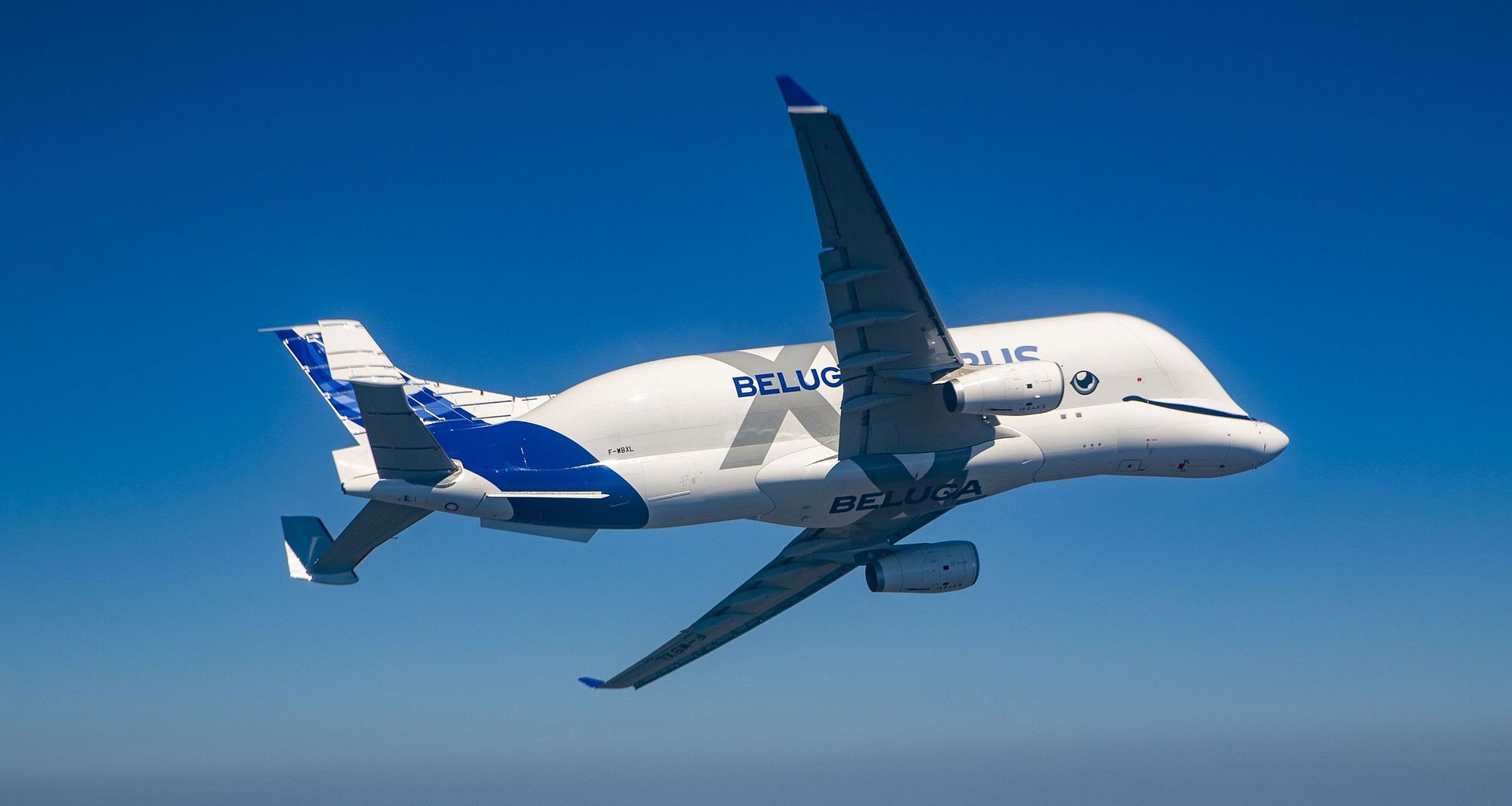
Following the first flight, the BelugaXL will undergo some 600 hours of flight test over 10 months to achieve Type Certification and entry into service later in 2019.
The BelugaXL programme was launched in November 2014 to address Airbus? transport capacity requirements in view of the A350 XWB ramp-up and Single-Aisle production rate increases. Five aircraft will be built between 2019 and 2023 to gradually replace the five BelugaST.
The aircraft will operate from 11 destinations as Airbus? method of transporting large aircraft components.
Based on an A330-200 Freighter, the BelugaXL is powered by Rolls Royce Trent 700 engines. The lowered cockpit, the cargo bay structure and the rear-end and tail were newly developed jointly with suppliers, giving the aircraft its distinctive look.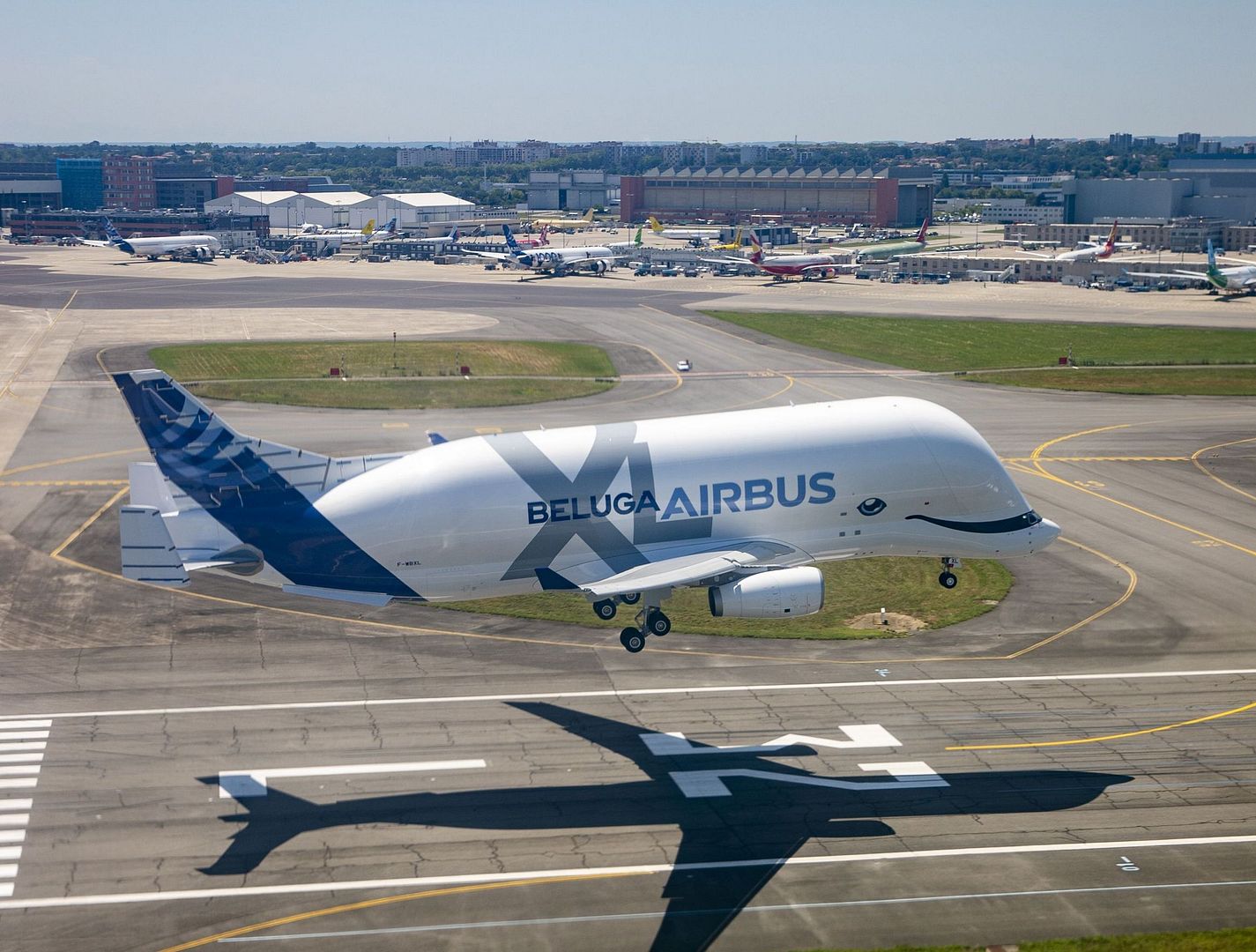
Hi Fly, the 14th operator of the iconic double-decker wide-body airliner, is displaying its A380 for the first time at Farnborough International Airshow 2018 (UK). The aircraft will be showcased at the airshow from the 19th to 22nd July on static display.
A big cause requiring a big messenger, Hi Fly has chosen the A380 to exhibit its very special livery supporting the environmental cause: ?Save the Coral Reefs?.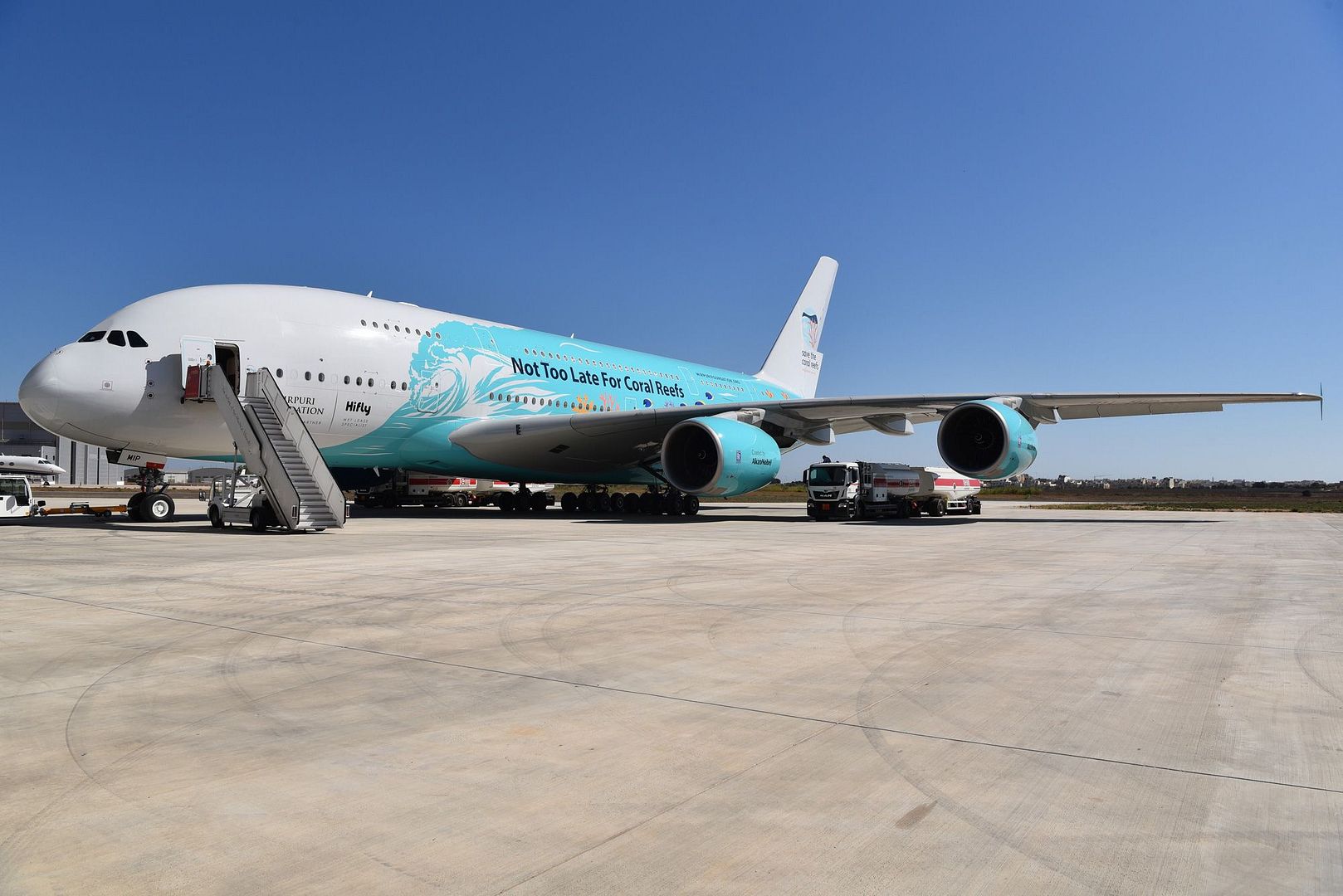
Hi Fly, the Portuguese wet lease specialist, provides aircraft to airlines with crew, maintenance and insurance. The company has selected the A380, thereby opening up a new business model. Hi Fly operates an all Airbus fleet of 12 aircraft comprising one A321, four A330s, seven A340s and now one A380.
The A380 is an essential part of the solution to sustain air traffic growth, alleviating congestion at busy airports by transporting more passengers with fewer flights. The aircraft is the best way to capture growing world air traffic, which is doubling every 15 years. The flagship airliner can accommodate 575 passengers in four classes and offers a range of 8,000 nautical miles (15,000 kilometres).
The A380 has the unique capability to generate revenue, stimulate traffic and attract passengers.
The A380 is the world?s most spacious aircraft, offering wider seats, broader aisles and more personal space to passengers. Together with the quietest cabin and the smoothest flight, the A380 promises a unique passenger experience.
Around 250 million passengers have experienced the unique comfort of flying on board the aircraft so far. Every two minutes an A380 either takes off or lands at one of the 60 destinations that the aircraft serves.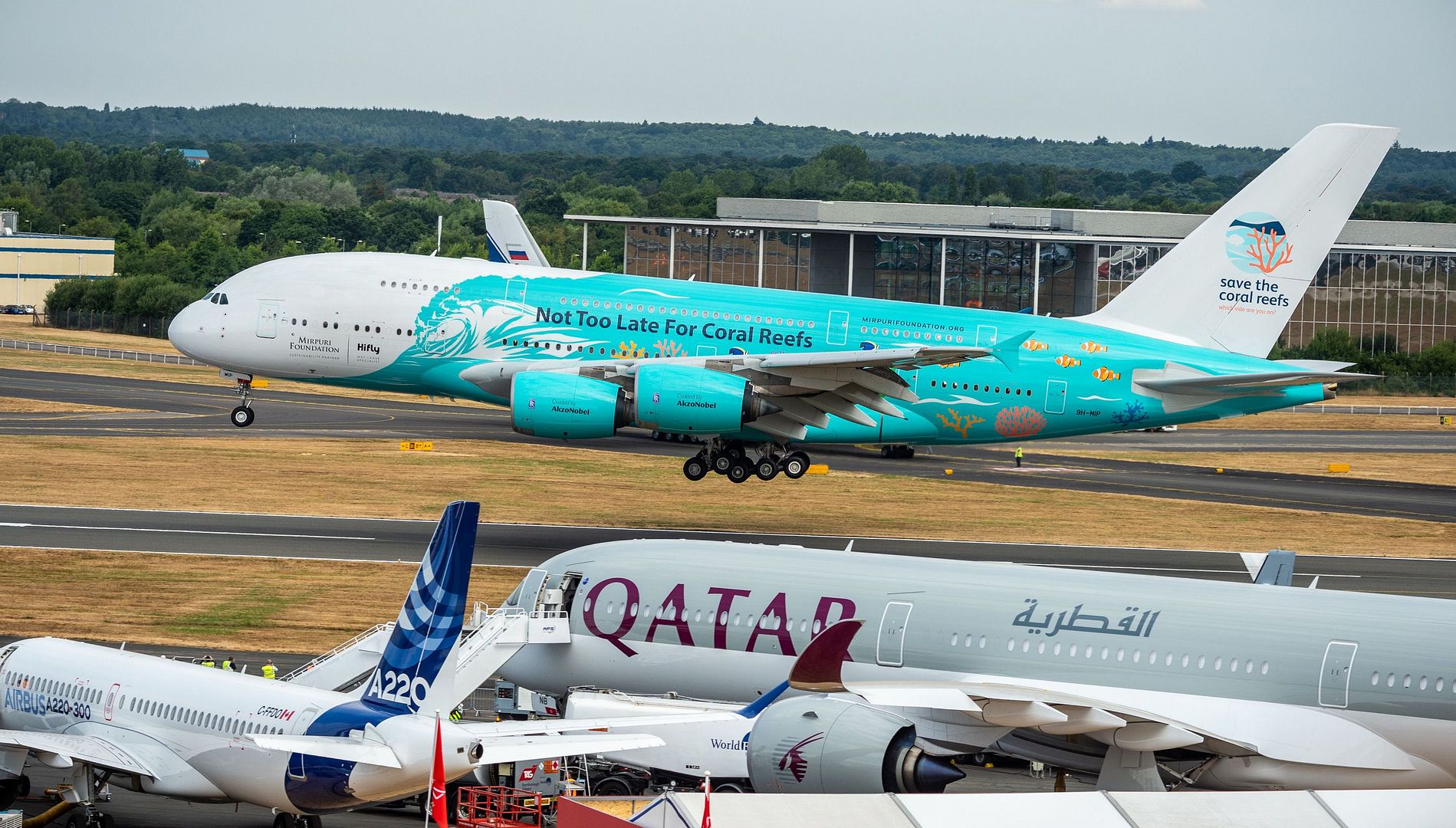
-
 Main AdminAn F-16C Fighting Falcon from the 31st Fighter Wing, 510th Fighter Squadron, Aviano Air Base, Italy flies over Royal Air Force Lakenheath, England July 20, 2018. The 510th FS are participating in a bilateral training event to enhance interoperability, maintain joint readiness and reassure our regional allies and partners. (U.S. Air Force photo/Tech. Sgt. Matthew Plew)
Main AdminAn F-16C Fighting Falcon from the 31st Fighter Wing, 510th Fighter Squadron, Aviano Air Base, Italy flies over Royal Air Force Lakenheath, England July 20, 2018. The 510th FS are participating in a bilateral training event to enhance interoperability, maintain joint readiness and reassure our regional allies and partners. (U.S. Air Force photo/Tech. Sgt. Matthew Plew)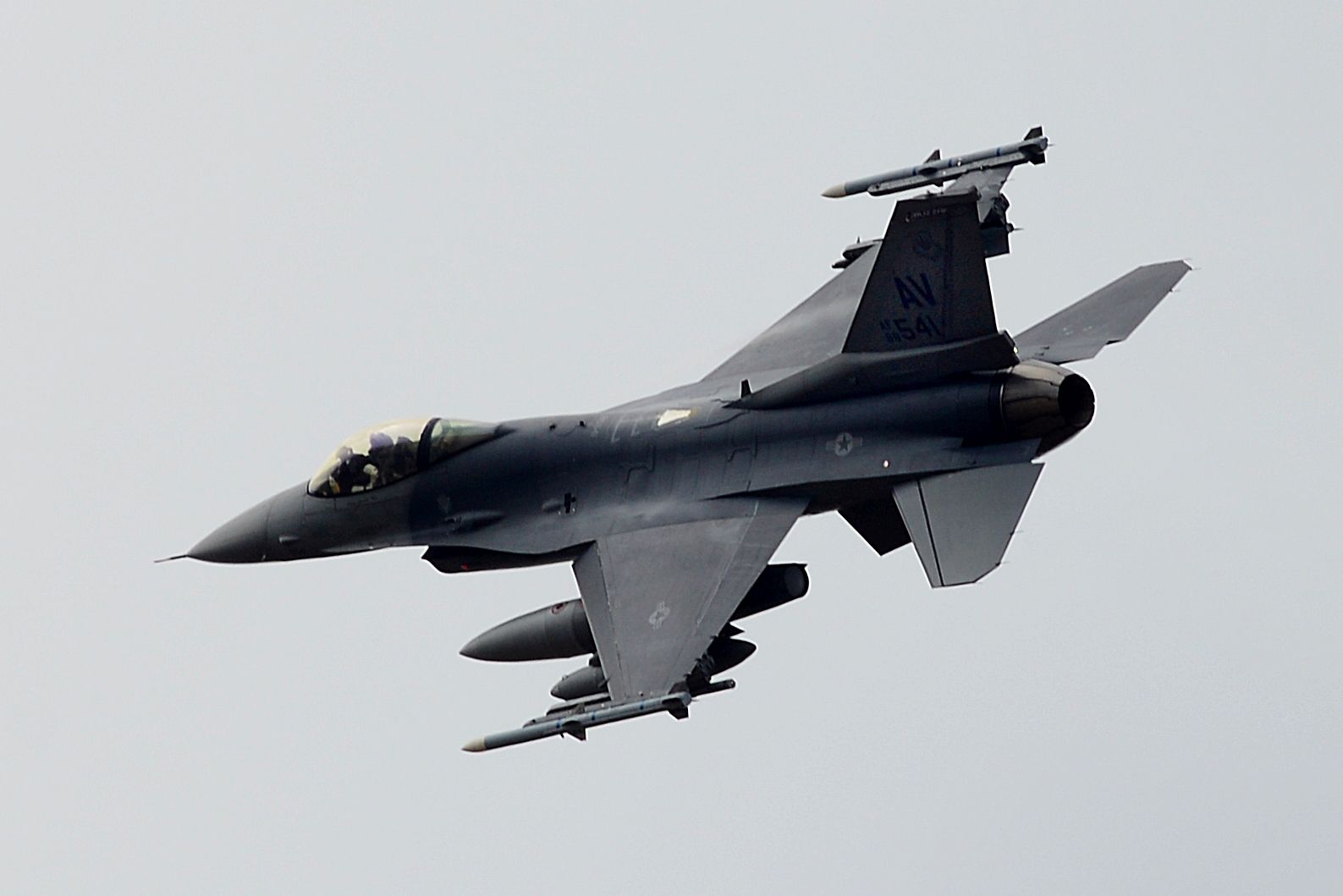
An F-16C Fighting Falcon from the 31st Fighter Wing, 510th Fighter Squadron, Aviano Air Base, Italy lands at Royal Air Force Lakenheath, England July 20, 2018. The 510th FS are participating in a bilateral training event to enhance interoperability, maintain joint readiness and reassure our regional allies and partners. (U.S. Air Force photo's/Tech. Sgt. Matthew Plew)
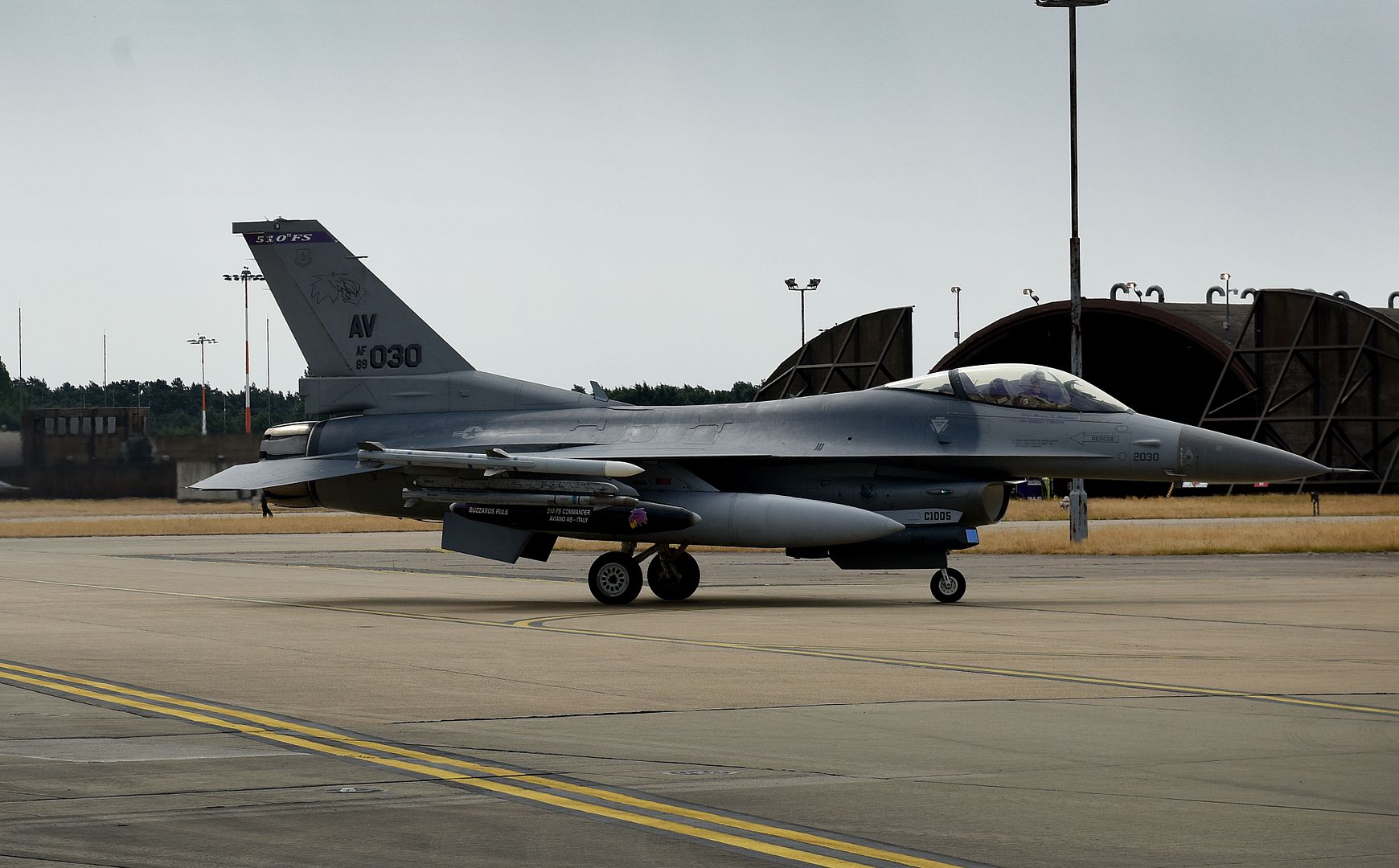
U.S. Marines with Special Purpose Marine Air-Ground Task Force - Southern Command attach a 3,000 pound load of supplies and equipment to a CH-53E Super Stallion helicopter during an external lift exercise in Flores, Guatemala, July 18, 2018. The Marines and sailors of SPMAGTF-SC are conducting security cooperation training and engineering projects alongside partner nation military forces in Central and South America. The unit is also on standby to provide humanitarian assistance and disaster relief in the event of a hurricane or other emergency in the region. (U.S. Marine Corps photo by Sgt. Justin M. Smith)
PACIFIC OCEAN (July 18, 2018) An F-35B Lightning II aircraft assigned to Marine Fighter Attack Squadron (VMFA) 121 takes off from the flight deck of the amphibious assault ship USS Wasp (LHD 1) during carrier qualifications and flight deck certifications. VMFA-121 is aboard Wasp assigned under the 31st Marine Expeditionary Unit forward deployed to Okinawa, Japan. (U.S. Navy photo by Mass Communication Specialist 3rd Class Taylor King/Released)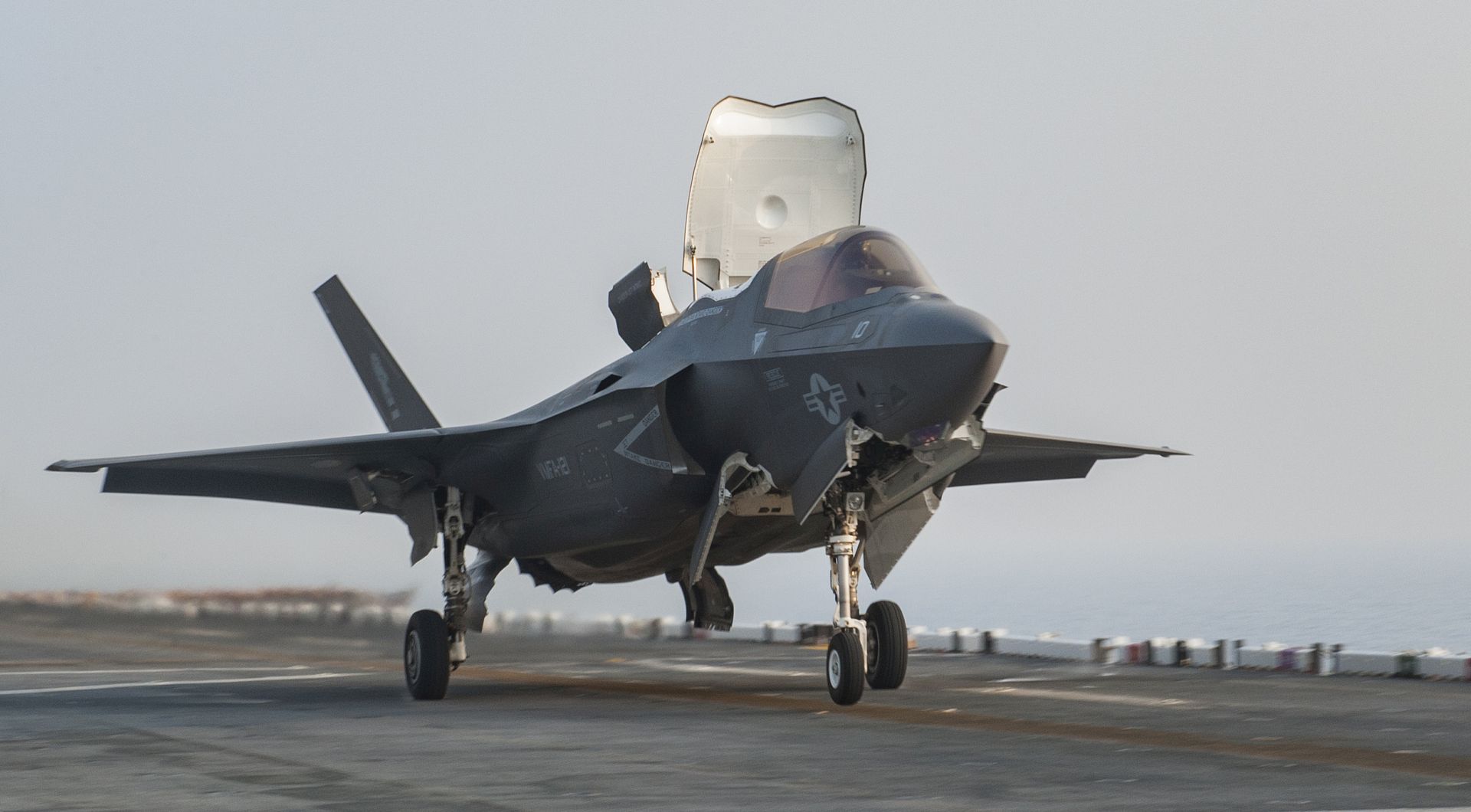
PHILIPPINE SEA (July 20, 2018) Sailors assigned to the Ticonderoga-class guided-missile cruiser USS Antietam (CG 54) egress after securing a cargo hook to a MH-60R Sea Hawk helicopter, assigned to the ?Warlords? of Helicopter Maritime Strike Squadron (HSM) 51, as it hovers above the ship?s flight deck. Antietam is forward-deployed in the U.S. 7th Fleet area of operations in support of security and stability in the Indo-Pacific region. (U.S. Navy photo by Mass Communication Specialist 2nd Class William McCann/Released)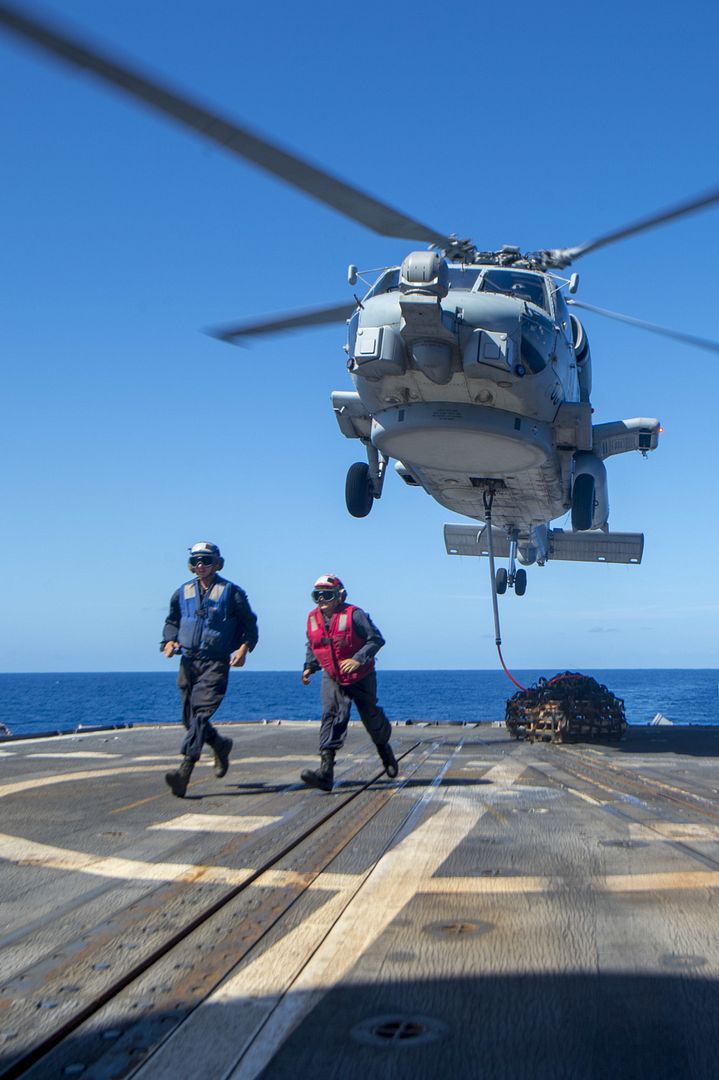
A 61st Fighter Squadron pilot prepares to start his F-35A Lightning II for a sortie July 18, 2018, at Luke Air Force Base, Ariz. The 61st FS maintains an international F-35 training mission which includes Australian pilots. (U.S. Air Force photo by Senior Airman Ridge Shan)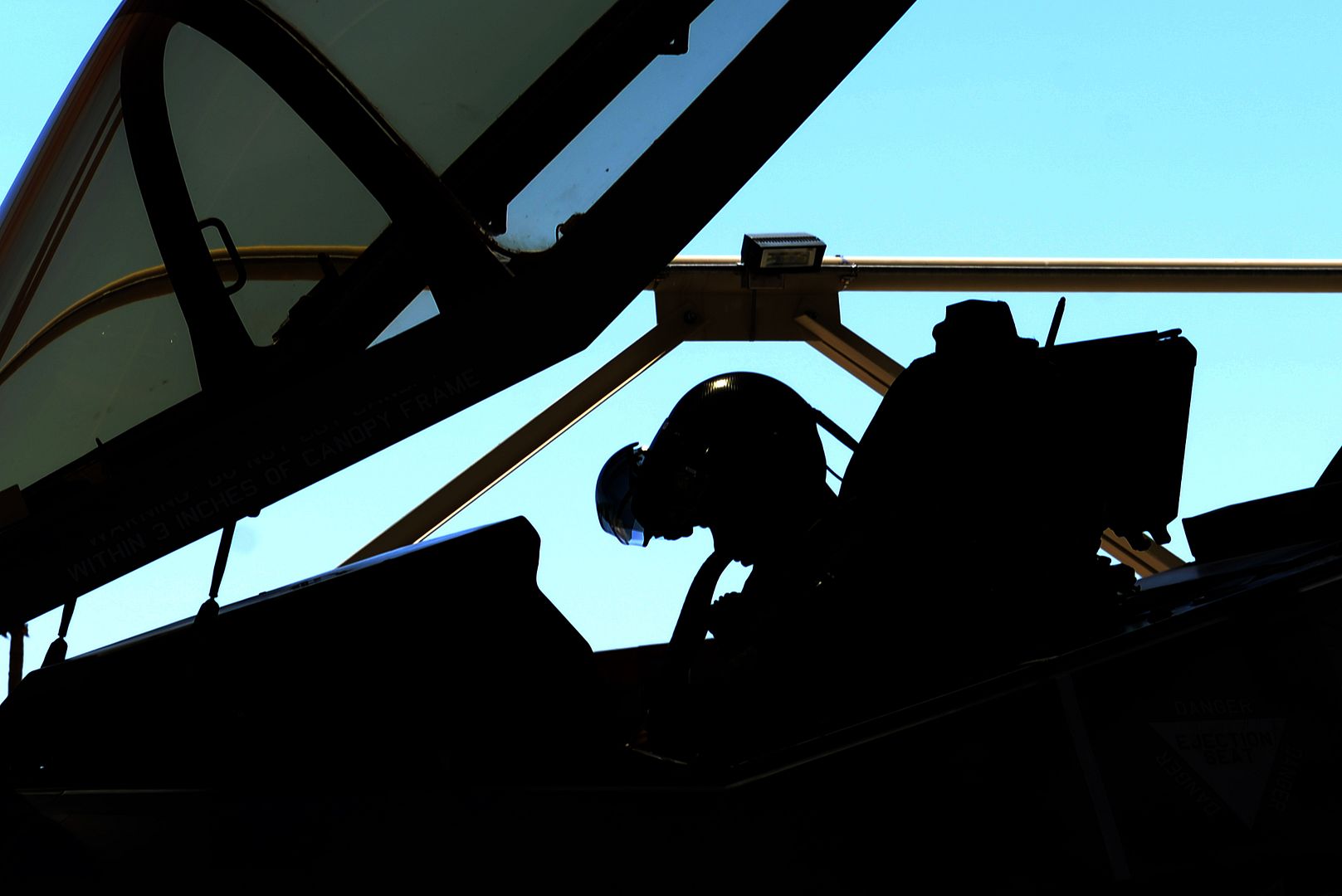
A 61st Aircraft Maintenance Unit maintainer inspects an F-35A Lightning II prior to its taxi-out and takeoff July 18, 2018, at Luke Air Force Base, Ariz. Pilots and maintainers perform thorough pre-flight checks before each sortie. (U.S. Air Force photo by Senior Airman Ridge Shan)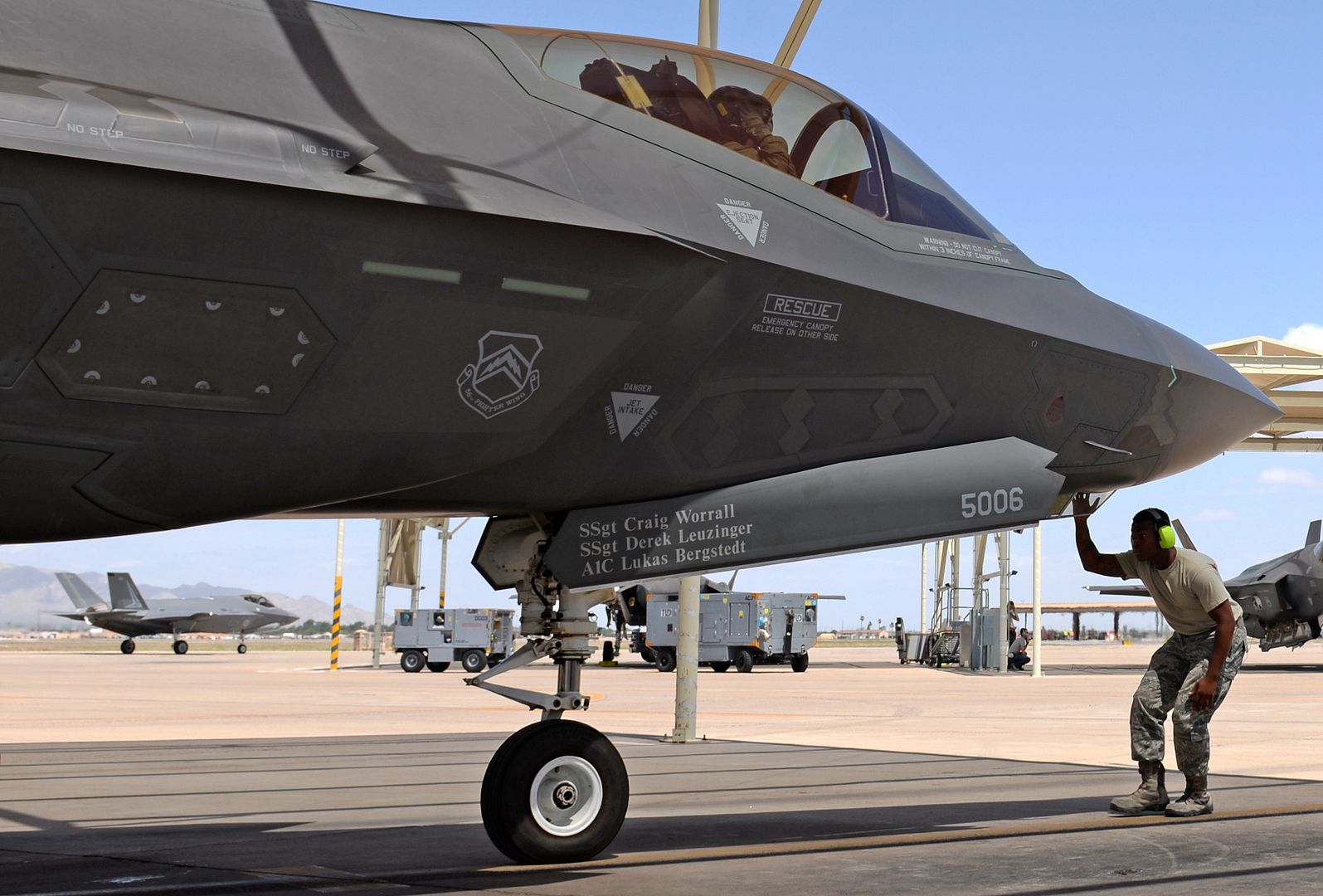
-
 Main AdminAn F-16C Fighting Falcon from the 31st Fighter Wing, 510th Fighter Squadron, Aviano Air Base, Italy, prepares to land at Royal Air Force Lakenheath, England, July 20, 2018. The 510th FS performs air and space control and force application roles of counterair, strategic attack, and counterland including interdiction and close-air support, employing state of the art munitions in support of the joint, NATO, and combined operations. (U.S. Air Force photo by Master Sgt. Eric Burks)
Main AdminAn F-16C Fighting Falcon from the 31st Fighter Wing, 510th Fighter Squadron, Aviano Air Base, Italy, prepares to land at Royal Air Force Lakenheath, England, July 20, 2018. The 510th FS performs air and space control and force application roles of counterair, strategic attack, and counterland including interdiction and close-air support, employing state of the art munitions in support of the joint, NATO, and combined operations. (U.S. Air Force photo by Master Sgt. Eric Burks)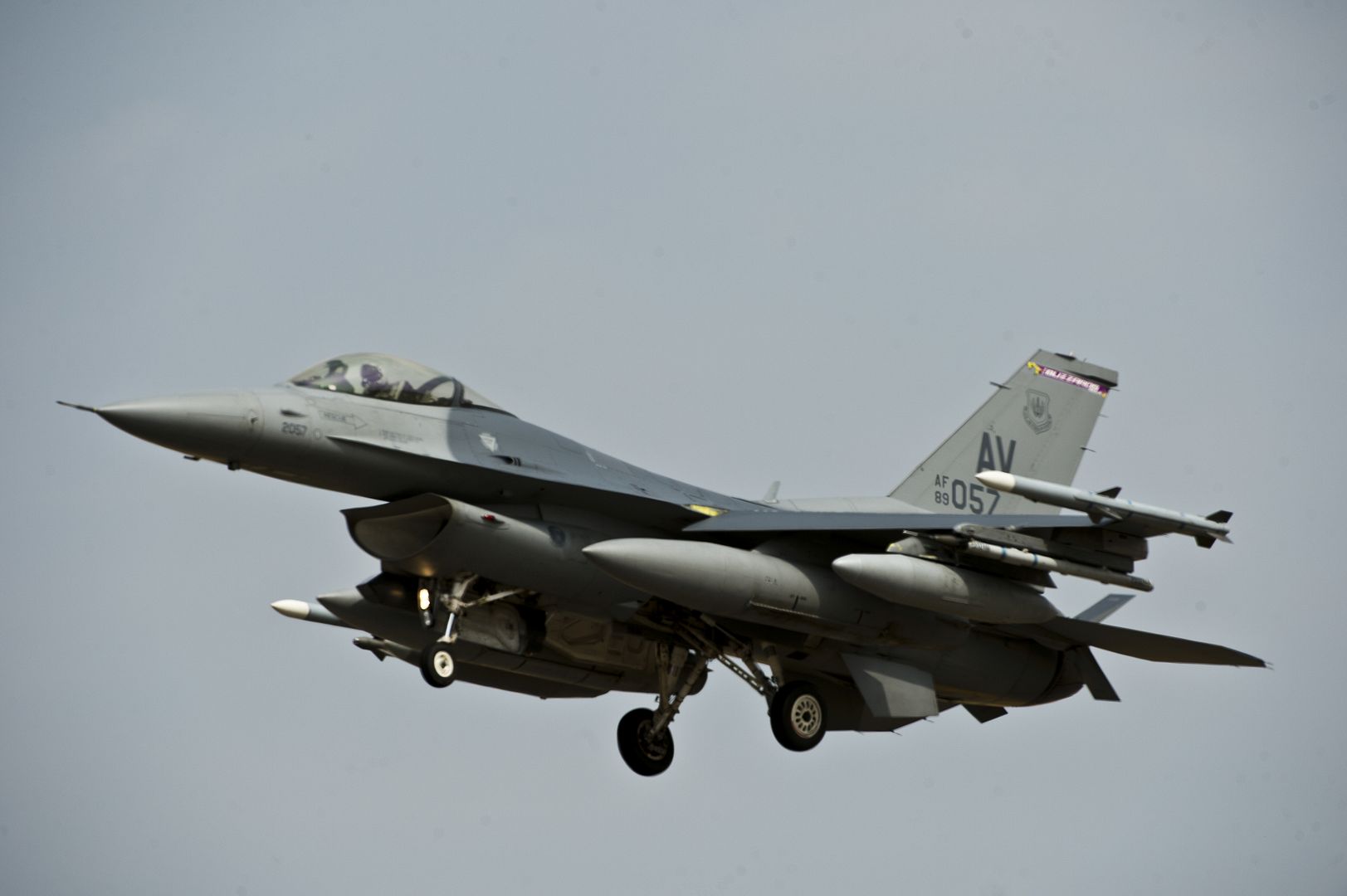
An F-16C Fighting Falcon from the 31st Fighter Wing, 510th Fighter Squadron, Aviano Air Base, Italy, lands at Royal Air Force Lakenheath, England, July 20, 2018. The 510th FS was originally formed as the 625th Bombardment Squadron (Dive), 405th Bombardment Group, at Drew Field, Fla., in 1943, flying the Douglas A-24 Banshee. (U.S. Air Force photo by Master Sgt. Eric Burks)
PHILIPPINE SEA (July 21, 2018) Sailors assigned to the Ticonderoga-class guided-missile cruiser USS Antietam (CG 54) provide fuel to a MH-60R Sea Hawk helicopter, assigned to the ?Warlords? of Helicopter Maritime Strike Squadron (HSM) 51, during a helicopter in-flight refueling (HIFR) evolution. Antietam is forward-deployed in the U.S. 7th Fleet area of operations in support of security and stability in the Indo-Pacific region. (U.S. Navy photo by Mass Communication Specialist 2nd Class William McCann/Released)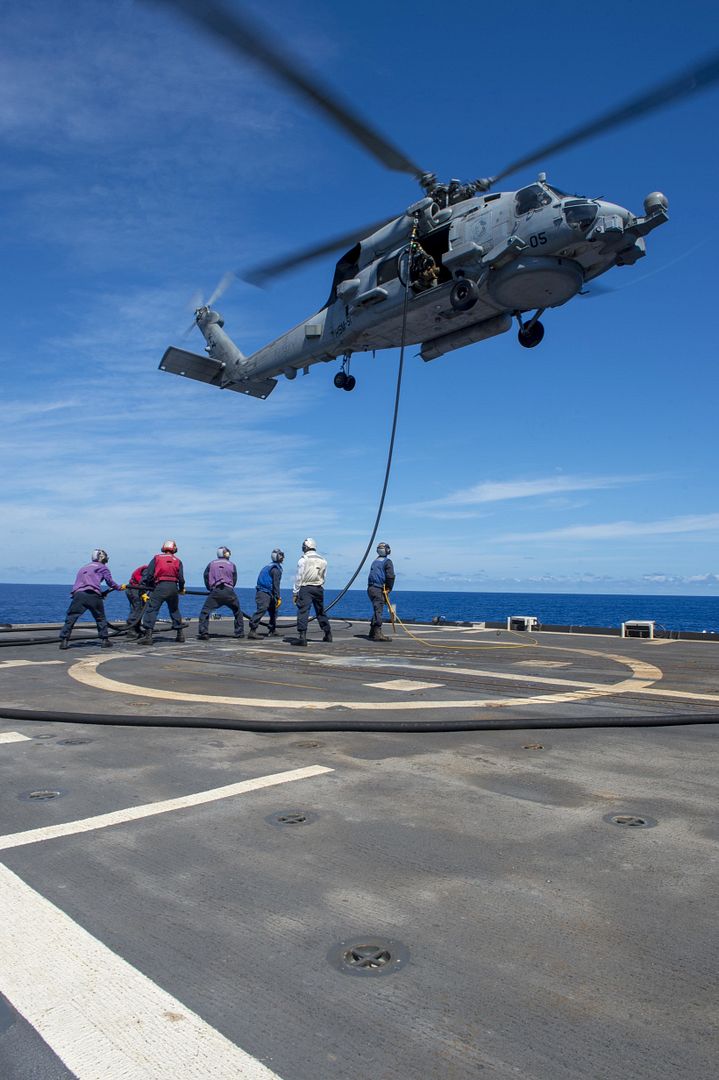
ANDERSEN AIR FORCE BASE, Guam -- --
The 96th Expeditionary Bomb Squadron (EBS) from Barksdale Air Force Base (AFB), La., assumed responsibility of U.S. Indo-Pacific Command's (INDOPACOM) Continuous Bomber Presence (CBP) missions from the 20th EBS, July 19, here.
The 96th Expeditionary Bomb Squadron (EBS) from Barksdale Air Force Base (AFB), La., assumed responsibility of U.S. Indo-Pacific Command's (INDOPACOM) Continuous Bomber Presence (CBP) missions from the 20th EBS, July 19, here.
After a six-month deployment in the Indo-Pacific theater, the 20th EBS has returned home to Barksdale AFB. While in Guam, the squadron flew deterrence missions and conducted a variety of joint and bilateral training missions with the U.S. Navy, U.S. Coast Guard, U.S. Marine Corps, Koku Jieitai (Japan Air Self-Defense Force), Republic of Korea Air Force and Royal Australian Air Force.
?It was an honor for the 20th crews to serve in the Indo-Pacific region by deterring our enemies and assuring our allies,? said Lt. Col. Maxwell DiPietro, 20th EBS commander. ?They were great representatives of both Air Force Global Strike Command and Pacific Air Forces throughout the deployment.?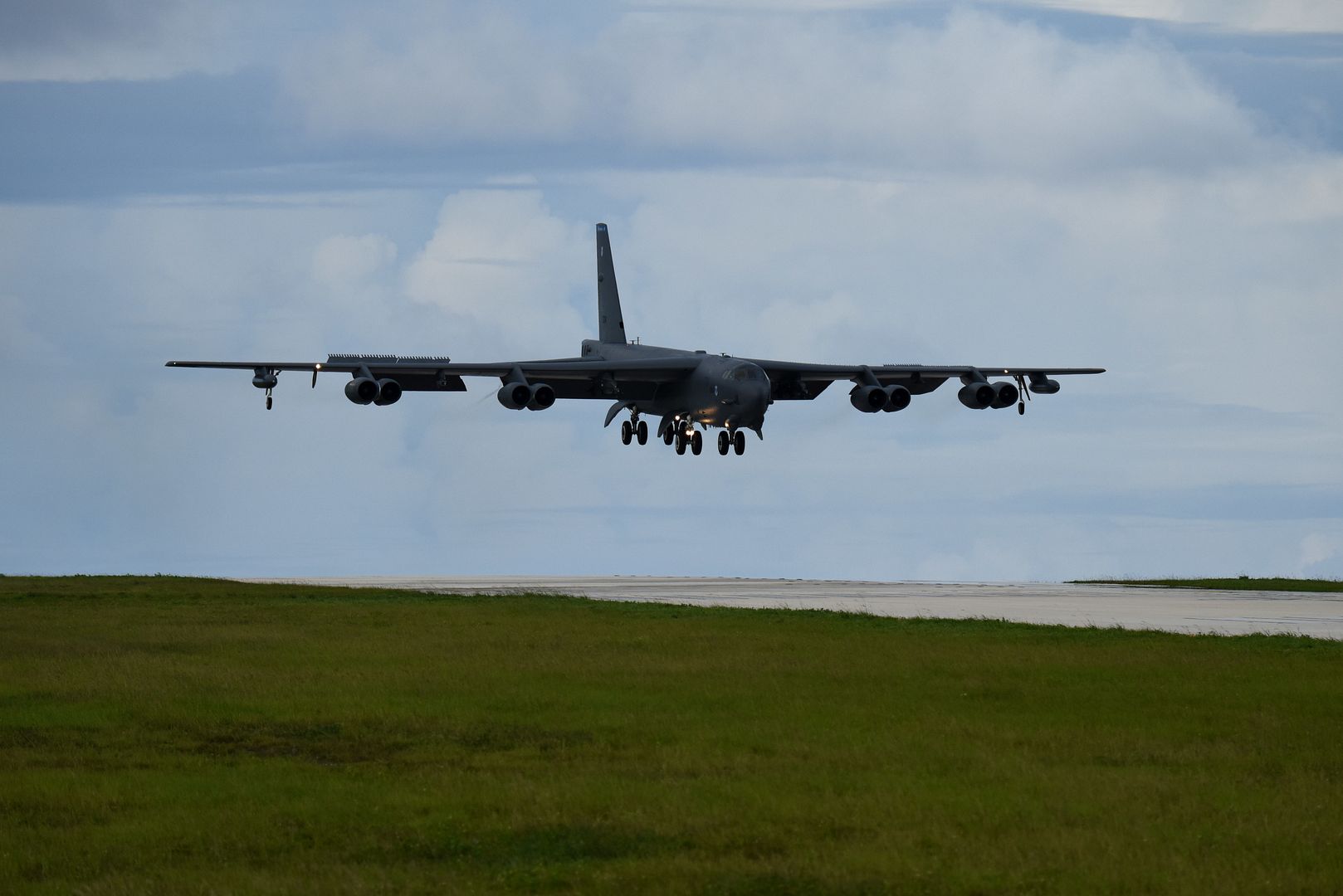
Much of the success of these missions can be credited to the Airmen that worked around the clock to keep the B-52s mission ready. Airmen from the 20th Expeditionary Aircraft Maintenance Squadron, the 36th Maintenance Group and the 506th Expeditionary Air Refueling Squadron directly contributed to the B-52's accomplishing all U.S. INDOPACOM?s directed missions.
Moving forward, the 96th EBS will fulfill all roles of U.S. INDOPACOM?s CBP missions on Guam. The 96th EBS?s repeated combat and operational experience from the U.S. Central Command theater brings a unique perspective to the Indo-Pacific.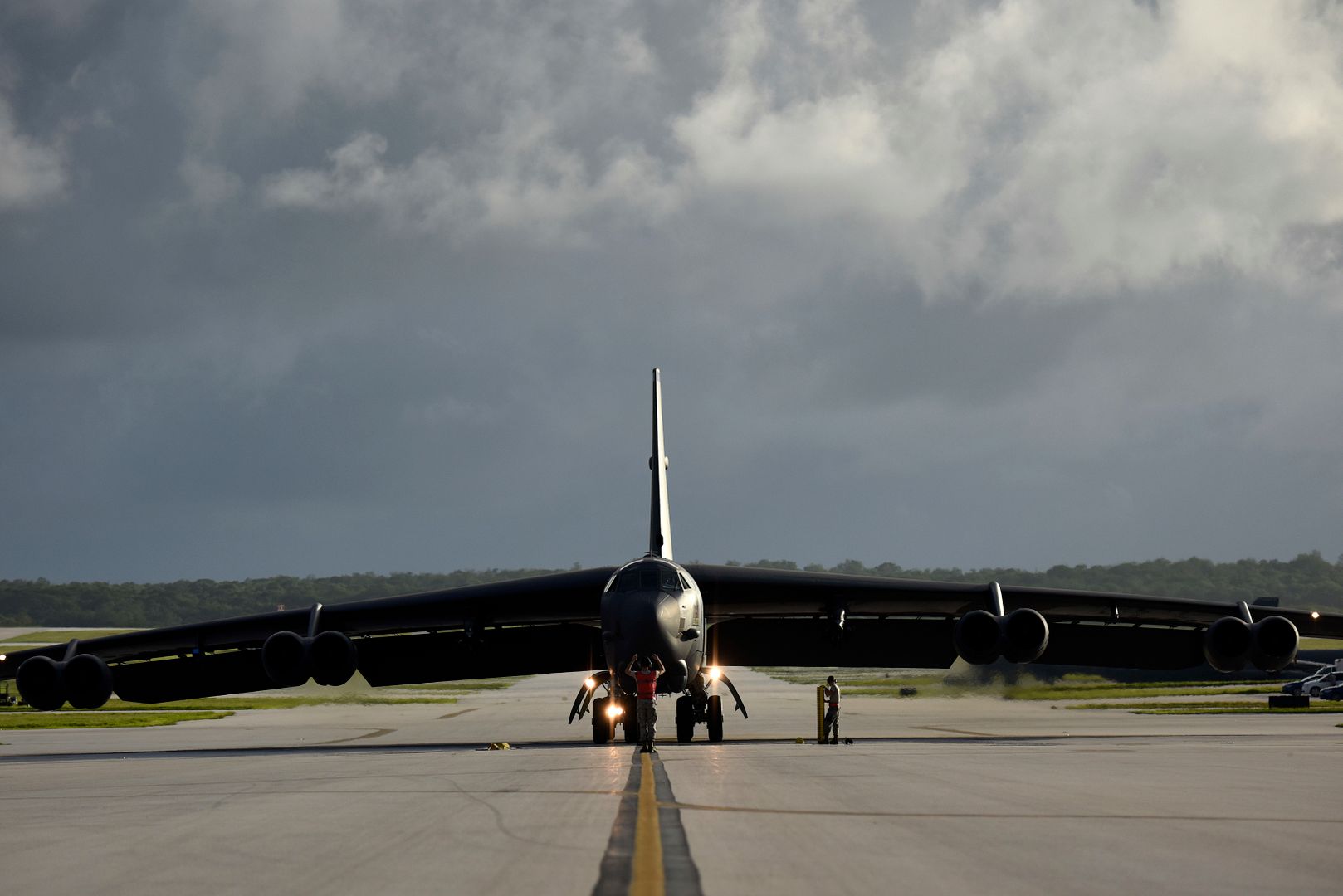
?We are excited to get to work projecting air power and start flying with our counterparts in the region,? said Lt. Col. Aaron Hendrick, 96th EBS commander. ?We will maintain flexible bomber capabilities ? and reassure our allies of our commitment to peace in the region.?
The employment of CBP missions in the Indo-Pacific area of responsibility, conducted since March 2004, are in accordance with international law and are vital to the principles that are the foundation of the rules-based global operating system.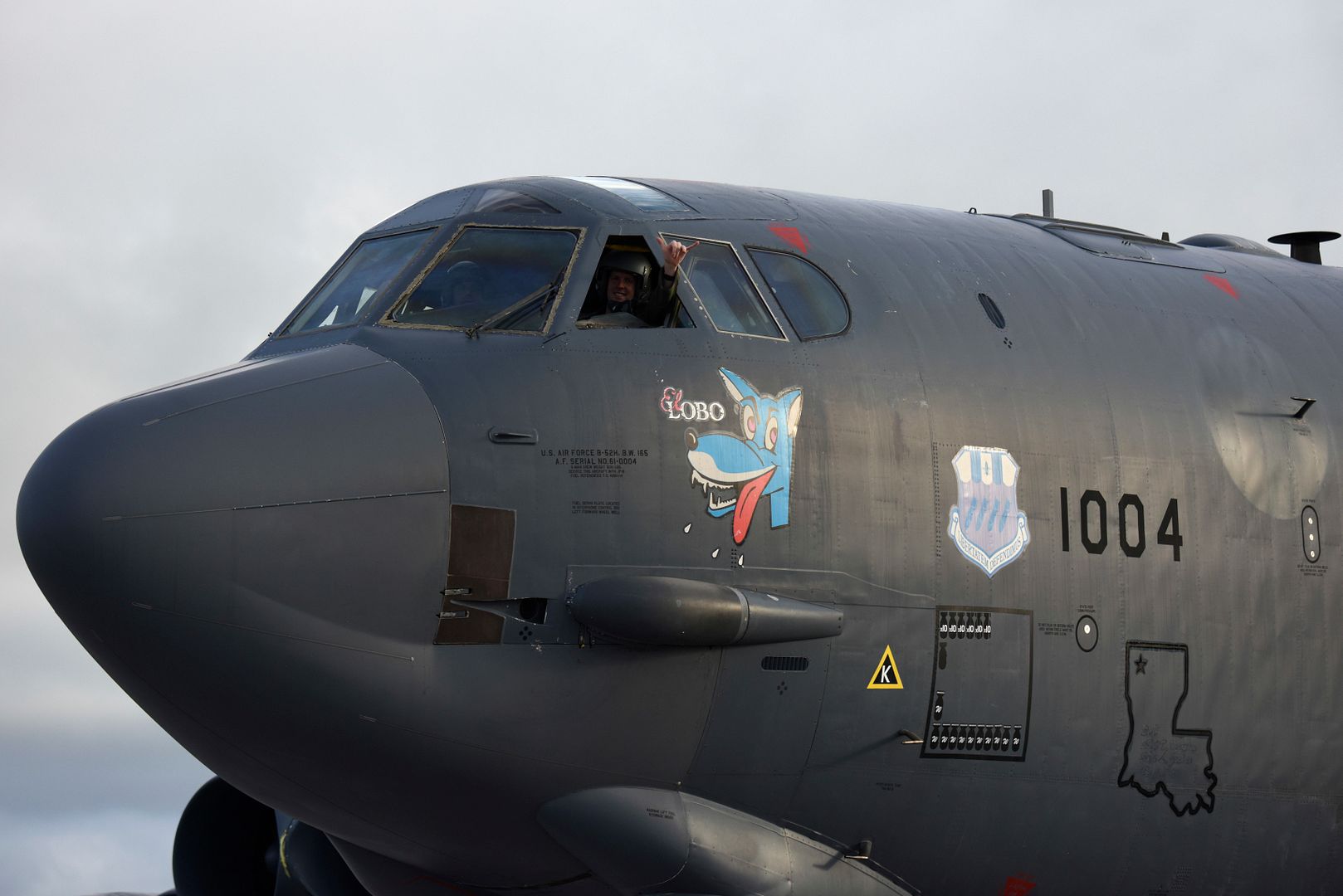
Post a reply
- Go to Next topic
- Go to Welcome
- Go to Introduce Yourself
- Go to General Discussion
- Go to Screenshots, Images and Videos
- Go to Off topic
- Go to Works in Progress
- Go to Skinning Tips / Tutorials
- Go to Skin Requests
- Go to IJAAF Library
- Go to Luftwaffe Library
- Go to RAF Library
- Go to USAAF / USN Library
- Go to Misc Library
- Go to The Ops Room
- Go to Made in Germany
- Go to Campaigns and Missions
- Go to Works in Progress
- Go to Juri's Air-Raid Shelter
- Go to Campaigns and Missions
- Go to Works in Progress
- Go to Skinpacks
- Go to External Projects Discussion
- Go to Books & Resources
